Kilton
The heart of the Farndale family for two hundred and fifty
years


Charles Farndale of Kilton Lodge John Farndale who wrote about Kilton
|
Return to the Home Page of the Farndale Family
Website |
The story of one family’s journey through two
thousand years of British History |
The 83 family lines into which the family is divided.
Meet the whole family and how the wider family is related |
Members of the historical family ordered by date of
birth |
Links to other pages with historical research and
related material |
The story of the Bakers of Highfields, the Chapmans,
and other related families |
A Guide to the History of
Kilton
The History of Kilton is in three Chapters:
1.
The Geography of Kilton. An
orientation section which explores the geography and key features of Kilton.
2.
The History of Kilton. A
study of the history of Kilton through the Middle Ages, through to the
seventeenth century, Victorian times and the early twentieth century.
3.
The Farndales of Kilton. This
section focuses on the close association between the Farndale family and Kilton
between about 1705 and 1940.
For ease of navigation:
Chapter headings
and sub headings are in brown.
Dates are in red.
Hyperlinks to
other pages are in dark
blue.
References and
citations are in turquoise.
Context and local
history are in purple.
Chapter 1 - The
Geography of Kilton
1.1 Kilton
Kilton is a village in the borough of Redcar and Cleveland in the County
of North Yorkshire. Once a thriving settlement, Kilton today comprises mostly
farmland, with a small settlement at Kilton Thorpe. To the east is the narrow
ravine of the Kilton Beck Valley through which the Kilton Beck flows towards
the sea at Skinningrove. In the midst of the heavily wooded area of that valley
lie the ruins of Kilton Castle. About 2km to the north is the town of Brotton and Carlin How and Craggs Farm. To the south of Kilton
Thorpe. There are the scrag heaps and disused buildings of the industrial graveland of the old ironstone mines.
From White’s History, Gazetteer and Directory for 1840 for
Yorkshire, East and West Ridings: KILTON, a small neat village, 6
miles NE by E of Guisborough, has in its township 80 inhabitants and 1,510
acres of land, all the property and lordship of John Wharton Esq and formerly
belonging to the ancient family of Thweng, who had a
castle here, of which some traces still remain. Directory: Jph
Newbegin, vict; Thos Robson, miller; and Matthew and
Martin Farndale, George Jennings, George Moore, Thomas Raw & Joseph
Thompson, farmers.
In The History of Kilton, With a Sketch of the Neighbouring
Villages, By the Returned Emigrant, Dedicated to the Rev William Jolley,
Toronto, Canada, America, Middlesbrough, Burnett & Hood, “Exchange”
Printing Offices, 1870, Redcar Cleveland Library Book No: R000040114
Classification: 942.854, Book No: R000040114, John Farndale wrote:
“No place can
equal Kilton for loveliness”, standing as it does, in the midst of sylvan
scenery, beautiful landscape and woodland scenery, and what a perfume of sweet
fragrance from wild flowers, particularly the primrose-acres that would
grace any gentleman’s pleasure ground for beauty and for loveliness. Kilton, as
it is situated, is fitted only for a prince.
We believe Kilton
had the pre-eminence of many of its neighbouring villages. We knew no
poachers, no cockfighters, no drunkards, or swearers. Kilton people were
church-going people, yet, on a Sunday afternoon, what hosts of young men and
young women mustered for play, their song was:
There is little
Kilton, lies under yon hill,
Lasses anew lad,
come when you will;
They’re witty,
they’re pretty, they’re handsomely bound,
A lo! for the
lasses in Kilton town
In A Guide to Saltburn by the Sea and the Surrounding
District, With remarks on its picturesque scenery, Fifth Edition, Dedicated to
John Thomas Wharton Esq of Skelton, By John Farndale.
Late of Skelton Castle Farm, Darlington, Printed by Charles W Hird, 1864,
John Farndale wrote:
Kilton stands
unrivalled for its antiquity, and its beautiful scenery cannot be
excelled. The brightest and fairest scenes in Italy cannot be compared
to the lovely prospects which Nature displays in this secluded part of
Cleveland. This place stands on a ridge of rich loomy
land, with Huntcliffe on the north, known to all
sea-men. On the east is the beautiful bay of Skinningrove and the hall
of AC Maynard Esq, formerly the residence of F Easterby Esq.
Skinnngrove was once a noted place for smuggling. On
the north west is Old Saltburn which was formerly considered the King of
the Smuggling World. Near which is New Saltburn, about to become one of the
most fashionable sea bathing places on the eastern coast, thanks to the
enterprising gentlemen who conduct the railway operations in this
neighbourhood, and who are the public’s benefactors, in a commercial, social
point of view, and are indeed, in every sense of the word, the friends of the
people.
In his memoires he described Kilton as "of great interest
with a great hall, stable, plantation and ancient stronghold in ruins (Kilton
Castle)". "It is still a small place" he says and he
describes how many have left it and made their name.
1616

Kilton: A Survey of a Moorland Fringe Township, by Robin
Daniels, 1990, includes the following reconstruction of the medieval
landscape of Kilton:
1767

The
following are extracts from the estate plan of 1767 (“Joseph Tullie’s Estate
Plan”), with many thanks to Tony Nicholson for his help and annotations.:
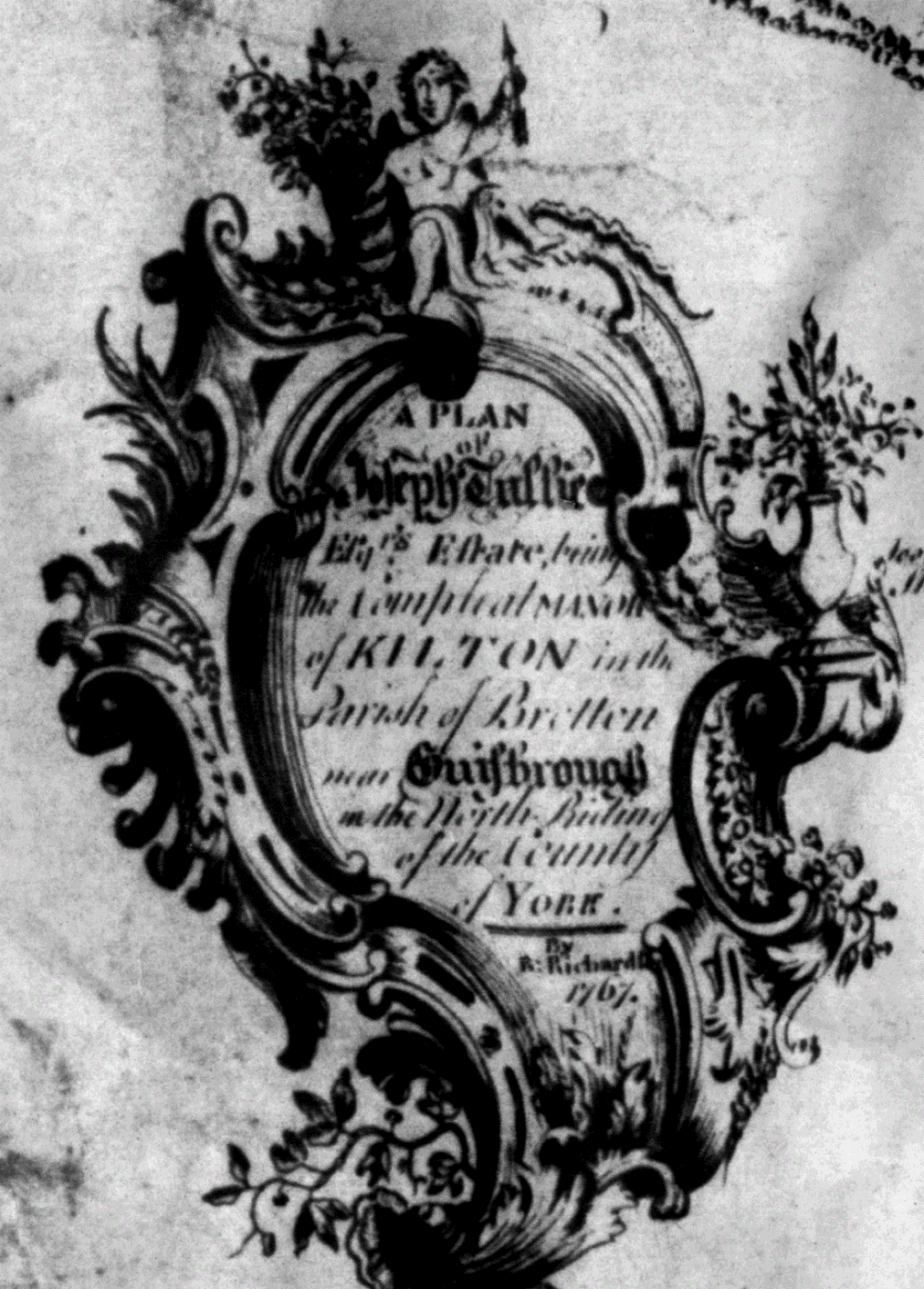
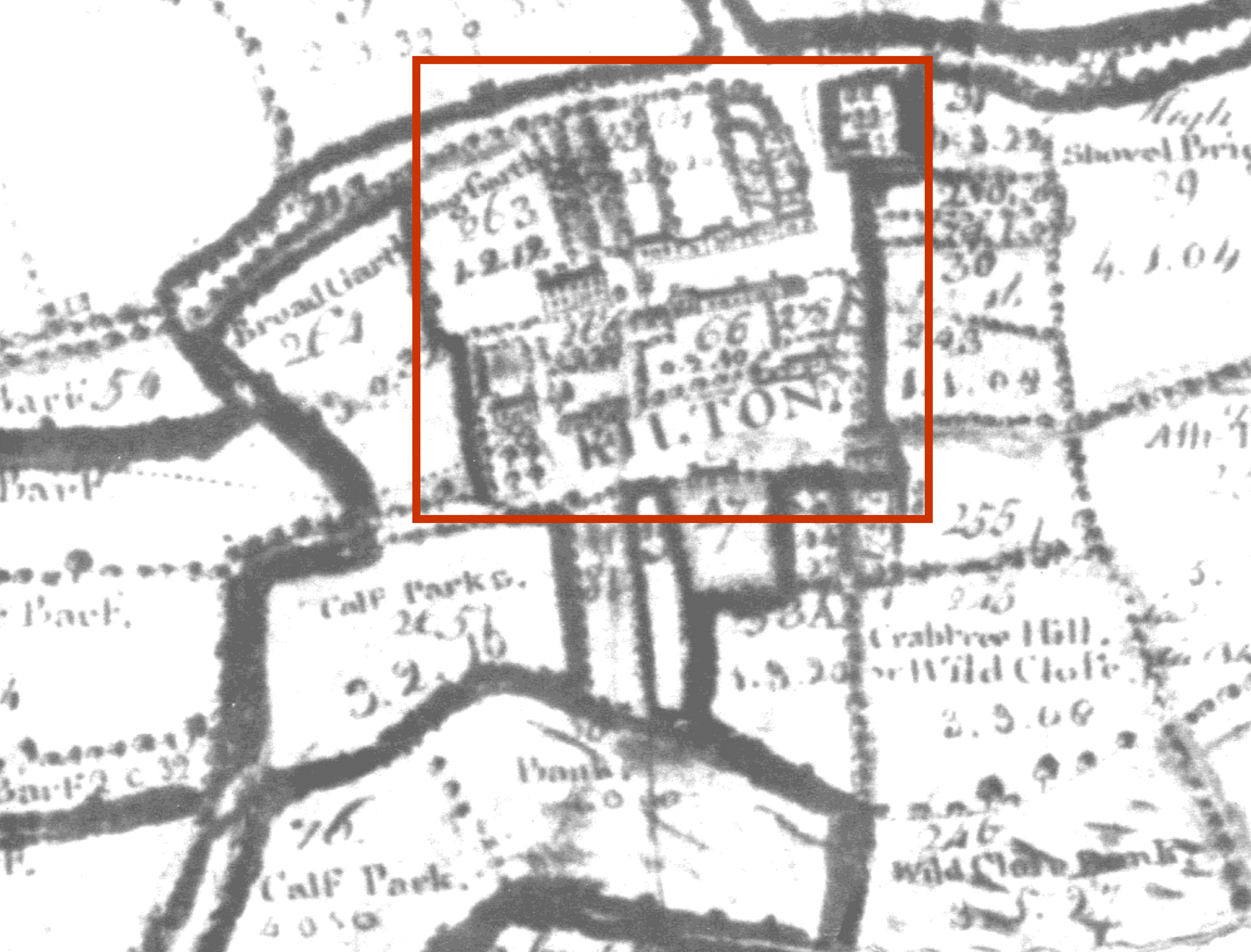
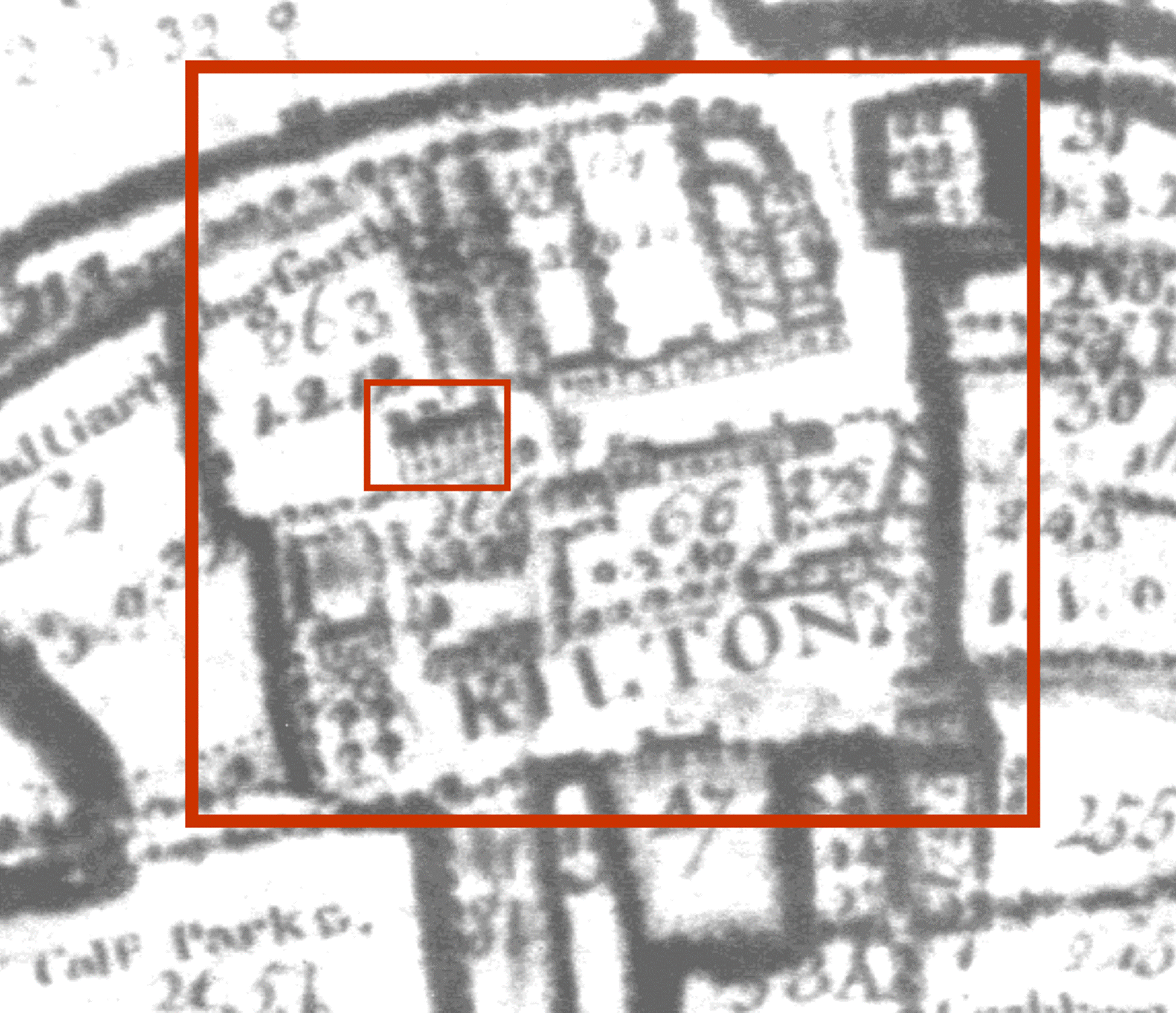
The
Village is highlighted by a red square
Kilton Hall is shown at the end olf the village street

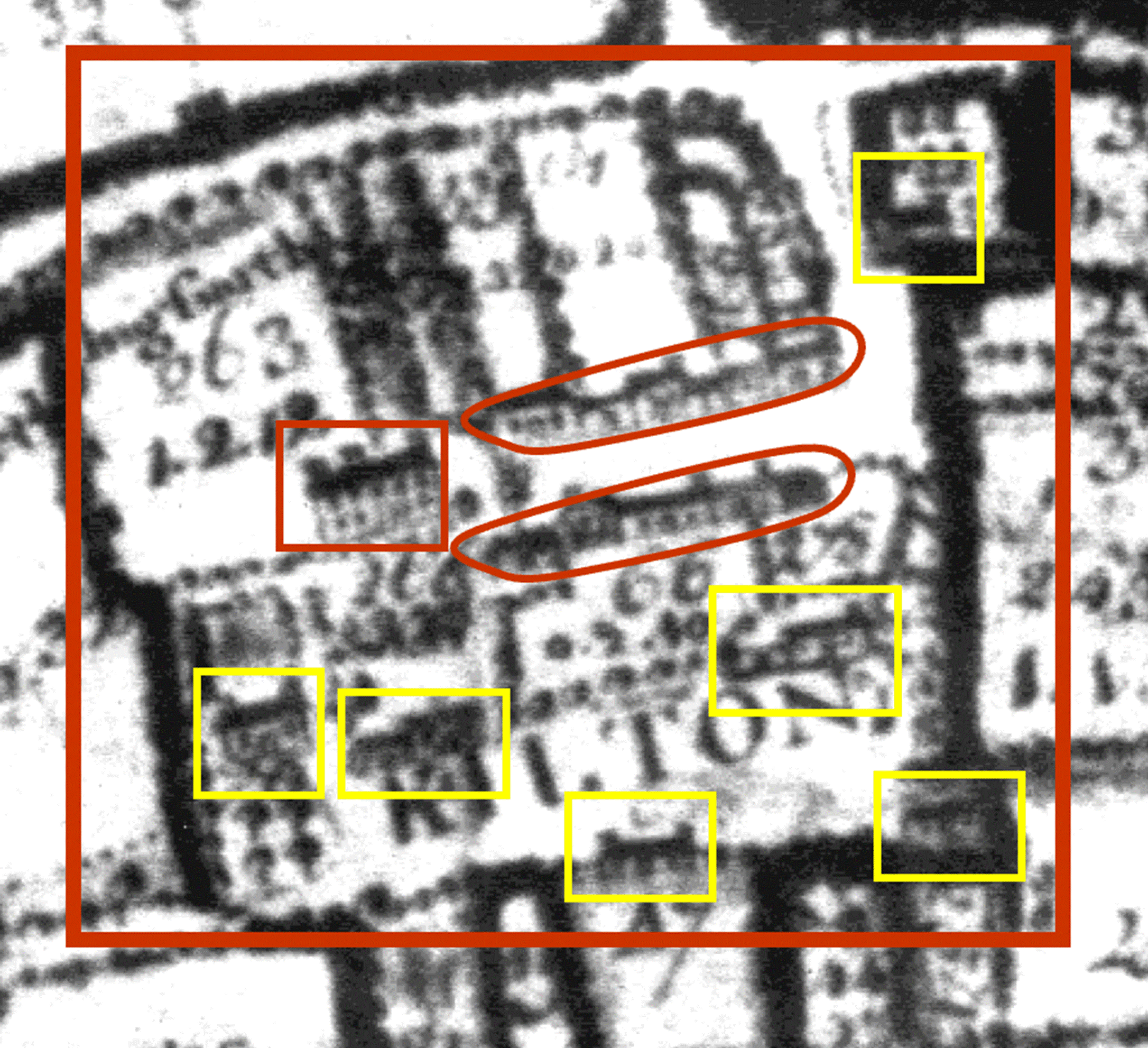
Five
houses on each side of the street, as described in John Farndale’s works.
Other houses highlighted yellow.
Kilton: A Survey of a Moorland Fringe Township, by Robin
Daniels, 1990, redrew the Kilton Township Estate Plan of 1767 onto the
1856 OS 6 inch map:

The
1767 map shows a landscape which, while containing much of the mediaeval past,
had undertaken a dramatic transformation. Enclosure of the mediaeval fields had
taken place and probably partly as a result of this the number of farmsteads
had increased from perhaps five in the mediaeval period to 8 in 1767. An Estate
village had been established at Kilton, a hunting lodge at Buck Rush, and a
number of new buildings had been built. In addition, two new roads had been
constructed, the first linking Brotton to Kilton Thorpe and cutting through the
enclosure boundaries of Middlefield, and the second running from Kilton Lane to
the new farm at Stank House, which continued on to the Lodge and Buck Rush. The
last of these roads survives much as built and is a fine example of a broad
18th century road which contrasts markedly with its mediaeval predecessors.
The
Kilton of 1767 was very different from medieval Kilton. While some of the
medieval properties either side of Kilton Lane had buildings on them, the
village had been moved to the north. A finer state village had been created,
with a street and green and two rows of cottages facing each other across it. A
post mill was shown at the western end of the South row.
There
is a 1773 estate map which is unhelpful in its depiction of Kilton, but
includes some representation of Craggs. It doesn’t reach the area of the main
village and Hall.
Extract from A map of an Estate belonging to John Hall
Stephenson Esq lying at Skelton and Brotton in Cleveland in the North Riding of
the County of York, produced in
1773 after a survey by Watson and Seagrave (Kindly provided by Tees Archaeology)
The
street and green were not a thoroughfare, and only gave access to the hall and
there is no trace either on the ground or maps of there ever having been a
thoroughfare. The new two row settlement cut existing property boundaries.
1845
By
1845 this village was in decay. There was no indication of the post mill and
new sets of buildings had begun to develop to the east of the road. The tithe
map of 1845 shows the estate village in decay and it is obvious that the
reorganised landscape was not being sustained. The lodge had disappeared as had
the buildings at the earthworks at Stank House and two of the farms within the
western arm of the Township. The Township was reverting to an intensity of
settlement very similar to that evidenced in the medieval. Land use in 1845 was
predominantly arable, as it had been in the medieval period, but there seems to
have been more pasture then at the height of medieval cultivation.
1853

Kilton
1853 showing Kilton, Lumpsey (top left) and Buck Rush (bottom centre)
1856
The
1856 map shows this decay continuing, a courtyard farm under development in the
north row and the present kilton Hall Farm had been built to the South of the
village, probably indicating the absence of the landowner and the establishment
of a substantial tenant farm.
The
1856 Map of Kilton, surveyed in 1853:
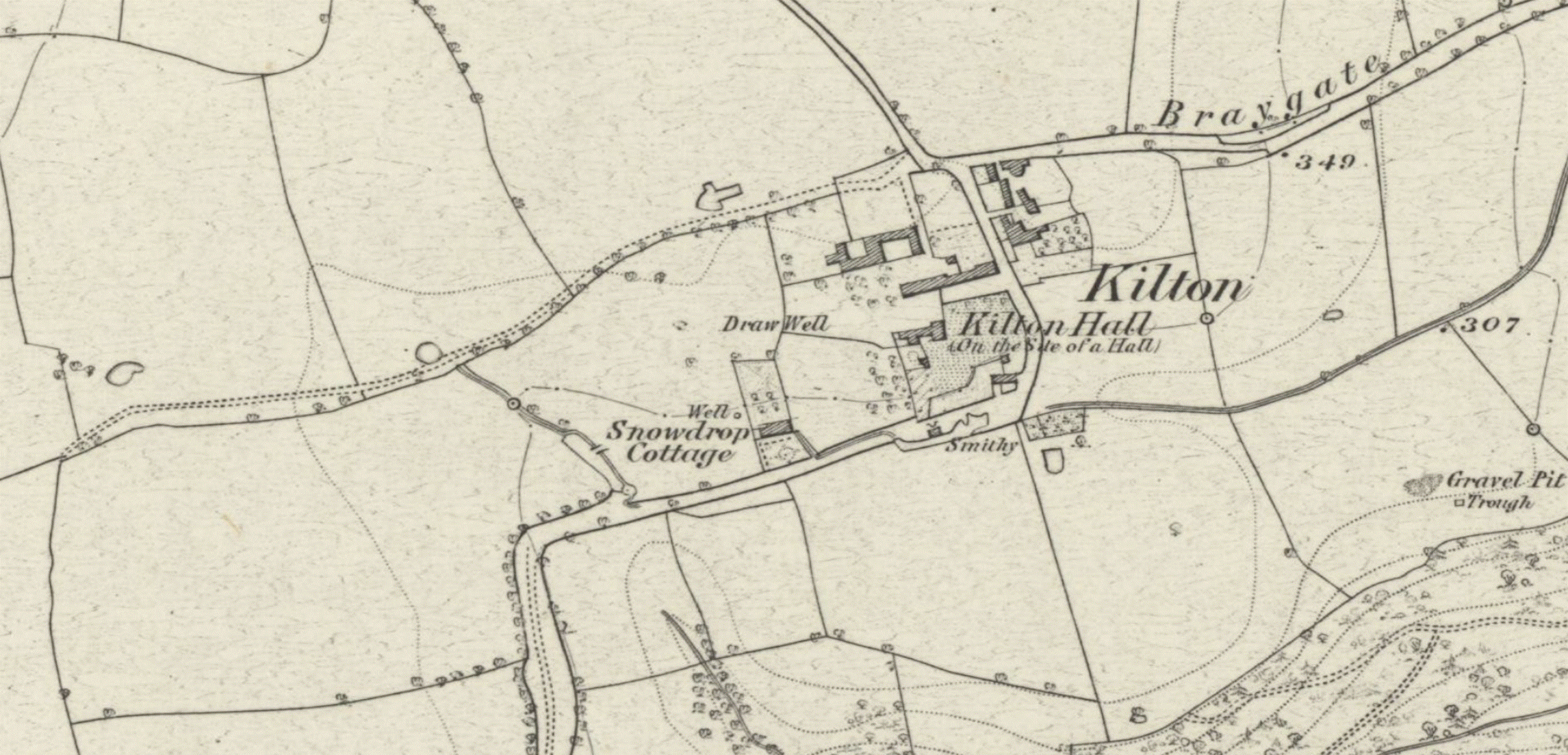


1888
Kilton in 1888:

1893
Kilton in 1893:

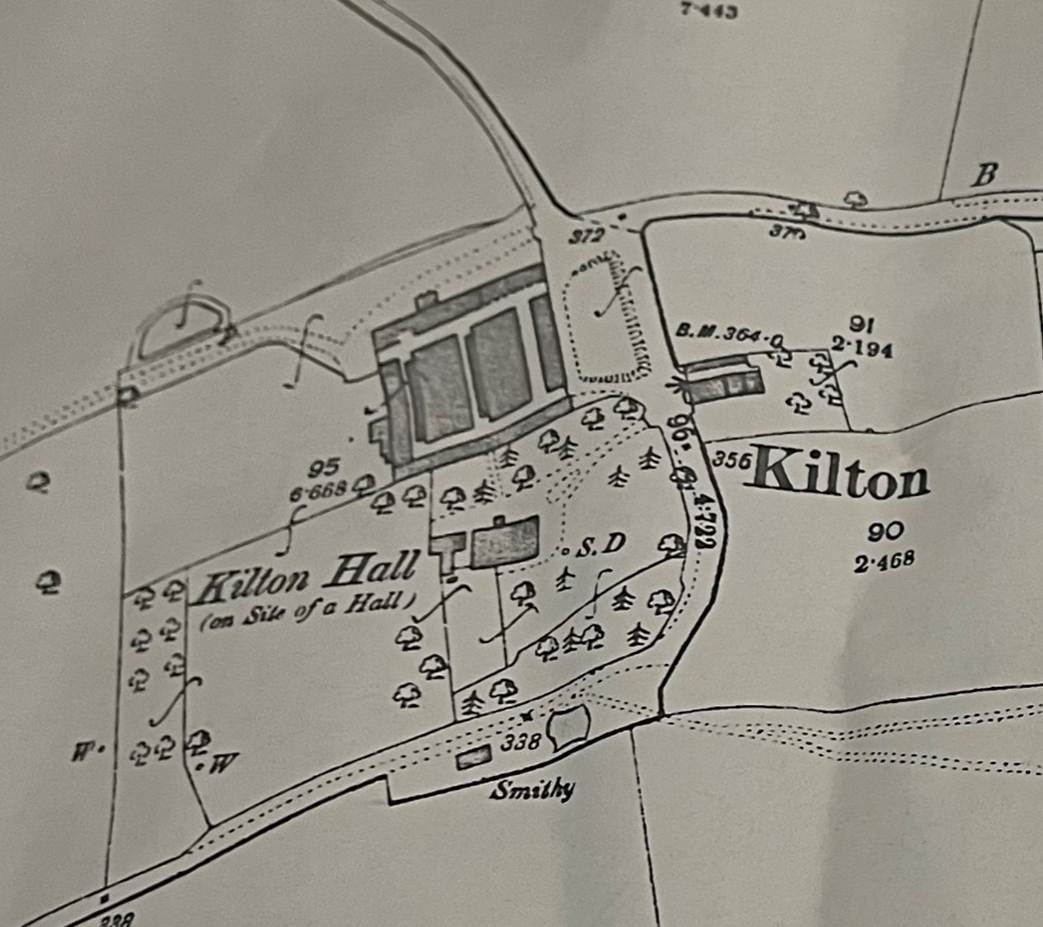
Substantial changes occurred at Kilton in the late nineteenth century.
The estate village was demolished and a range of brick built farm buildings
were constructed over the site of the village. These buildings served Kilton
Hall Farm, which was the only domestic dwelling to the west of the road. On the
opposite side of the road, a row of estate cottages were built in the same
architectural style as the outbuildings.
Following the failure of the reorganisation of the landscape in the
eighteenth century, a consolidation took place in the nineteenth century,
perhaps between 1870 and 1893 and certainly between 1856 and 1893. The attempt
to foster a village at Kilton was abandoned and a single, substantial farm was
established. To the west, Greenhills Farm moved from its position on the
western boundary into the centre of its area. Elsewhere within the Township
farmhouses were renewed and a state cottages built. The financing of these
measures may well have been derived from the ironstone mines, but there is
little else to indicate the impact of industrialization on the landscape. The
estate and Township were not dependent on industry and so the landscape of
Kilton survived the closing of the mines extremely well and the Township today
is primarily an agricultural landscape, almost completely given over to crop
production.
There are a few areas of grassland which coincide with the original
medieval earth works.
The area now consists of individual farms with the exception of the small
hamlet at Kilton Thorpe, the school of which has since been converted into a
private dwelling. The estate workers’ cottages at Kilton and adjacent to the
castle remained in use by the estate. The steep sided valley of Kilton Beck
became heavily wooded. There was some small scale quarrying in the valley, but
this was unobtrusive.
The ironstone mining finished in the 1960s and has left behind the great
spoil heap at Kilton mines. The earthworks of the railways, built to service
the mines, still survive along with a solitary signal post which is set to
halt.
Modern Kilton:
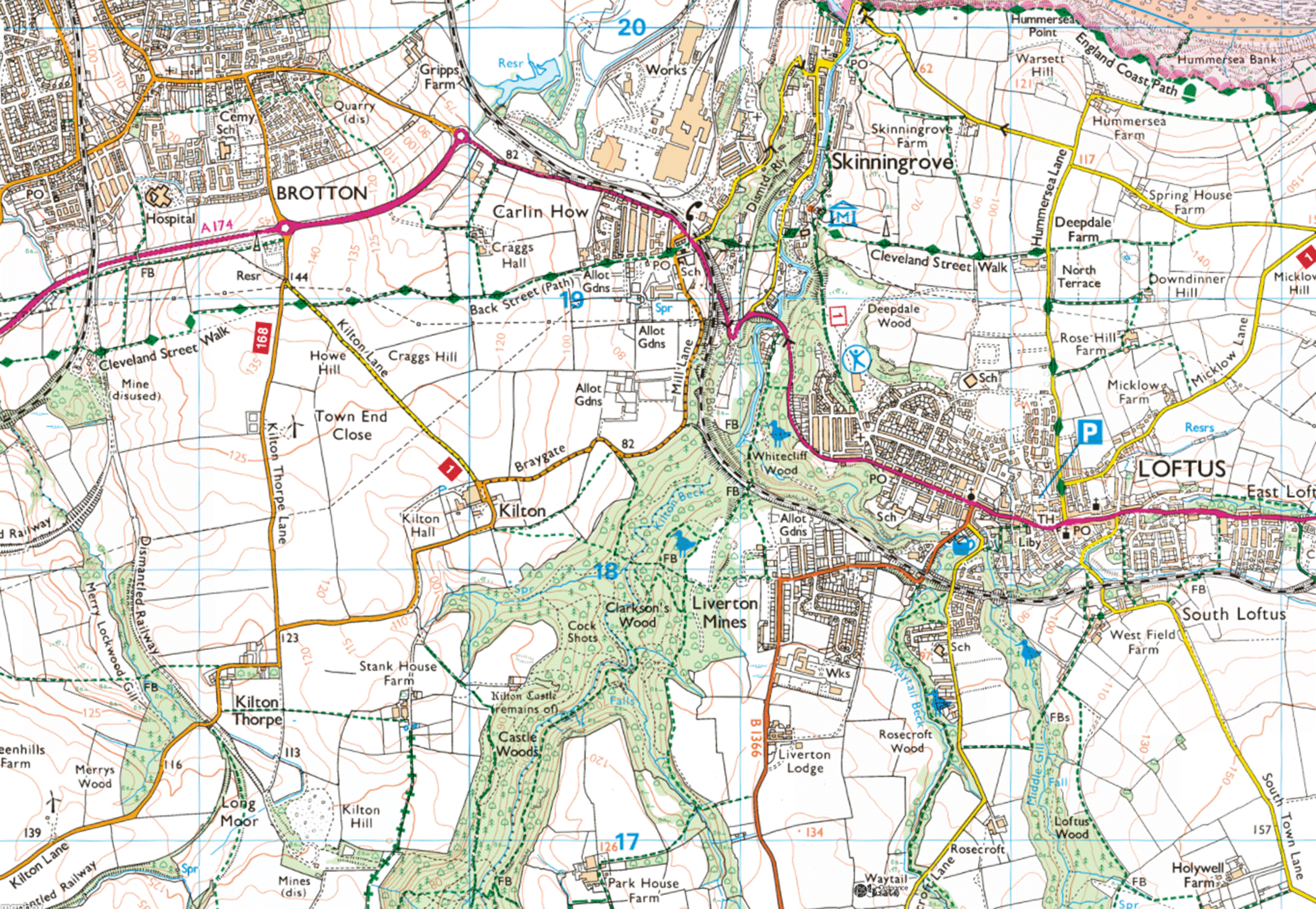
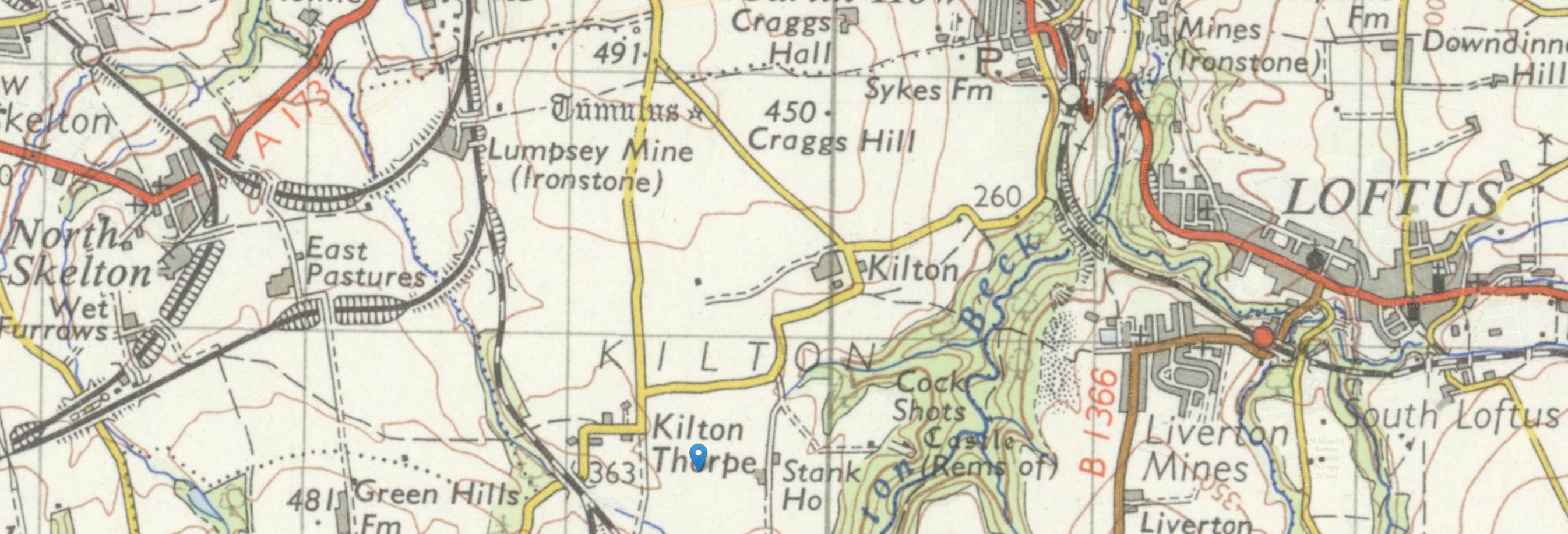



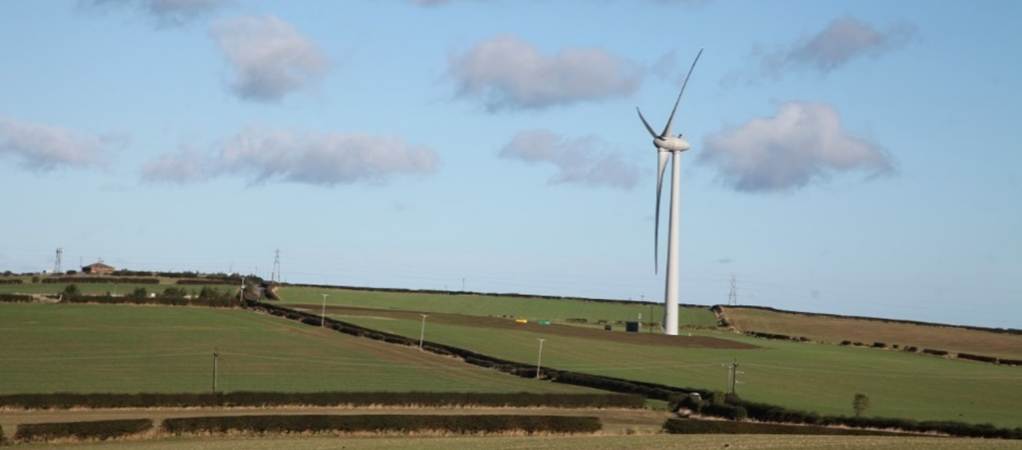
Countryside at
Kilton in 1980
and in 2016
1.2 Kilton Hall
A Guide to Saltburn by the Sea and the Surrounding
District, With remarks on its picturesque scenery, Fifth Edition, Dedicated to
John Thomas Wharton Esq of Skelton, By John Farndale.
Late of Skelton Castle Farm, Darlington, Printed by Charles W Hird, 1864:
Kilton Hall as in ages past
Most beautiful to all around,
Ah! ruthless hand that gave command,
And now no trace of it is found.
Kilton formerly
belonged to the Twings and Lumleys,
who were lords of the manor. Dr Waugh, Dean of Carlisle, and Miss Waugh, into
whose hands the estate came, sold it to Mrs Wharton, and this lady made a
present of it to the late J Wharton, Esq., of Skelton
Castle, MP for Beverley, a gentleman of memorable name. Here was built a neat
hall, much admired, and when the sun early n the
morning cast its beams upon it and lit its vast windows with Nature’s glory, it
was a sight to affect the heart and raise the thoughts to the Great Source of
all beauty and splendour, both in nature and grace. A spirit of jealousy led to
this fine structure being pulled down, and now not one stone on another remains
to tell where it once stood, except stables, granaries and coach houses, yet in
good preservation. In this township too stands an old Norman Castle. Few ruins
in England can vie this venerable relic of Norman architecture. There is also a
fortress here, which in the olden times must have been impregnable. This baronial
fortress was no doubt the most powerful one in Cleveland, and in the days of
cross bows, broad swords, and battle axes it would be quite secure. But when
Cromwell, that inveterate foe to all Roman edifices, came near, he heard and
was led by the bell at noon, to the opposite mount, levelled his destructive
cannon against this structure, and brought it to the ground.
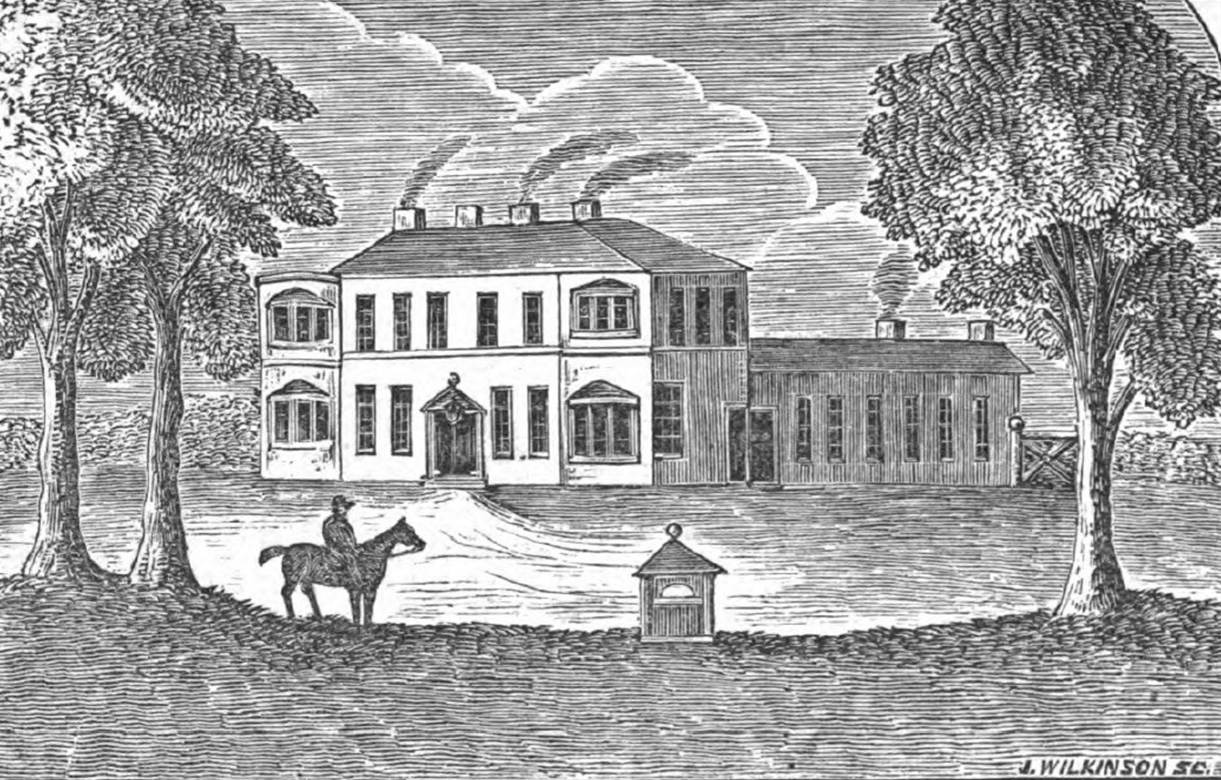
Kilton Hall,
Sketched from memory (as it stood in 1795) specially for the Guide, this being
the birthplace of the Author.
… Kilton Hall
was a very neat building, with stables, coach houses, lawns and plantations,
and the old castle adjoining had a fine bowling green and excellent fish ponds,
fed by a rivulet running through a field close by, and which was in a good
state of preservation until it was lately filled up and ploughed. Contiguous to
the old castle walls there was a fine orchard, which I had the management of
about fifty years ago. But this has nearly gone into decay – the towering pear
and other fruit trees have become leafless and dead, and withered like an old
man ripe from the grave. Such are the changes which a few years make. Thus, it
is with inanimate things, so it is with us. We must all fade as a flower, we
must all die, for all flesh is grass. “The grass withereth,
the flower fadeth, but the word of the Lord endureth for ever”.
Here, let me not
forget to notice that, in this enchanting park, rich preserves of game of all
kinds, especially that most beautiful bird the pheasant, are numerous, and
almost all other game. I have seen rise out from new sown wheat, in my father’s
castle field, no less than eighty pheasants at one time. Fifty years later, on
my last visit to the old castle, I saw rise out of the same field fifty
beautiful pheasant cock, when they soon buried themselves in the vast forest
around the old castle. It was here Redman, the poacher’s gun burst and blew out
his eye. It was also here Frank, the keeper, shot a large eagle near the old
castle, which is now preserved.
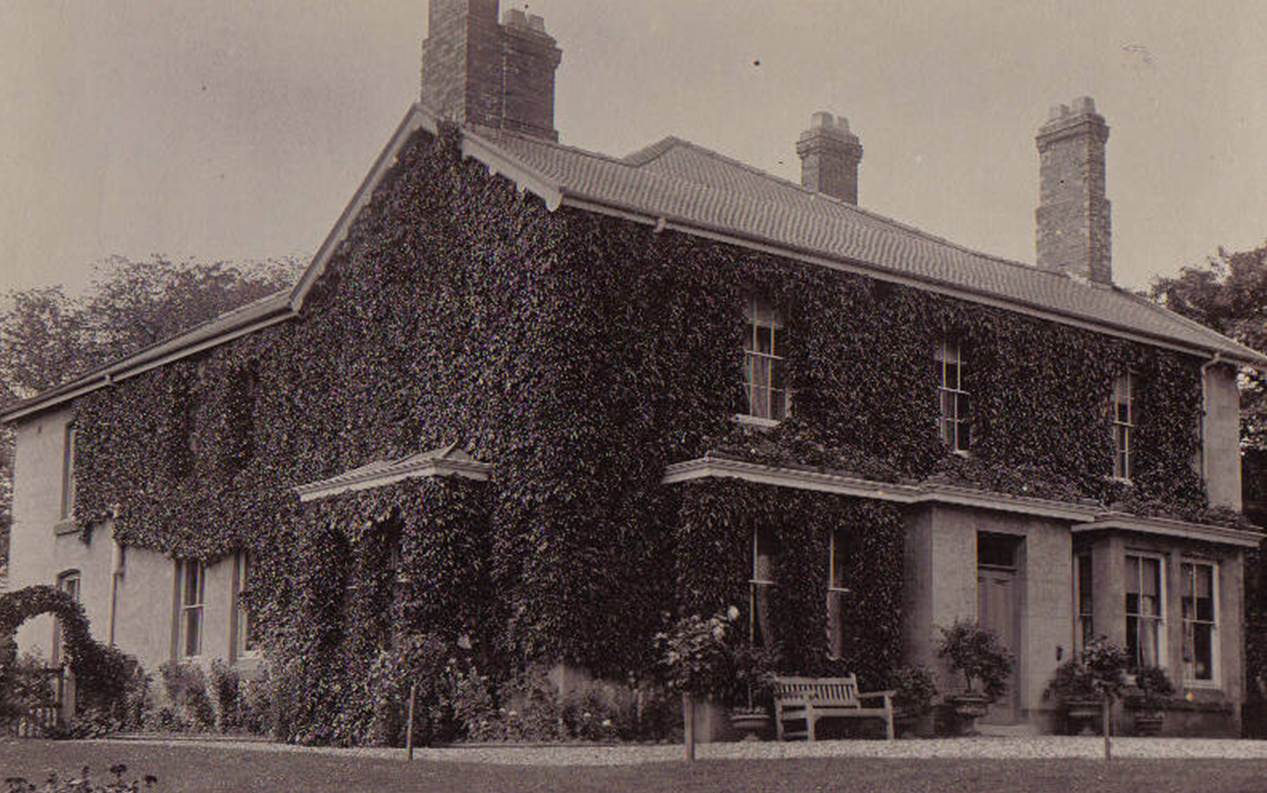
Kilton Hall in
about 1890
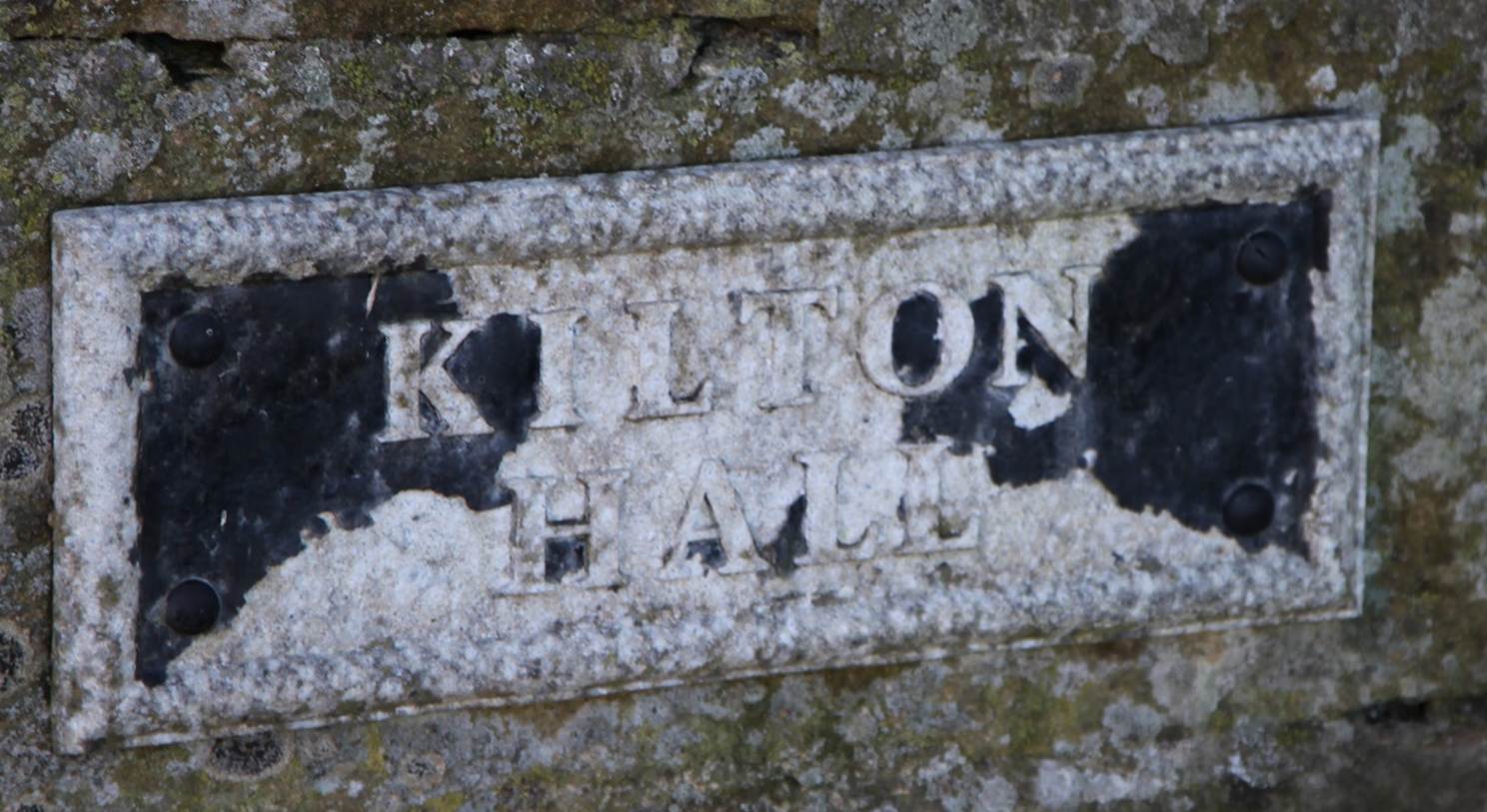
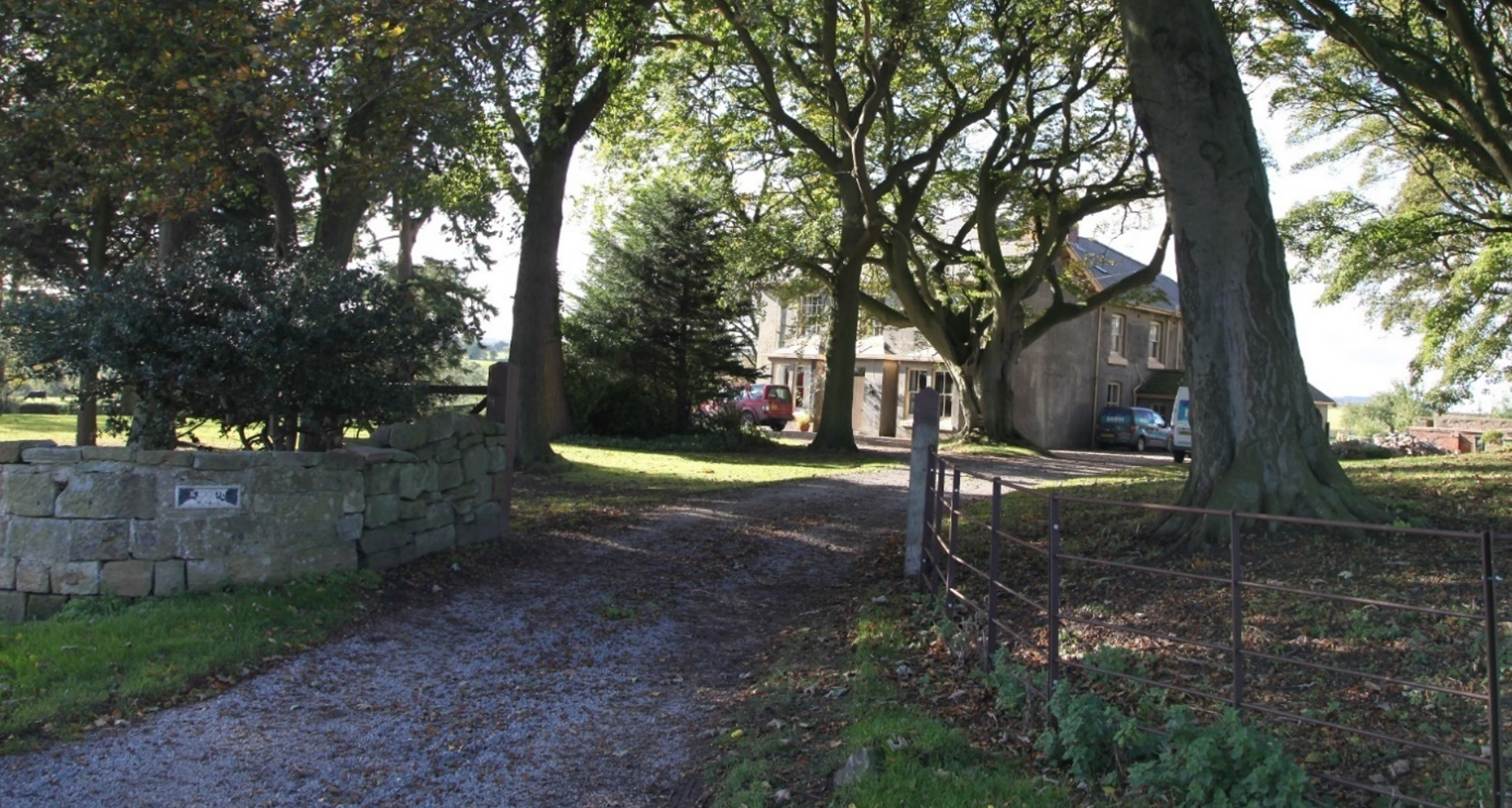
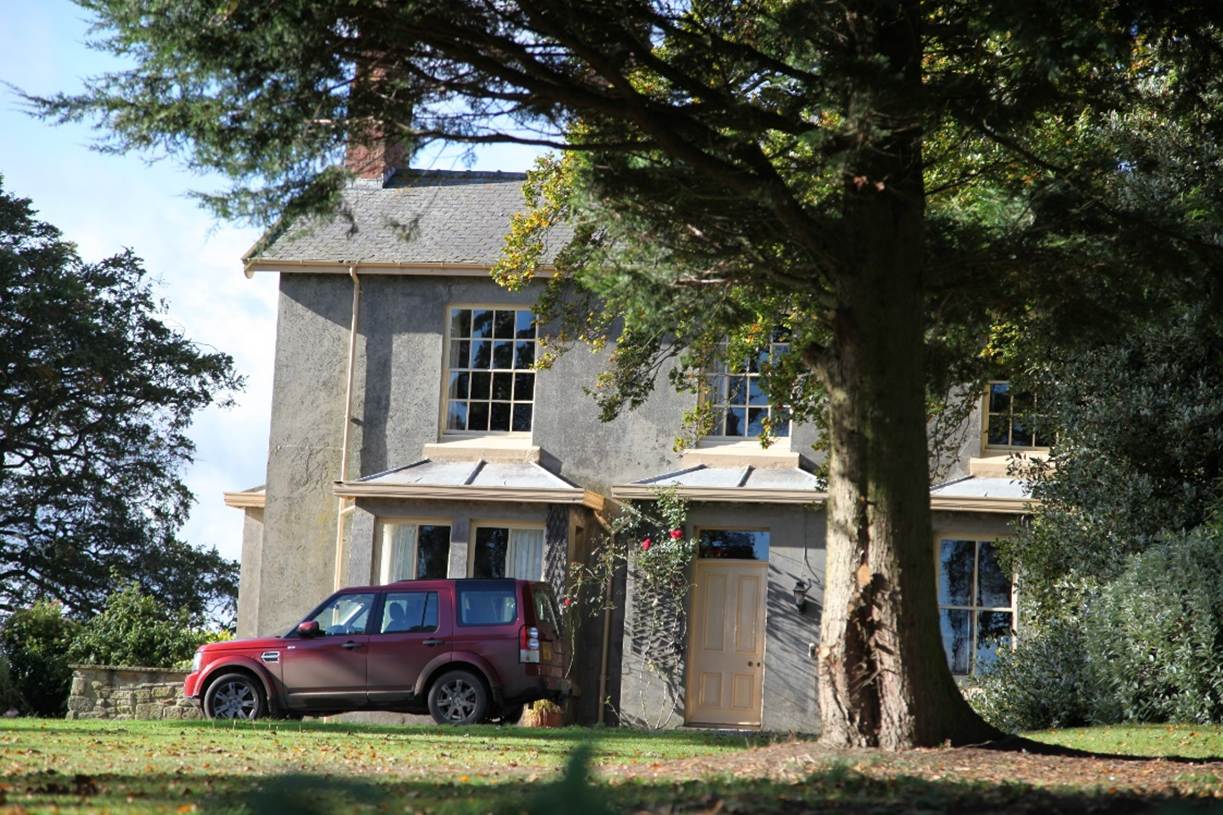

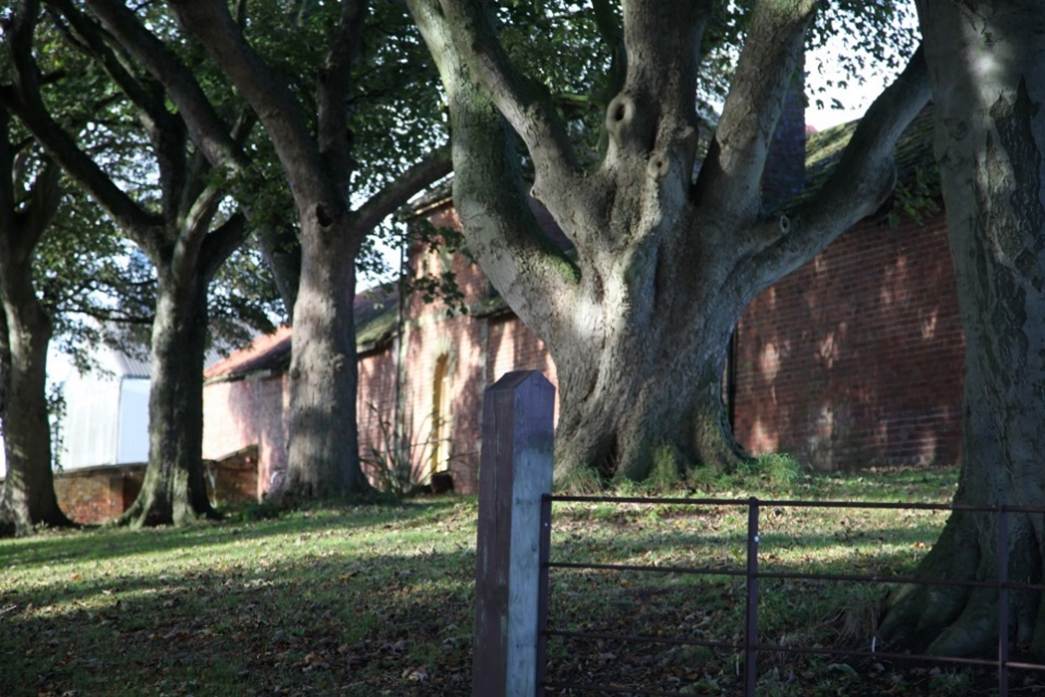
Kilton Hall in
2016
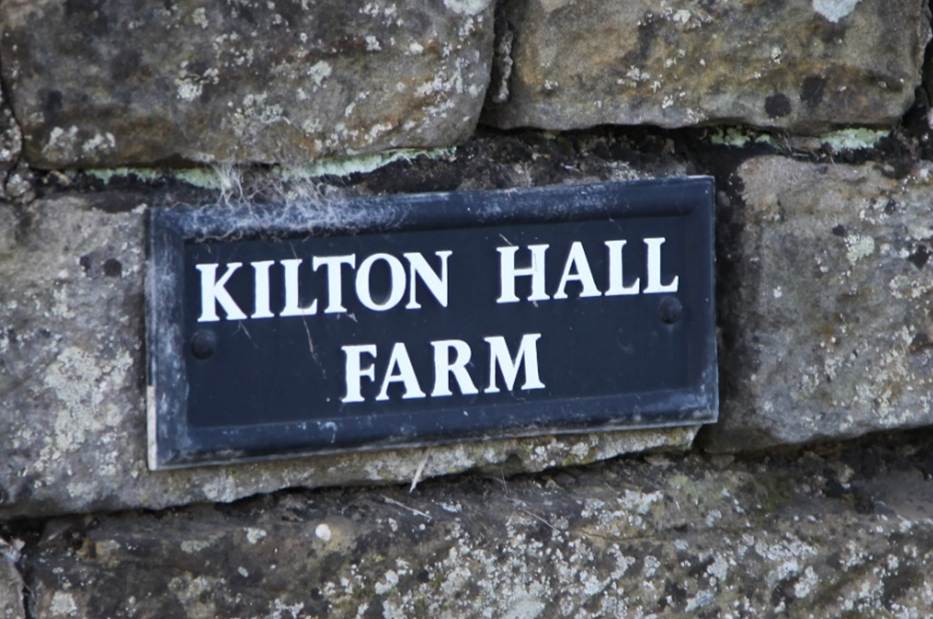
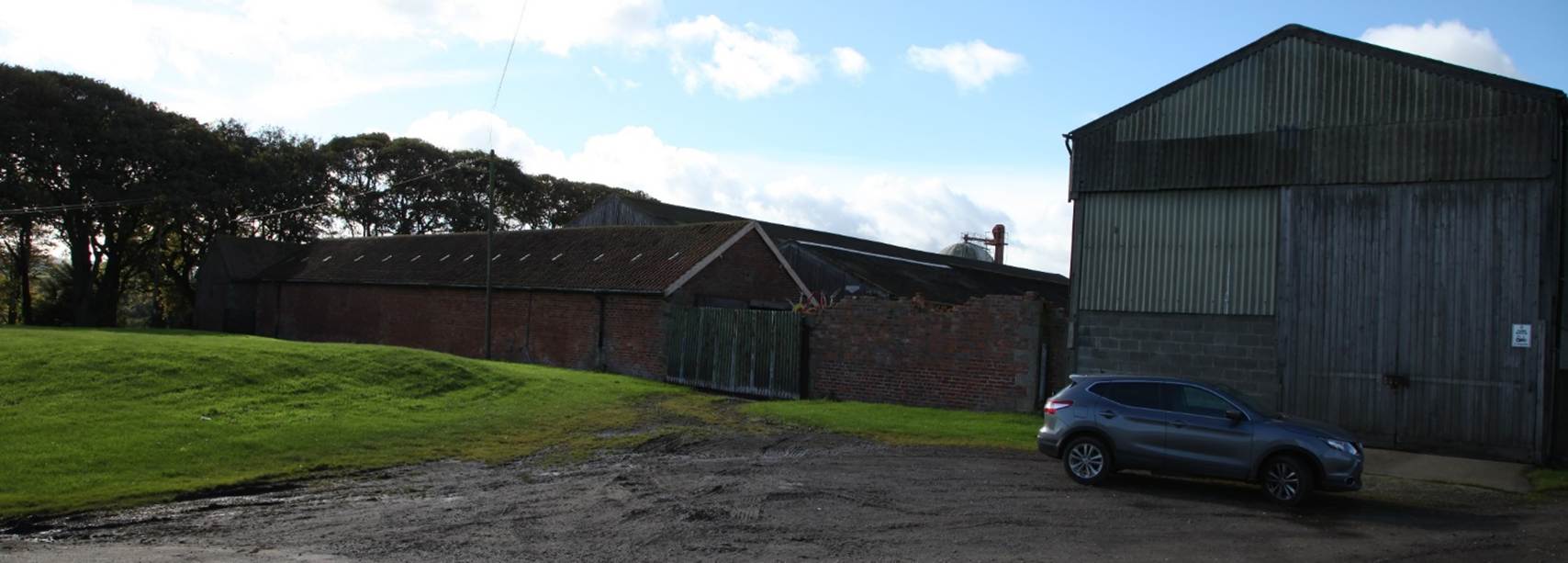
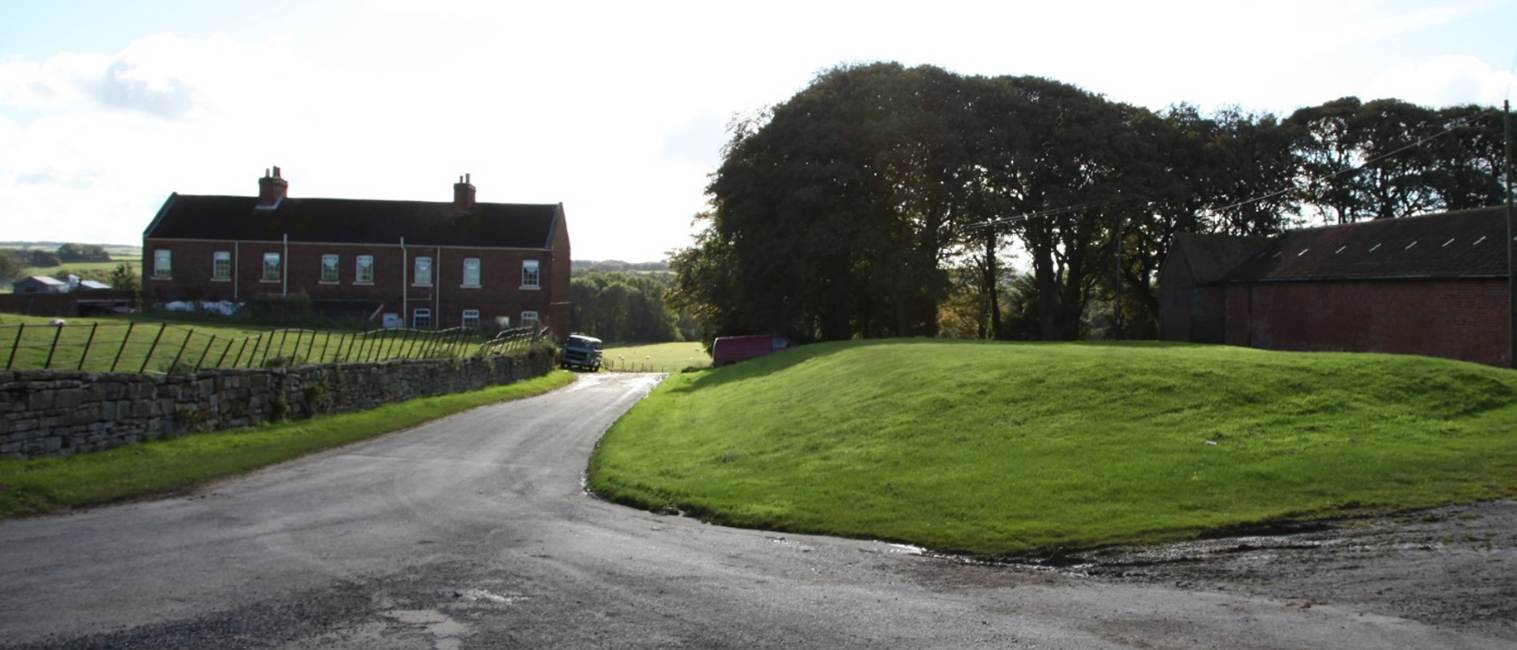
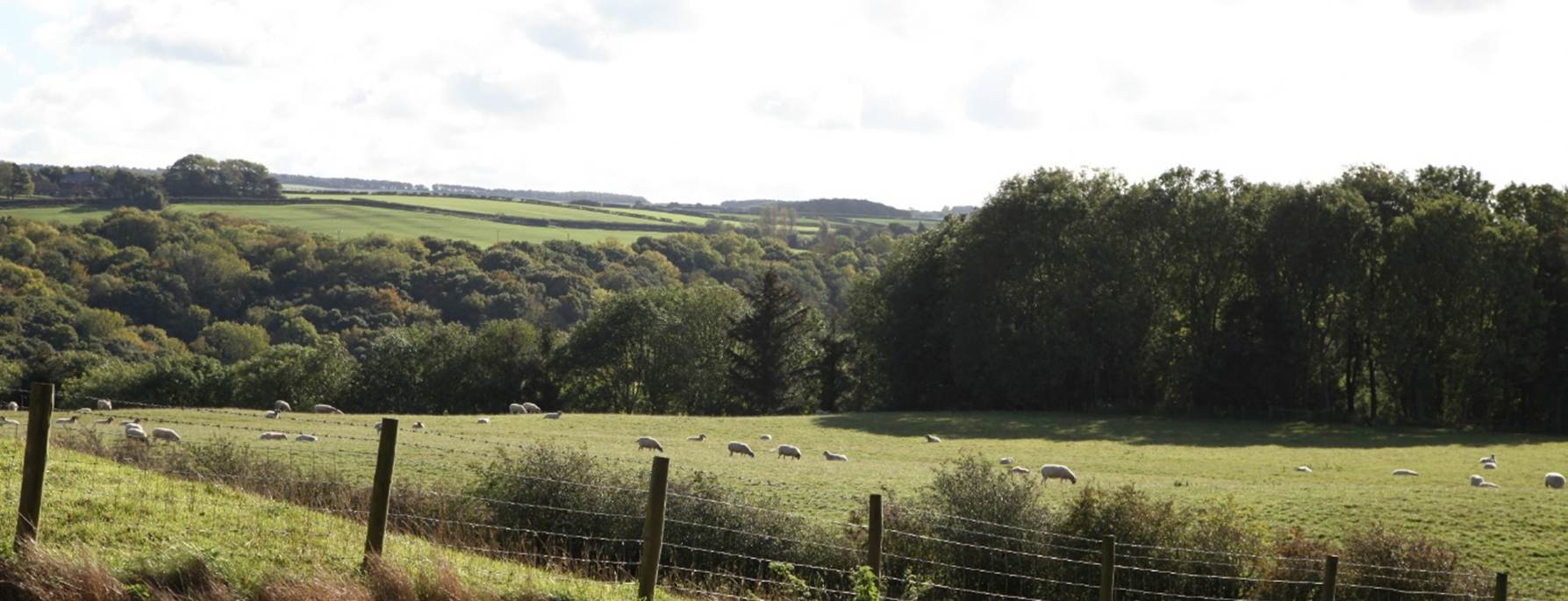
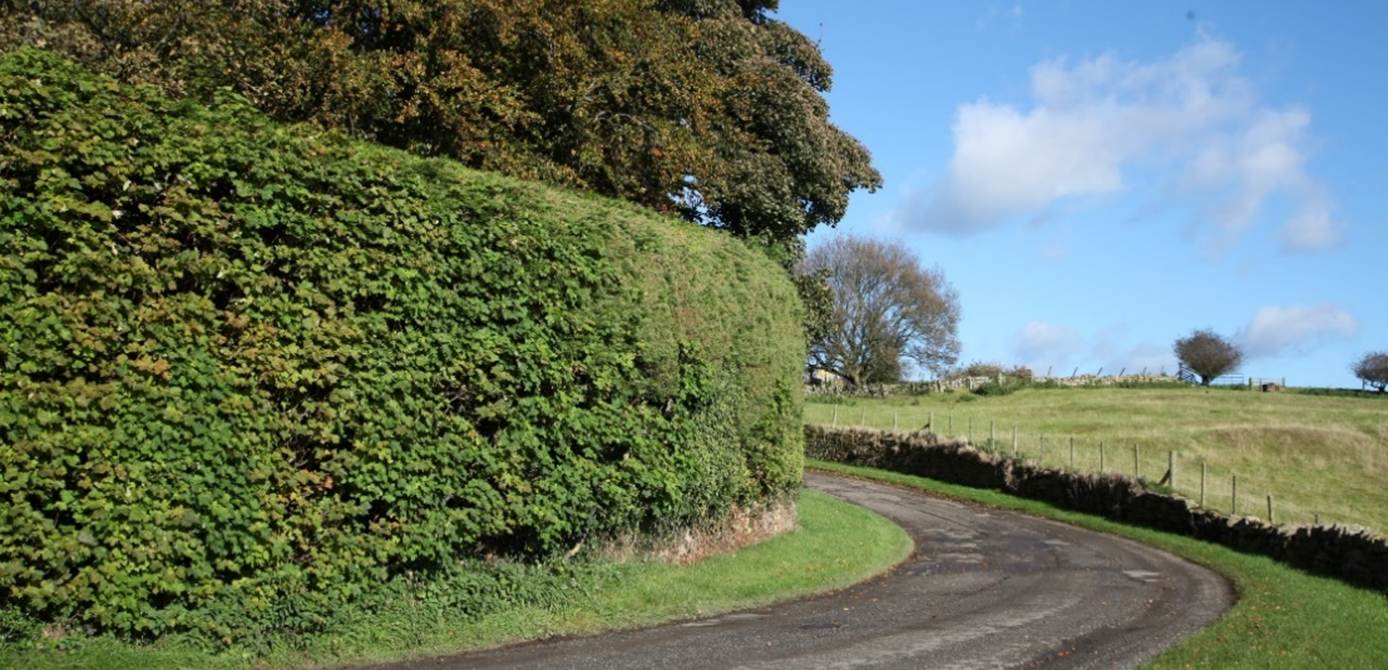
1.3 Stank House Farm
A considerable
amount of ridge and furrow evidence in the vicinity of the present Stank House
Farm and the earthworks suggest a medieval farmstead in two fields to the east
of the present farm. The name of the farm suggests a fish pond and was probably
derived from the fish pond at the Castle, which is close to the site.
Two farms are
shown on the 1767 map, one on the site of the medieval earthworks and the other
to the west. In 1767 the farmhouse stood at the head of a long close, just to
the west of a post medieval track. It had no outbuildings. The building was
much the same in 1845, but by 1856 it had gained a courtyard arrangement of
outbuildings.
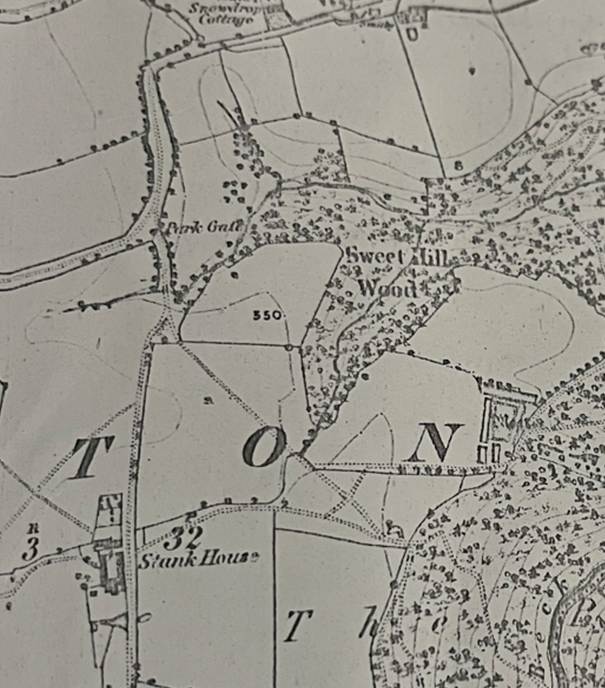
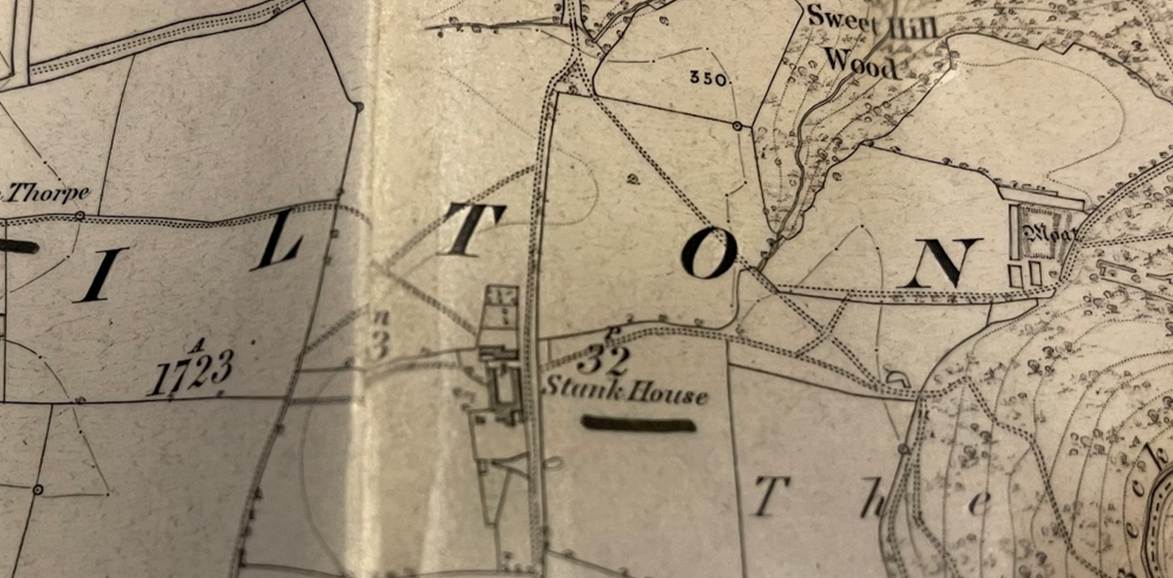
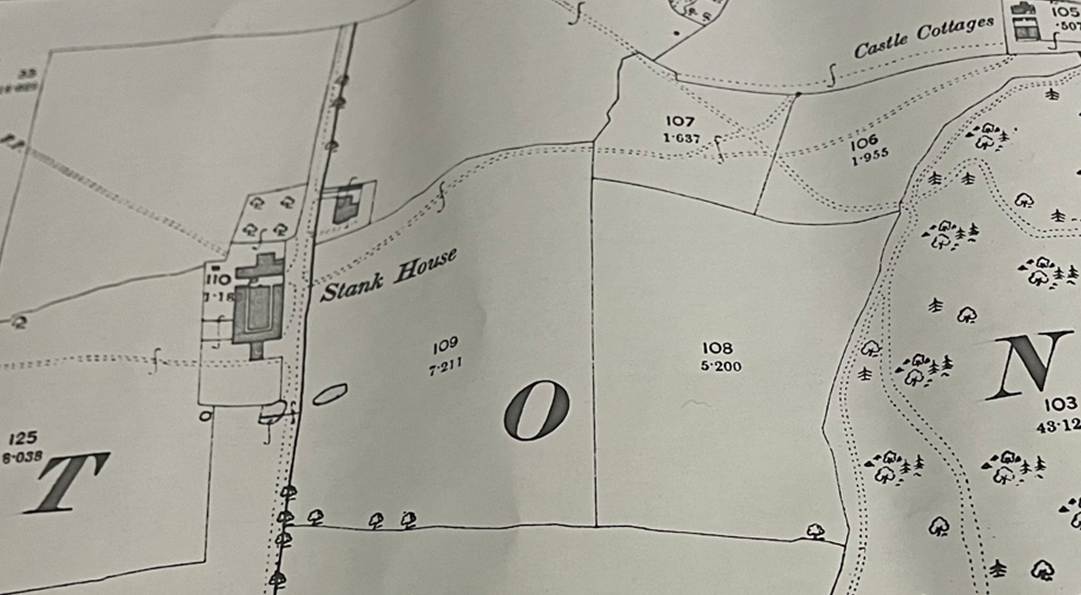
Stank House,
1853
Stank House 1856
Stank House in 1893
In 1882 a fine
brick farmhouse, more redolent of railway than rural architecture, was
constructed to the east of the eighteenth-century farmhouse and probably
contemporary with this an extra block of buildings was inserted into the
courtyard arrangement. The farm stands like this today with no trace of the
18th century farmhouse.
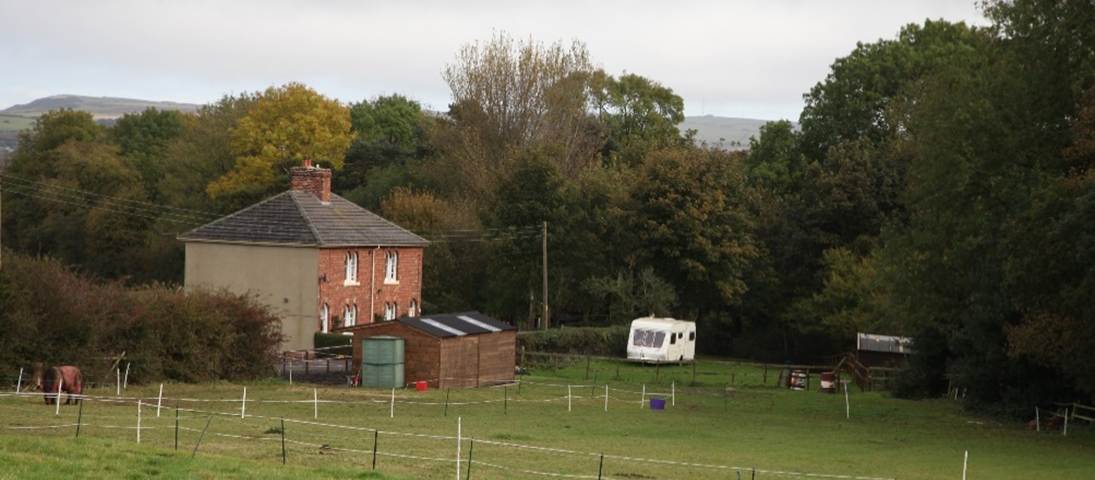
Stank House Farm
in about 2016
1.4 Buck Rush
There are no
medieval earthworks at the present site of Buck Rush Farm, but there are some
to the east. There are also the remains of a possible house platform.
The estate map of
1767 provides shows the site occupied by the lodge, a complex of three
buildings with an enclosure, the boundary of which crosses ridge and furrow
excavations. There is a rectangular enclosure containing a plantation to the
north of the buildings. This is probably a post medieval hunting lodge with
direct access to the woods. The 1856 Ordnance Survey map describes the woods as
Lodge Woods. The 1767 map also had also shown a farmstead at Buck Rush, to the
west of the lodge. In 1767 this comprised two buildings, and a kiln field to
the southeast may suggest that their construction provided lime for mortar as
well as for the fields. Between 1845 and 1857 Buck Rush developed into a
courtyard farm and the buildings from the mid eighteenth century disappeared.
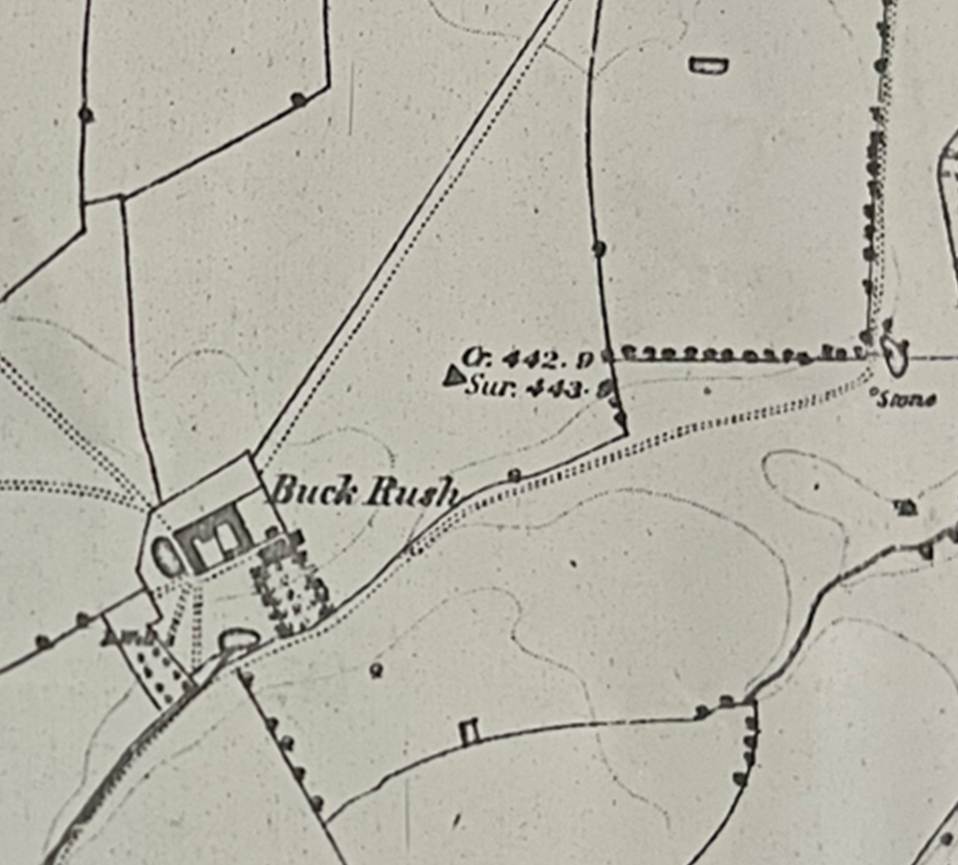
Buck Rush 1853
The present
farmstead at buck rush comprises a late 19th century stone farmhouse with a
courtyard arrangement dated from the mid nineteenth century.
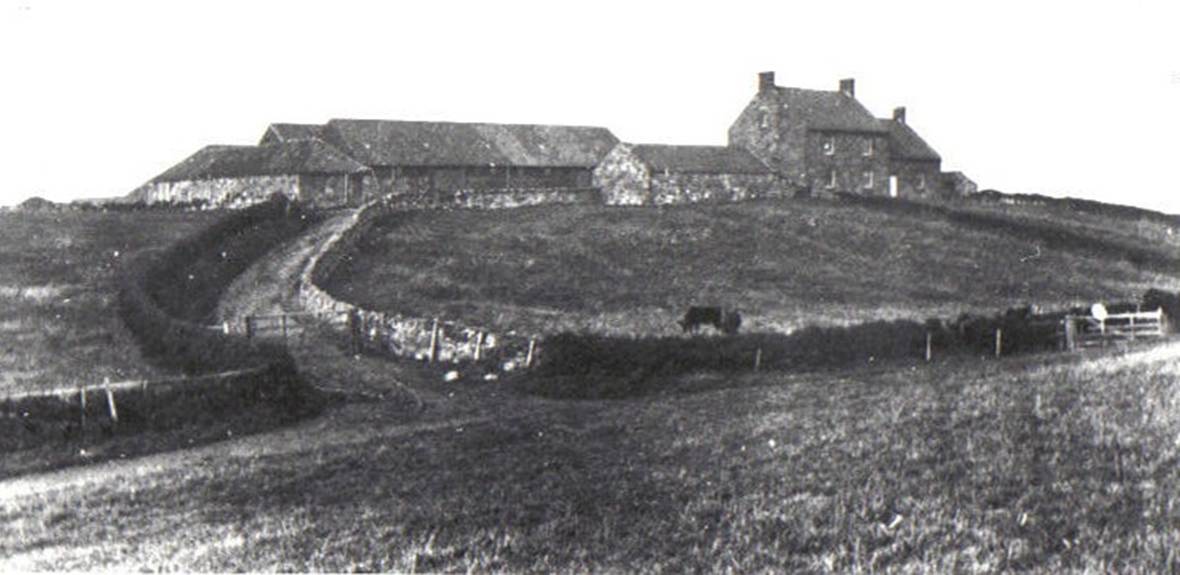
Buck
Rush Farm about 1912, part of Kilton Lodge Farm under Charles Farndale.
1.5 Greenhills
The name
Greenhills is applied to the western arm of Kilton and may be derived from grundales, meaning green strips, suggesting strips
not always under plough. There are extensive ridge and furrow excavations but
no medieval earthworks have been found. There must have been at least one
farmstead in this area in medieval times.
The 1767 map
records three farmsteads in this part of Kilton, one adjacent to Rough Close
with a farm building and enclosure; a second adjacent to Well Close and
comprising four buildings within an enclosure; and the third being a group of
three building situated at Greenhills on the west part of Kilton. The complex
of buildings at Greenhills developed between 1845 and 1856, but did not
constitute a courtyard farm.
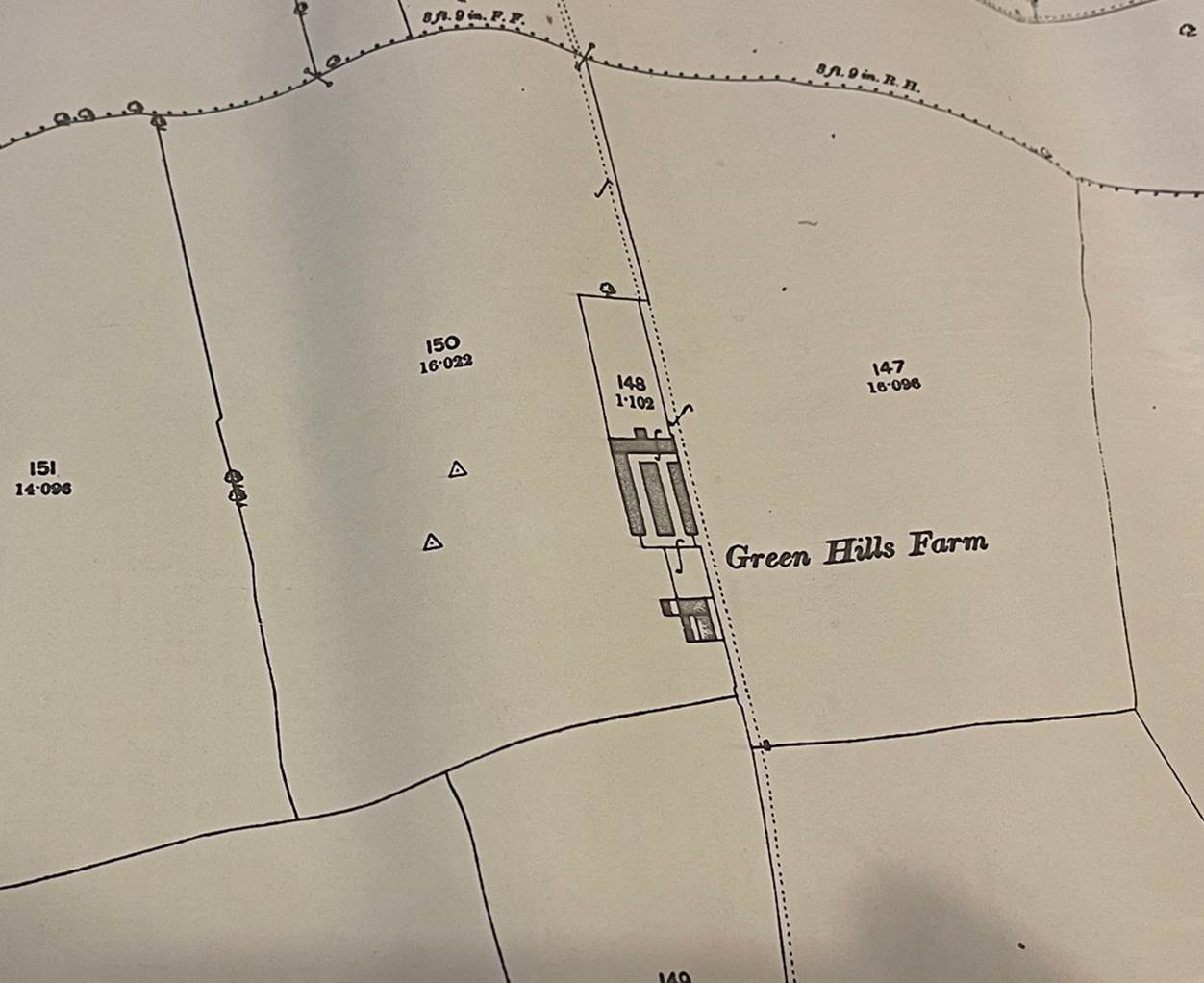
Green Hills Farm,
1893
In the late
nineteenth century Greenhills farm moved and it may occupy much the same
position as the eighteenth century farm at Rough Close. The farm survives
today.
1.6 Lumpsey
There is
extensive ridge and furrow work in the area of Lumpsey,
which suggests medieval agriculture.
The estate plan
of 1767 shows a farmhouse and a range of buildings at Lumpsey,
as does the tithe map.
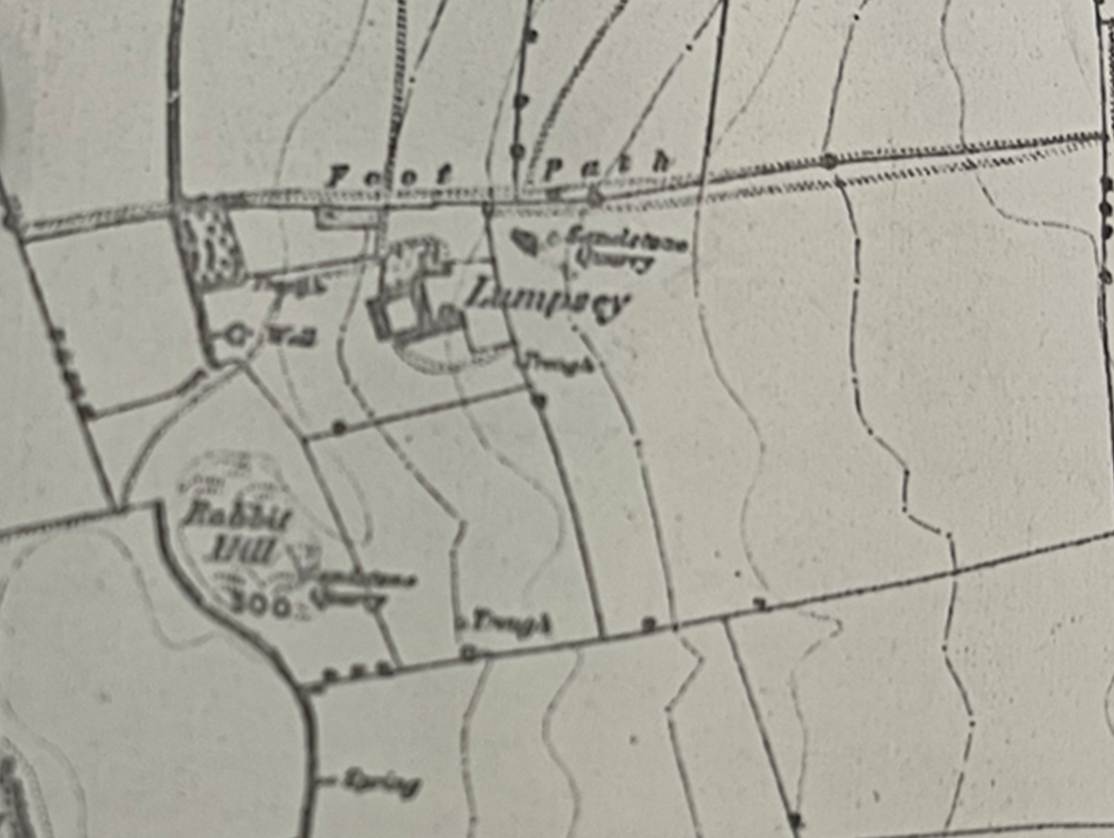
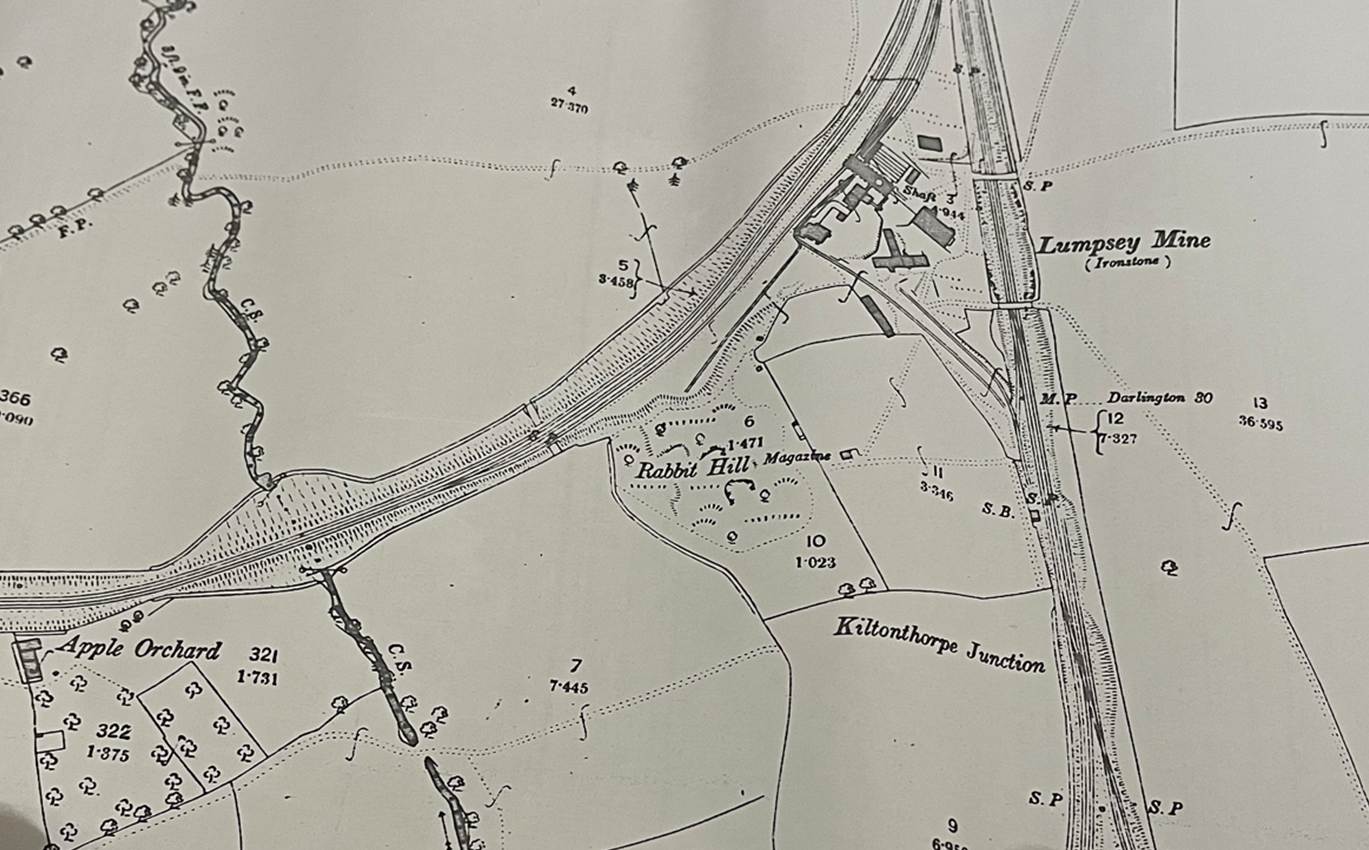
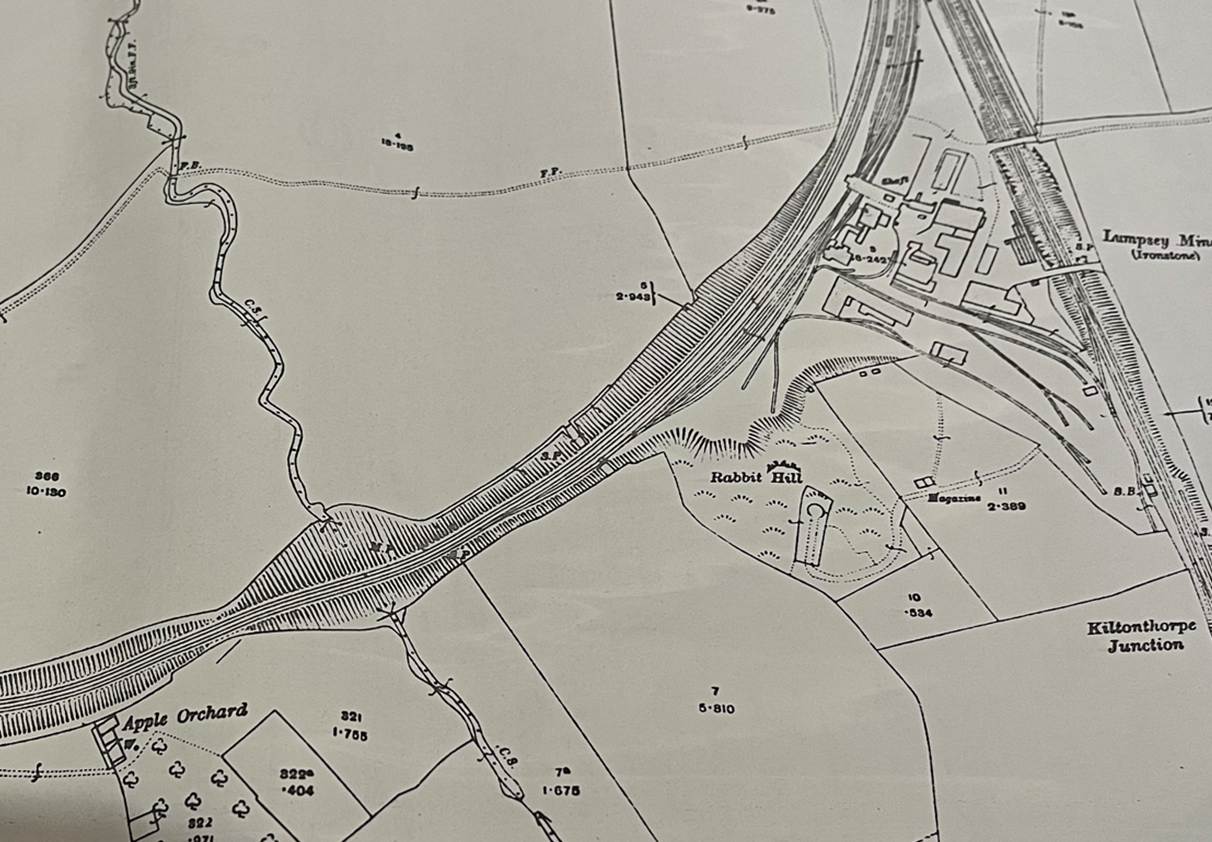
Lumpsey, 1853
Lumpsey Mines by 1893
Lumpsey Mines in 1913
By 1856 this had
developed into a courtyard farm.
The establishment
of an ironstone mine in this area in
the late nineteenth century led to the destruction of the farm and no buildings
survive. The Lumpsey mine was opened in 1881 as the
ironstone companies followed the veins south and east from the Eston hills. The
mine occupied the former site of Lumpsey farm and
consequently no traces were left of the farm. The mine closed in 1954 but a
number of the mine buildings still survive.
1.7 Kilton Castle
Kilton Castle
occupies a promontory of land over the precipitous valley of Kilton Beck. The
promontory is long and narrow and therefore dictated the shape of the castle.
There is a steep drop to the south and consequently this area was never
defended by anything other than a wall. Access to the castle was via a narrow
neck of land to the West. The first documentary reference to the castle was in
1265, when a chantry was granted to the Chapel there. Buildings must have been
must have therefore existed before that time. An Inquisition
Post Mortem of 1355 recorded: “… at Kilton a certain little castle
and nothing of value with the walls and ditches that is able to be repaired for
less than 41s per annum…” The castle was probably ruined by this time.
In The History of Kilton, With a Sketch of the Neighbouring
Villages, By the Returned Emigrant, Dedicated to the Rev William Jolley,
Toronto, Canada, America, Middlesbrough, Burnett & Hood, “Exchange”
Printing Offices, 1870, Redcar Cleveland Library Book No: R000040114
Classification: 942.854, Book No: R000040114, John Farndale reproduced this
drawing:
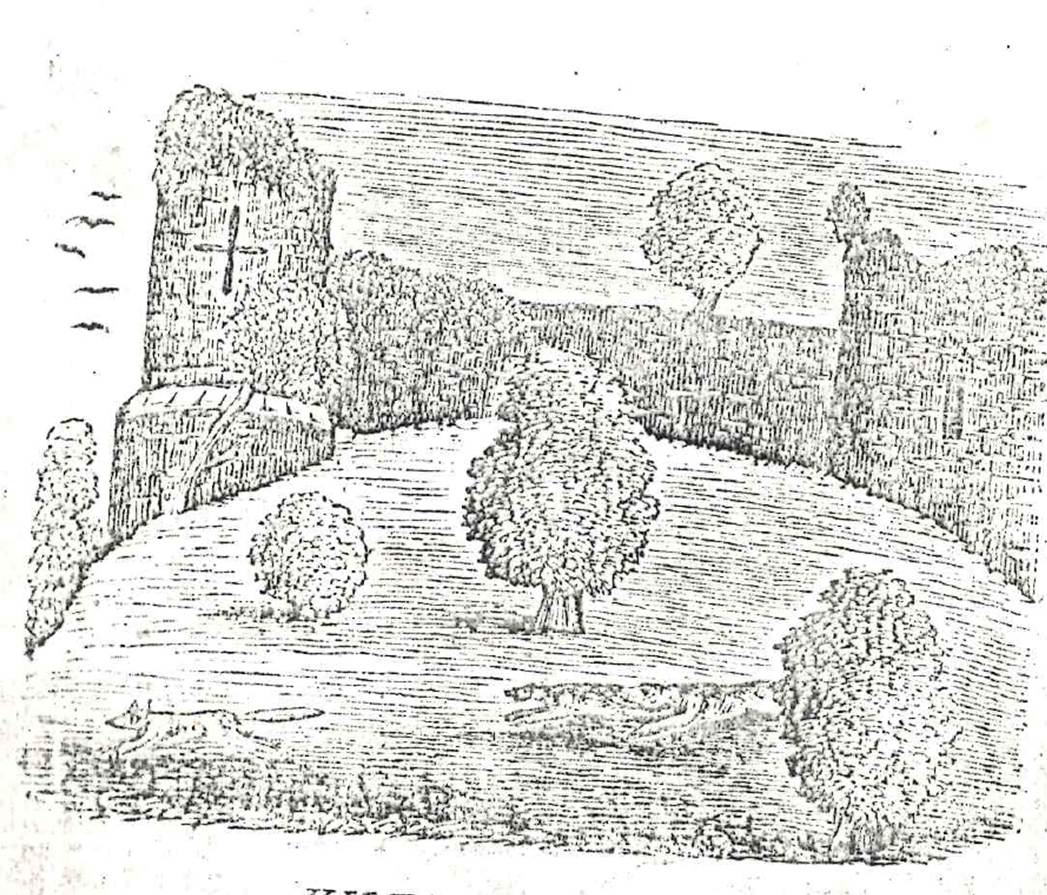
Kilton Castle. In this figure is represented
Old Reynard and the two dogs that took him as he leaped from the Watch Tower in
the presence of the Author, and Consitt Dryden Esq., sixty years ago
The 1767 map
shows a close in front of the castle, while the tithe map shows no detail for
this area. The 1856 map depicts two features which were described as moats, but
which are more likely to be the fish ponds. Two buildings joined this and were
probably the forerunners of the estate cottages which were built here in the
late nineteenth century. Of the castle, the Reverend John Graves wrote at the
beginning of the nineteenth century “… the edifice is now in so ruinous a
state, as to render it impossible to form any idea of its former strength and
magnificence... the ruins... are seen on the point of a rugged steep, washed by
a mountain stream, brawling among fragments of rock, at a great depth beneath.
The banks of the river rise swiftly, and being wooded on either hand, encompass
the point on which the castle stands, and forms a picturesque foreground....”
The castle
remains a picturesque ruin, but a row of a state cottages in the same style as
those at Kilton were built in the late 19th century. The northern arm of the
fish pond is still visible as a depression within a field, but the southern arm
has disappeared altogether.

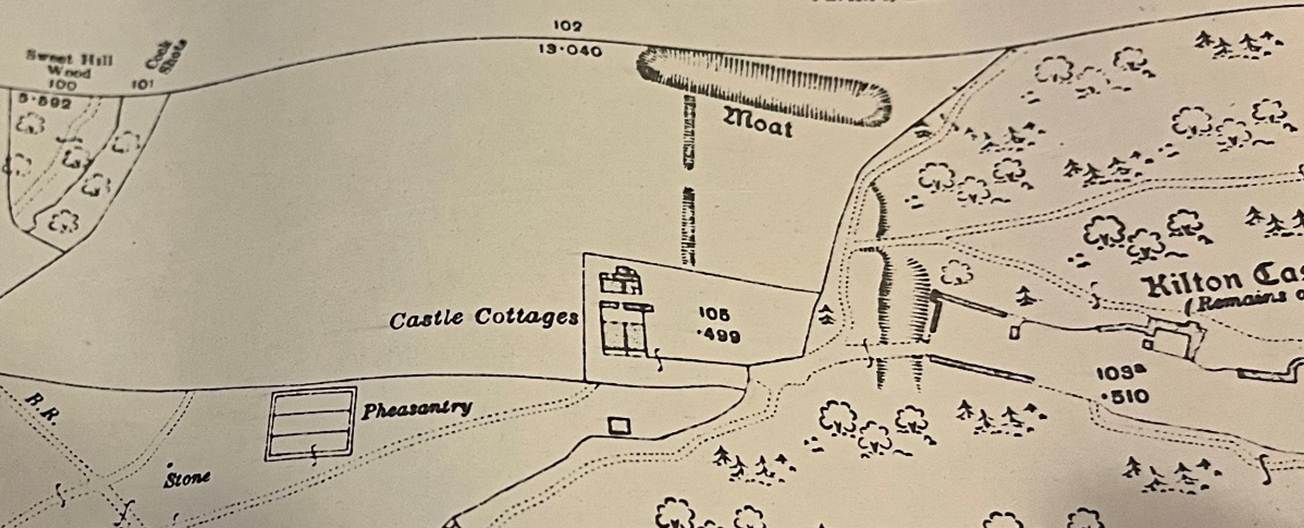
The remains of
Kilton Castle, 1893
The remains of Kilton Castle in 1913
1.8 Kilton Woods and Kilton
Beck
In A Guide to Saltburn by the Sea and the Surrounding
District, With remarks on its picturesque scenery, Fifth Edition, Dedicated to
John Thomas Wharton Esq of Skelton, By John Farndale.
Late of Skelton Castle Farm, Darlington, Printed by Charles W Hird, 1864,
John Farndale wrote:
Kilton is a small
village, but the vale in which it stands abounds with woodland scenery.
At a short distance stands the remains of the old castle of Kilton, which once
belonged to the Thwings, where centuries ago there were no doubt great doings;
but time here has wrought vast changes, and the history of this once important
stronghold is now nearly buried in oblivion.
From the ruins of
the castle there is a fine view of the vast forest in which it stands, with the
river crawling through blocks of huge stones till it reaches the sea at
Skinningrove. Here I remember planting, fifty years ago, the first trees
near the old castle walls, and they are now as lofty as their sires two
hundred years old. Here as I stand how reflection crowds my mind. There is
no corner of this wood unknown to me. I have traversed it a thousand times when
a boy. I have captured in it the owl, the crow, the cushat, the hawk, the
cuckoo, and every other forest bird, and also the squirrel, the weasel, the
foumart, the badger, the snake and the fox. How often I have heard the
retreat of the huntsman’s horn, like Joab at the death of Absolom, and how
exulted when three cheers proclaimed the death of poor Reynard. I remember once
the fox hard run by the Cleveland and Roxby hounds, and he took refuge between
the old castle walls and the ivy creeping between. Here he kept safe till the
hounds came up, when he boldly bounced in the very face of his enemies, and was
soon overcome. Mr J Codling, of Roxby, caught him yet alive, and brushed him in
the presence of Consett Dryden Esq., myself and a few
others, and we made the wood resound with three cheers.
Here in the
spring time when Nature is bursting into new life and beauty, and every hill is
carpeted with wild flowers, when the feathered choir sing in joyful and
delightful concert, and the busy bee with its drony
tone passes and repasses, how sweety it is to stand and admire the skill and
muse the praise of Him who brought them into being.
Kilton Woods
Here blooming
flowers, with fragrant lips,
Sweet pleasure
gives to me,
While happy birds
with gladsome voice
Now flirt from
tree to tree.
The river as it
onward flows
Its pleasant
winding way,
Sings with smiles
of calm content
Its message day
by day.
On mountain high
and valley low
The voice of God
I hear,
And by the sea,
the rippling sea,
I ever feel him
near.
I gaze upon the
silent night
And in the
heavens above,
And in golden
letters, clear and bright,
The stars sing
God is love.
The cuckoo with
her well known voice,
Sings ever as she
flies,
And joyful
tidings brings to all,
She never tells
us lies.
She sucks the
eggs of other birds,
Which makes her
voice more clear;
And when she
sings, gay spring is come
And summer’s
drawing near.
Petrifying
springs, depositing carbonate of lime, abound in this locality. Amongst the
most remarkable may be noticed a spring in Kilton Wood, a little to the south
of the castle, and a remarkable sulphurous spring, which issues from the
aluminous schistus on the banks of the beck near
Kilton Mill. One gallon of water of this spring was found to be seventy two garins heavier than a gallon of distilled water. In the
immediate vicinity of Kilton Castle there is also another petrifying spring,
depositing carbonate of lime.
1.9 Kilton Mill
A mill is noted
at Kilton in 1323 and 1344 when it was worth 30s per annum. The 1767 map shows
a mill perhaps in the approximate location of the medieval mill.
The 1767 map
shows a complex of at least three buildings, wrongly labelled as Wilton Mill.
The mill building is shown extending over the stream and the wheel may have
been contained within a housing. The complex changed little by 1845, but by
1856 it had grown with the addition of a courtyard farm.
A large
nineteenth century mill with its outbuilding still stands on Kilton beck and
may occupy much the same location as its medieval predecessor. It is no longer
used for milling purposes.
1.10 Chapel Fields
These three
fields lie on a medieval trackway from Kilton and were given the name Chapel
Fields on the 1767 map and the 1845 tithe map. The significance of the name is
not obvious. Perhaps a chapel once stood in these fields or perhaps the rent
from the fields were provided for the upkeep of a chapel.
1.11 Kilton Thorpe
The form and
extent of the medieval settlement at Kilton Thorpe is difficult to determine.
An area of worth earthworks survives at the northwest corner of the present
village.
Three buildings
were shown on the 1767 map and by 1845 these had shrunk to two. In 1857 those
buildings to the south of the road had disappeared altogether, to be replaced
by a single building set back from the road and at right angles to it. The
buildings to the north of the road had been extended possibly with the
construction of a state cottages and another farmstead.
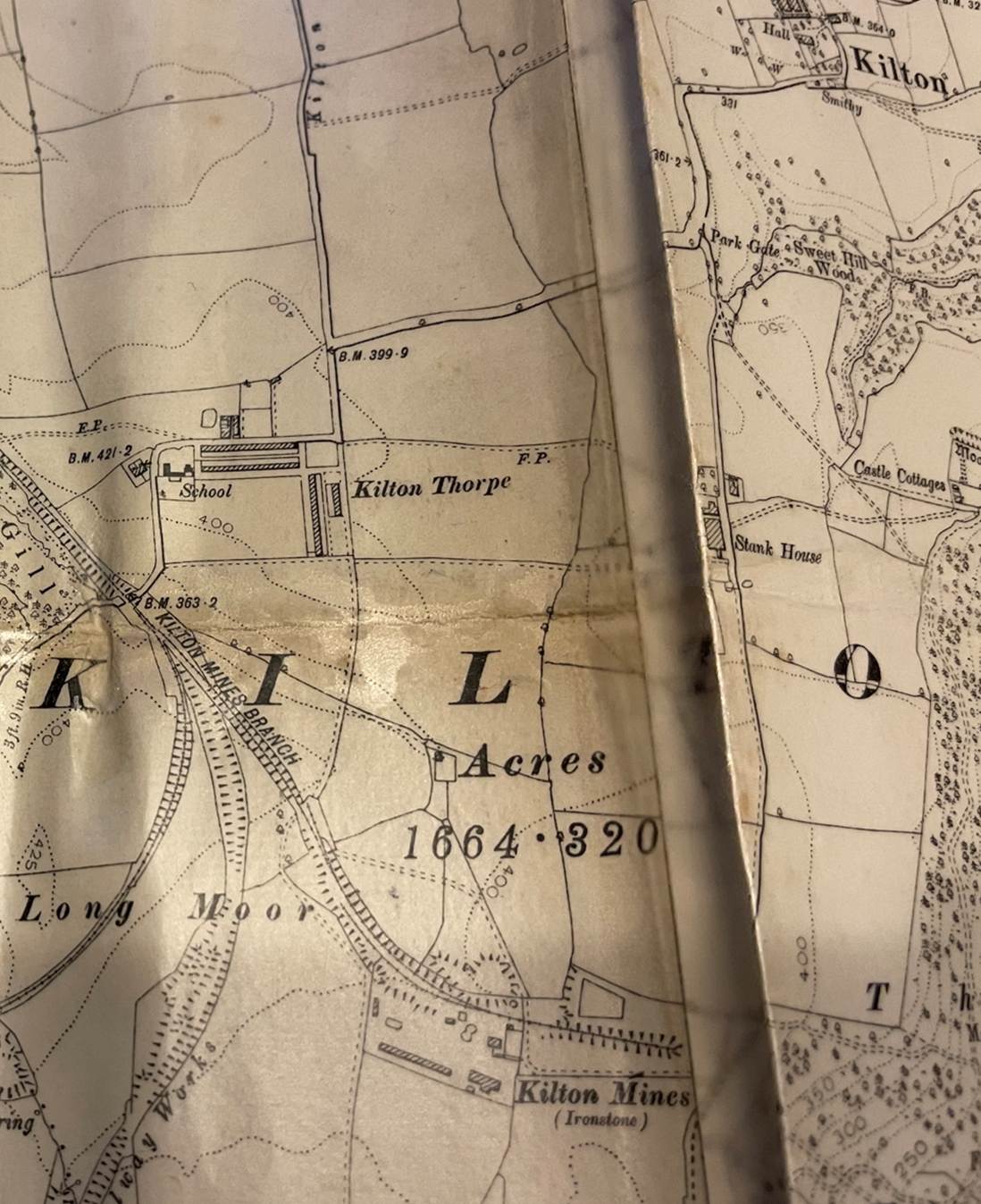
Kilton Thorpe and
Kilton Mines, 1893
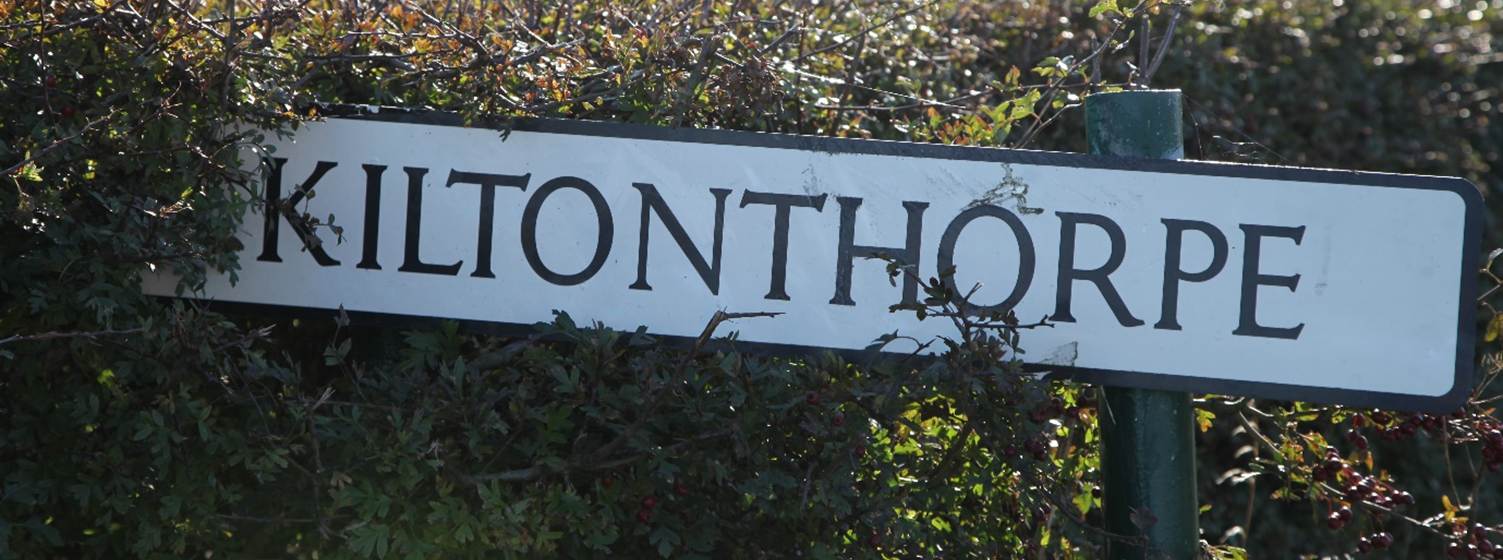
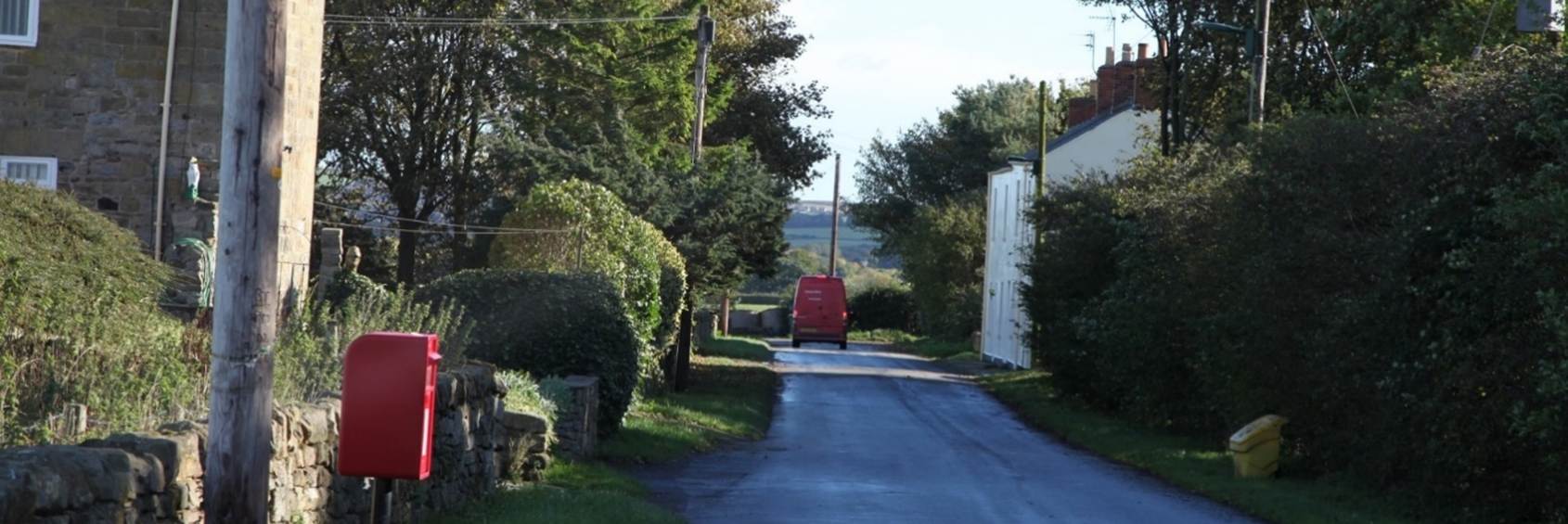
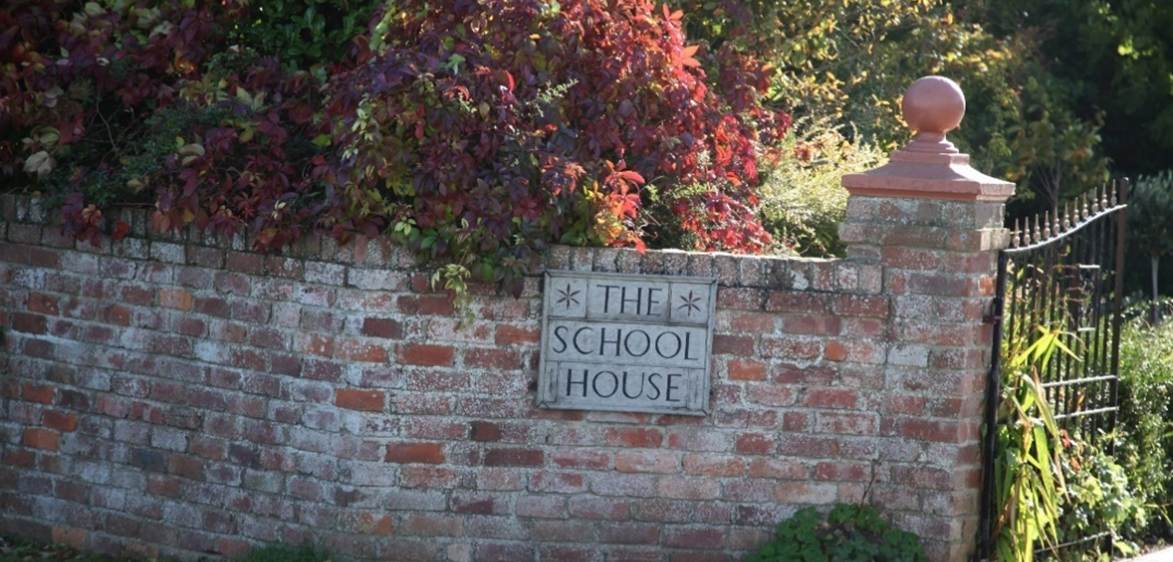
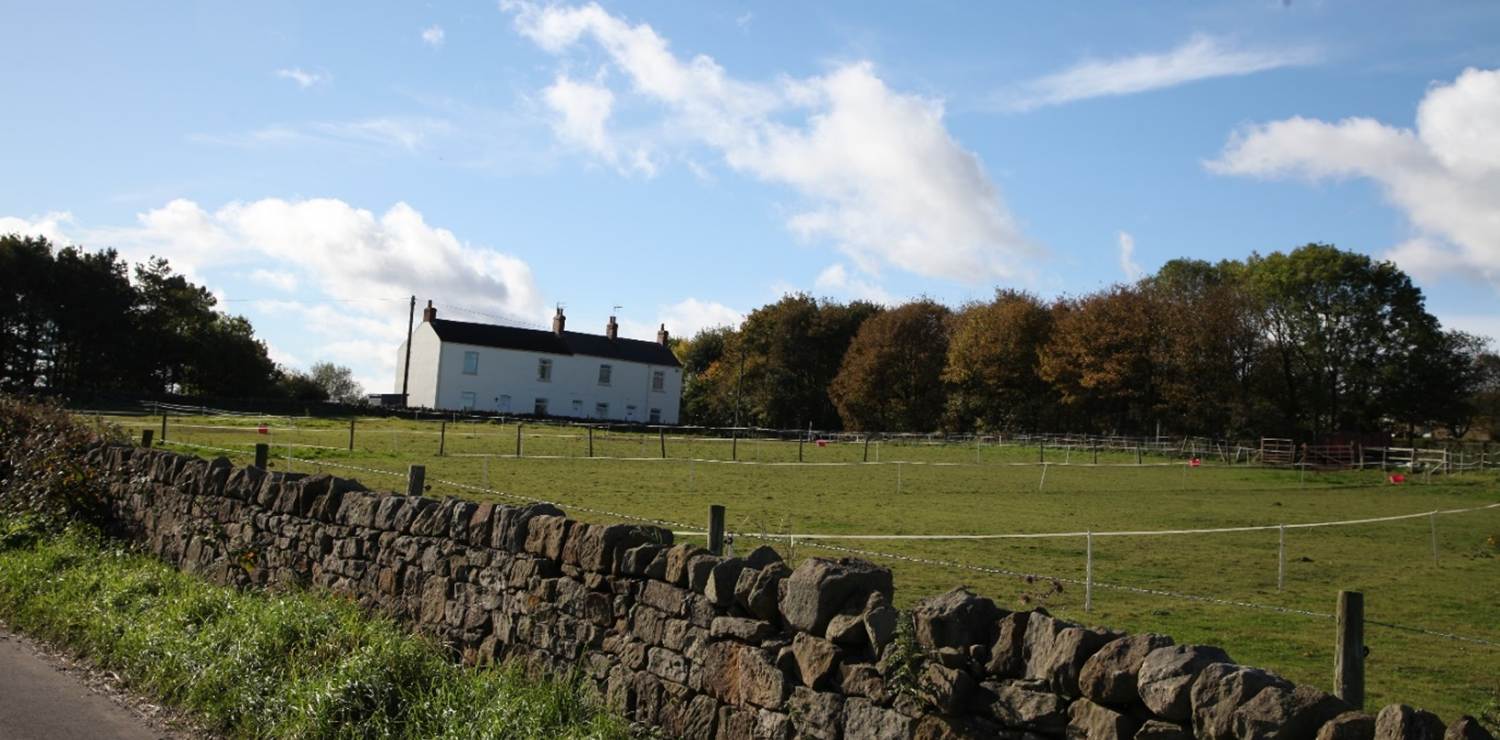
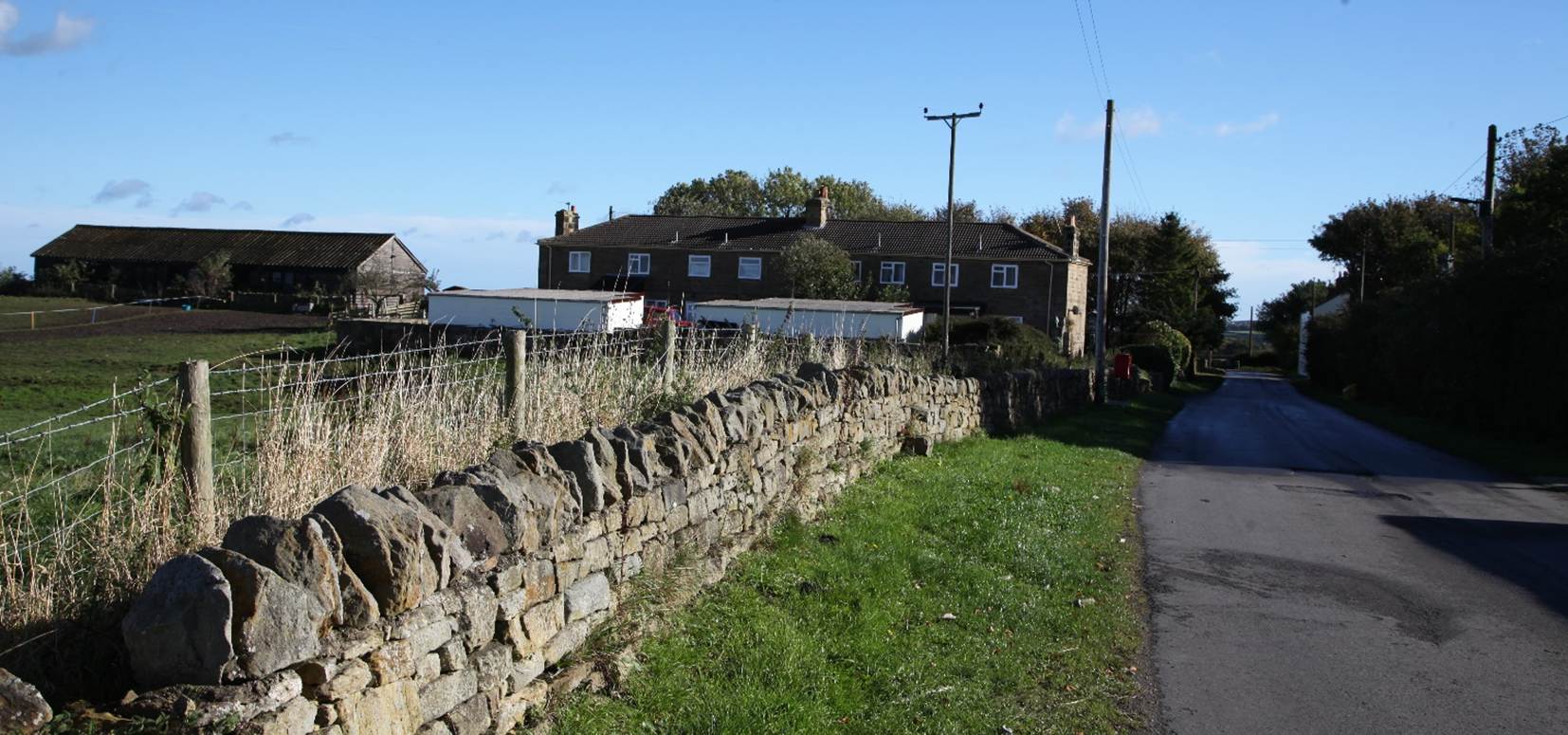
1.12 Kilton Mines
The Kilton mines were sited to the south of Kilton
Thorpe and were opened in 1871. Their main impact on Kilton had been the
creation of a large spoil tip which continues to dominate the skyline. Both
Kilton and Lumpsey mines were served by railways and
the abandoned embankments and cuttings of the railways are still visible.
The remains of
the mine works at Kilton in 2016:
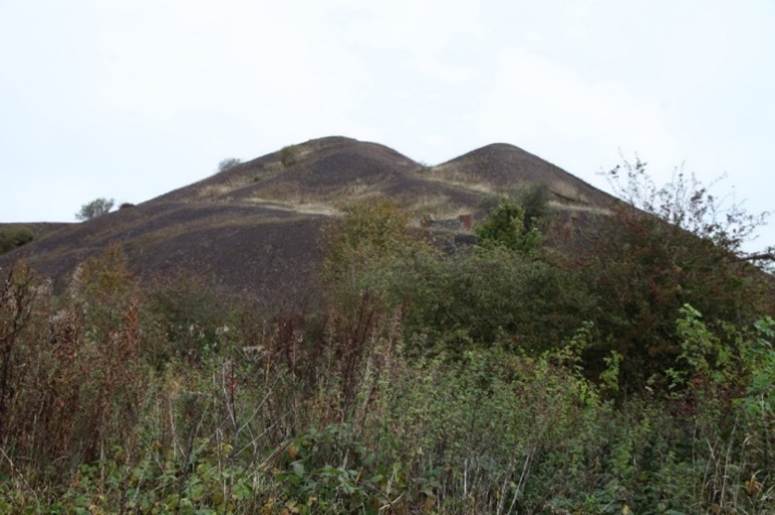
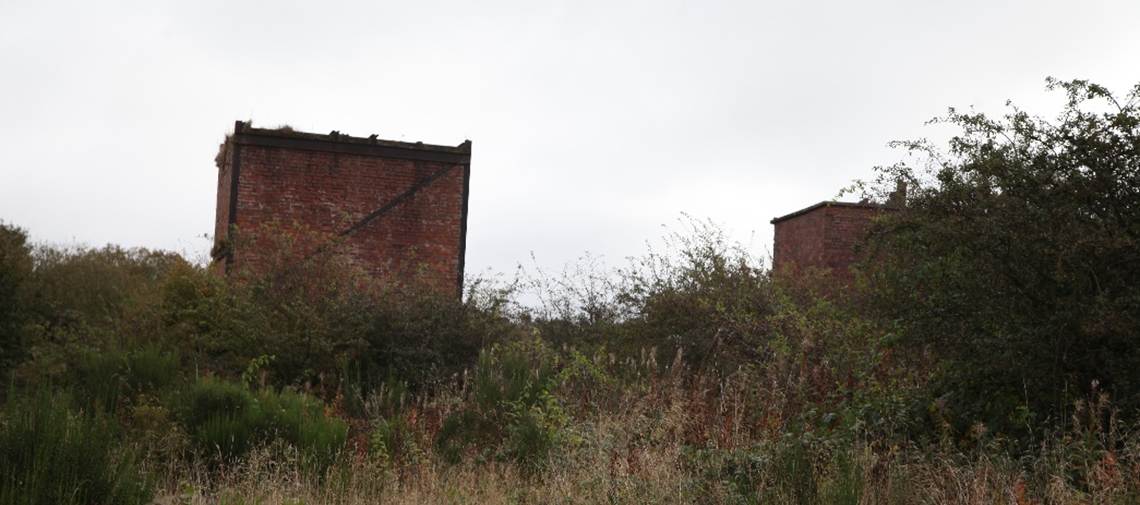
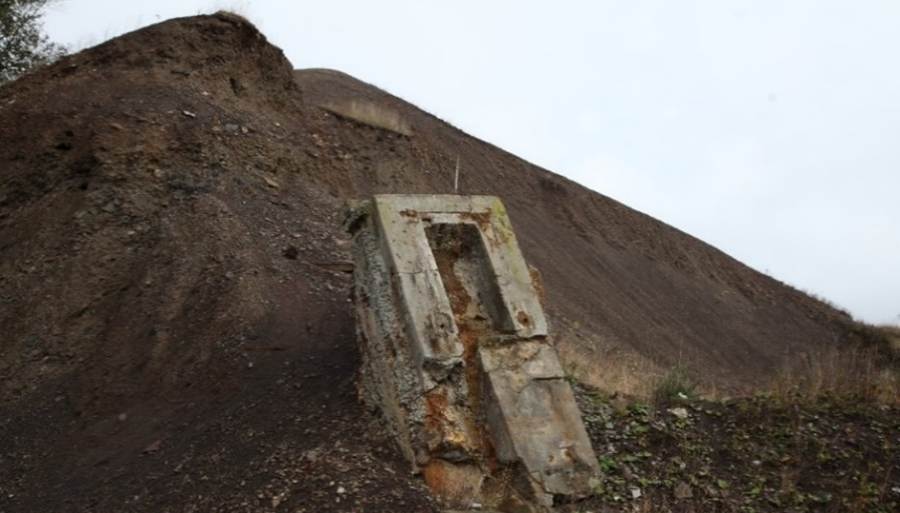
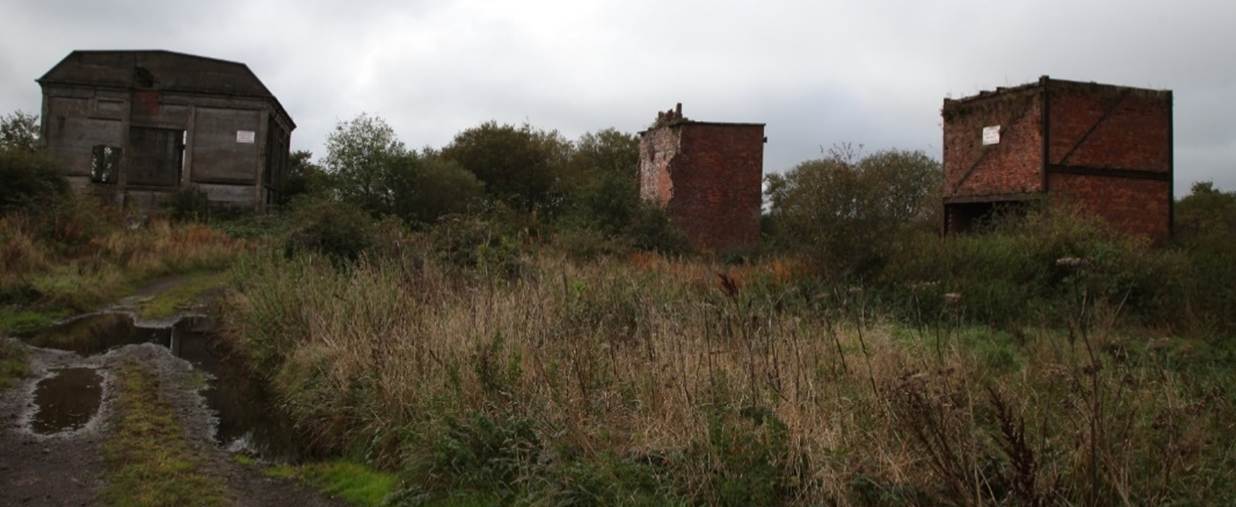
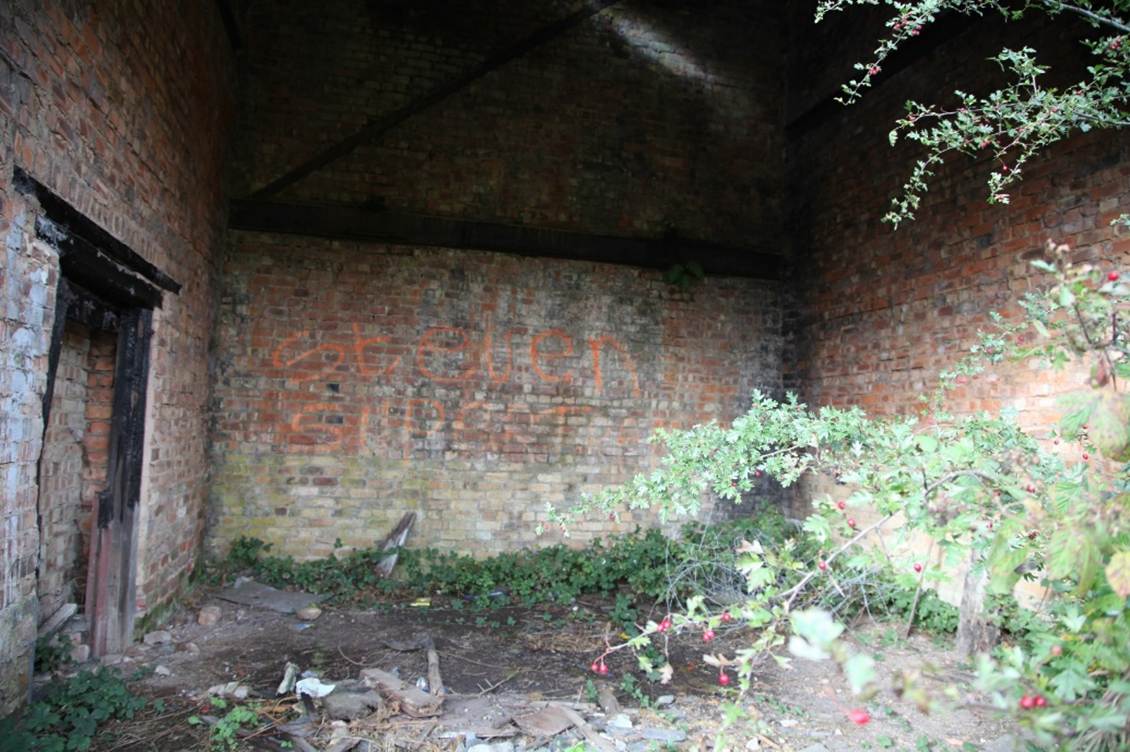
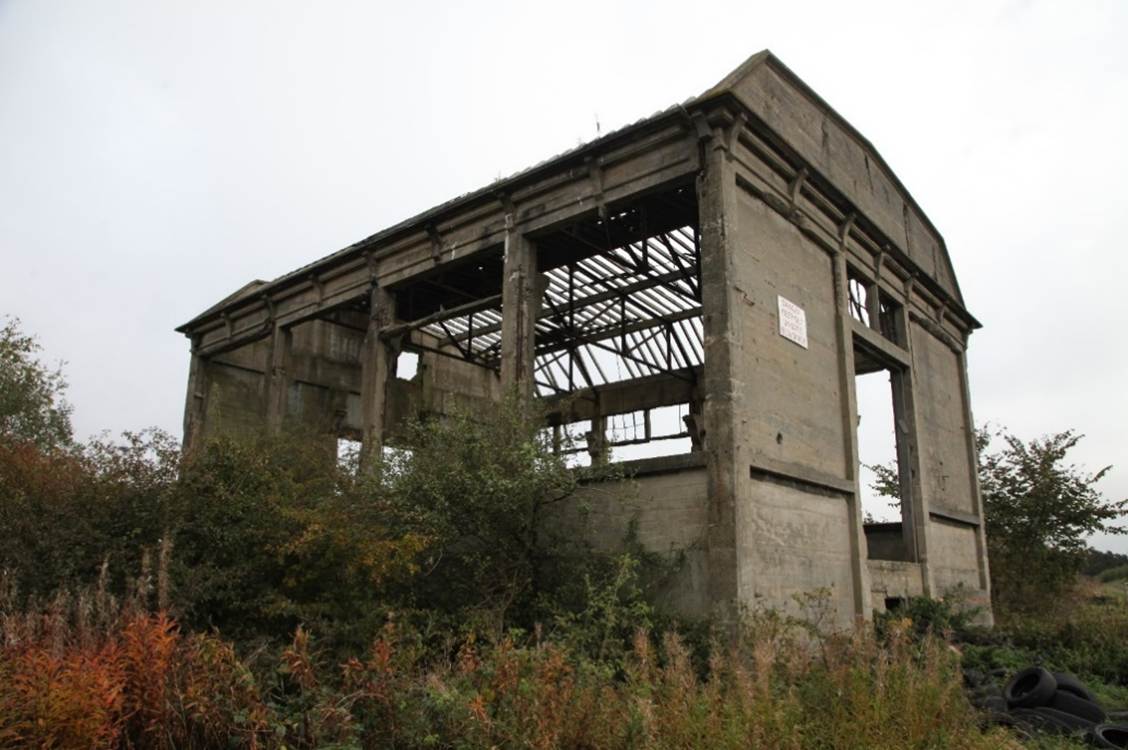
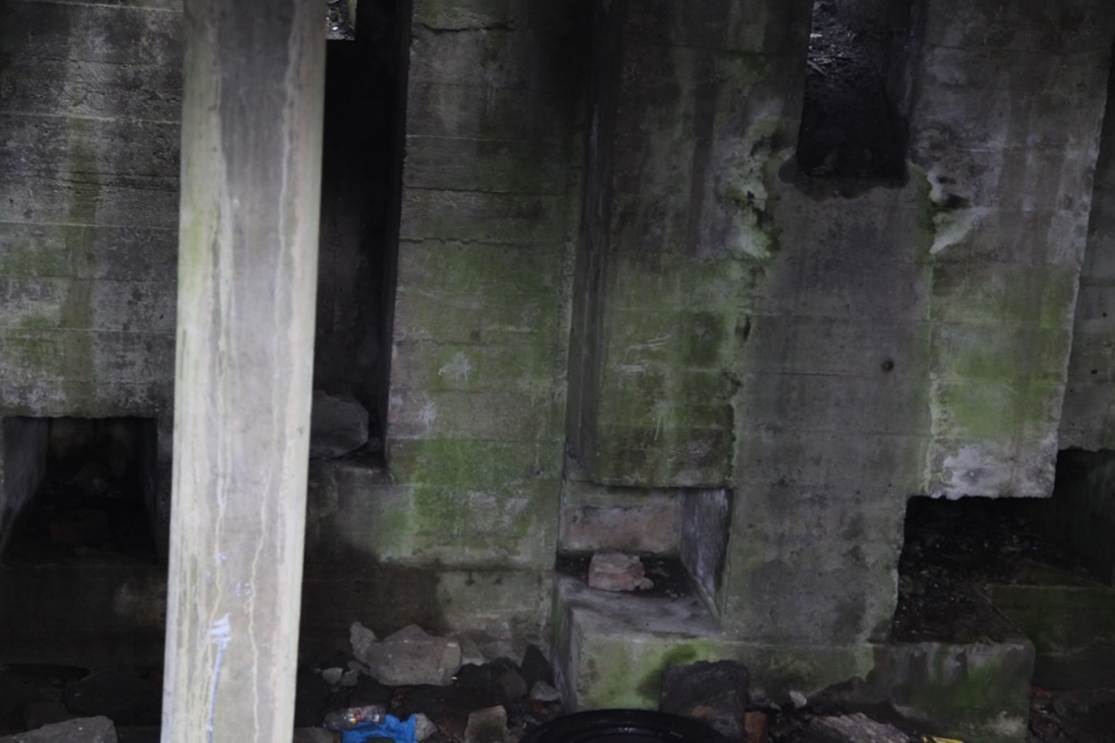
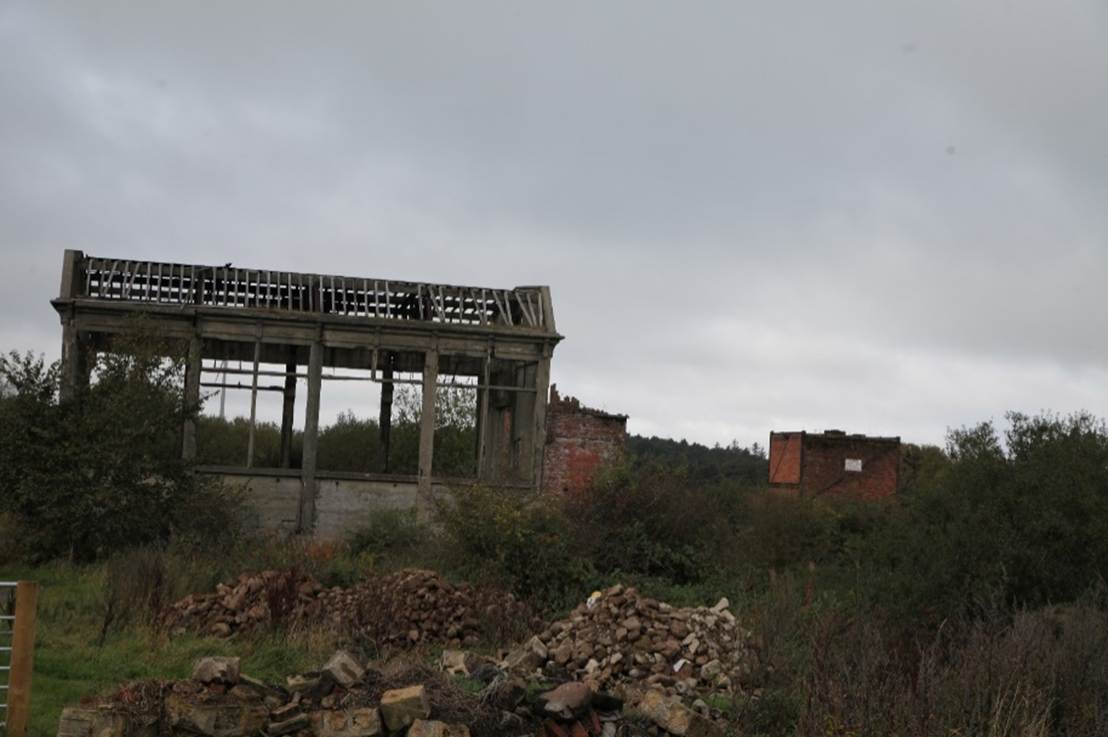
Chapter 2 - The
History of Kilton
There is evidence
of an initial pattern of dispersed settlement of individual farmsteads in
prehistoric times.
2.1 Medieval Kilton
Kilton lies to
the north east of the North York Moors within the parish of Skelton. The name
Kilton may be derived from the Scandinavian language, and may refer to a farm
settlement in a narrow valley.
1086
The village is
record in the Domesday Book, 1086 when it
was called Chitune. Before the Norman
Conquest, it was the land of Uhtred.

Kilton Thorpe was
also mentioned in the Domesday Book as Thorpe, a Scandinavian word for a
small settlement. Doomsday Book states that the King held land at both Kilton
(“Chitune”) and Kilton Thorpe (“Thorpe”).
Since there were many Thorpes in northern England, the settlement became known
as Kilton Thorpe. At Kilton Thorpe there was a manor and one and a half caracutes of land and at Kilton, one caracute.

The land around
Kilton and Skinningrove was given to the de Brus family at the time of
the Norman Conquest. Both Kilton and Kilton Thorpe were held for the King by
the Count of Mortain. However he was banished for conspiracy in 1088 and
both villages, the two and a half caracutes, another
five and a half caracutes and eight acres of meadow
passed to Robert de Brus. At this time the manor of Little Moorsholm also formed part of the Kilton Fee. That of
Great Moorsholm did not join the Kilton Fee until 1272. It seems
too that the Soke of South Loftus, six caracutes of land, joined the Kilton Fee soon after the
Doomsday survey. North Loftus was much bigger and was part of the Chester Fee.
1106
Alan de Percy founded the Fief
of Kilton in the Barony of Percy in 1106. His tenant was Walter who subdivided
the fiefdom into (1) the Fief of Kilton proper; (2) the Lordship of Hinderwell;
and (3) the Lordship of Kirkleatham. In the Fief of Kilton there were the manors
of Kilton Thorpe and Little Moorsholm the Soke of
South Loftus.
1135
Kilton Castle was probably
founded by Pagan Fitzwalter de Thweng (b 1080) and
built in about 1135 to 1140, initially in timber.
1140
By 1140 his son
Osbert began the stone construction (the local orange-brown sandstone).
1166
In 1166 the
subtenant of Kilton was "Ilger de Kilton"
and remained so until 1190.
1190
The castle was
probably finished by William de Kylton between 1190
and 1200. Ord in the
History of Cleveland wrote:
"As a fortress, it must have proved impregnable previous to the
introduction of artillery; being placed on a high jutting eminence, surrounded
by steep precipices, except to the west, where the ditches, foss,
inner vallum, and traces of the barbican gate are distinctly observable."
The castle was built on a promontory of rock above Kilton Beck with steep
valley walls plunging about 90 metres down to the Beck. The ground on the far
side of the Beck rose to a similar height, but sufficiently distant from the
castle to be a threat. To the west was a narrow strip of land protected by a
deep ditch on either side. Ord in the History of
Cleveland considered the castle
to be the “"most powerful baronial fortress in Cleveland.” Within
the inner ward the Castle had a Great Hall, kitchens, a private chapel and the
apartments of the Lord of the Manor. In time, the Castle had gardens, and a
fishpond. However the Castle was unusual by not having a Keep, which may have
caused it to be obsolete by the fourteenth century.
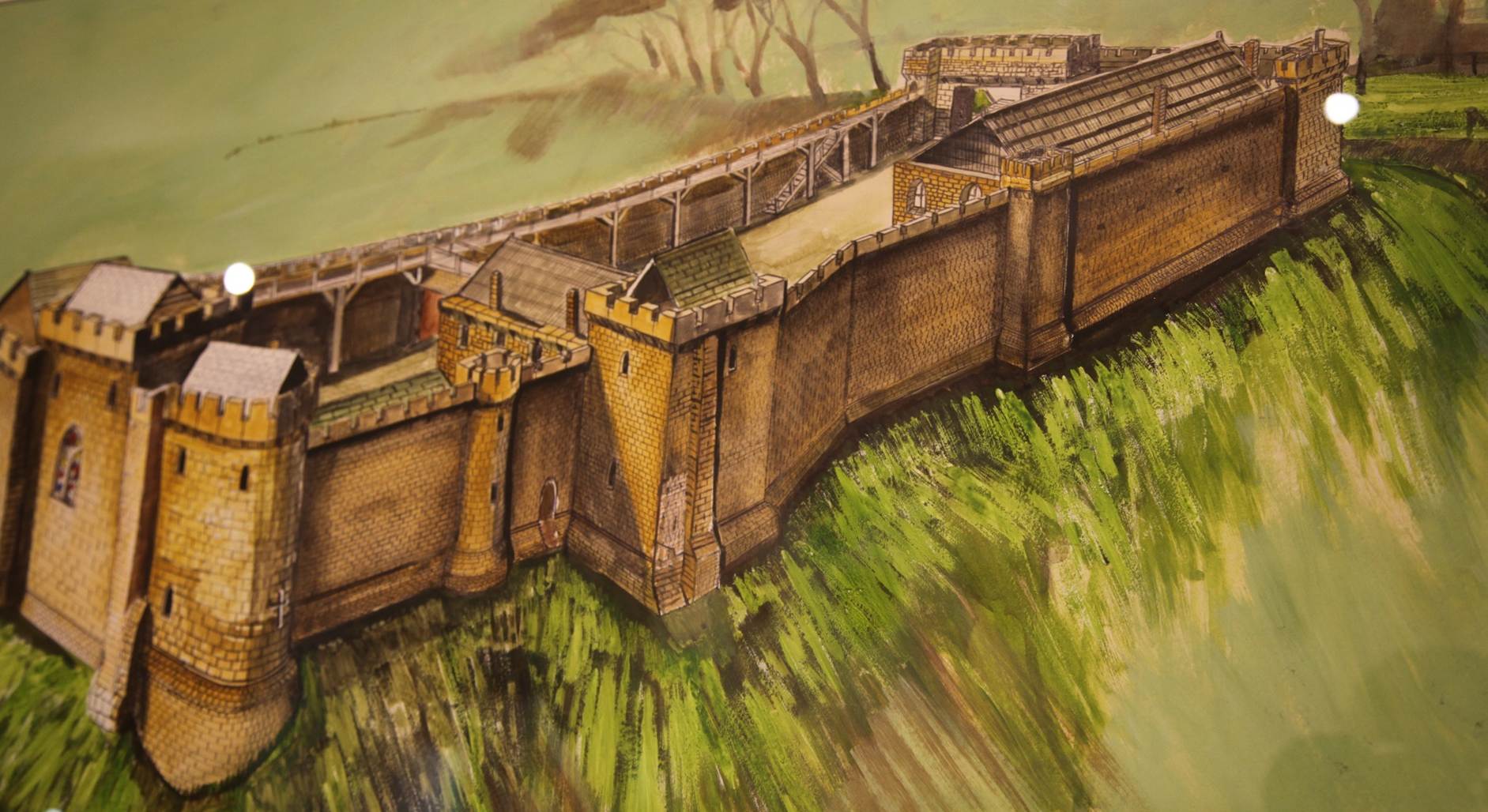
Kilton Castle, in
the collection at Kirkleatham Museum
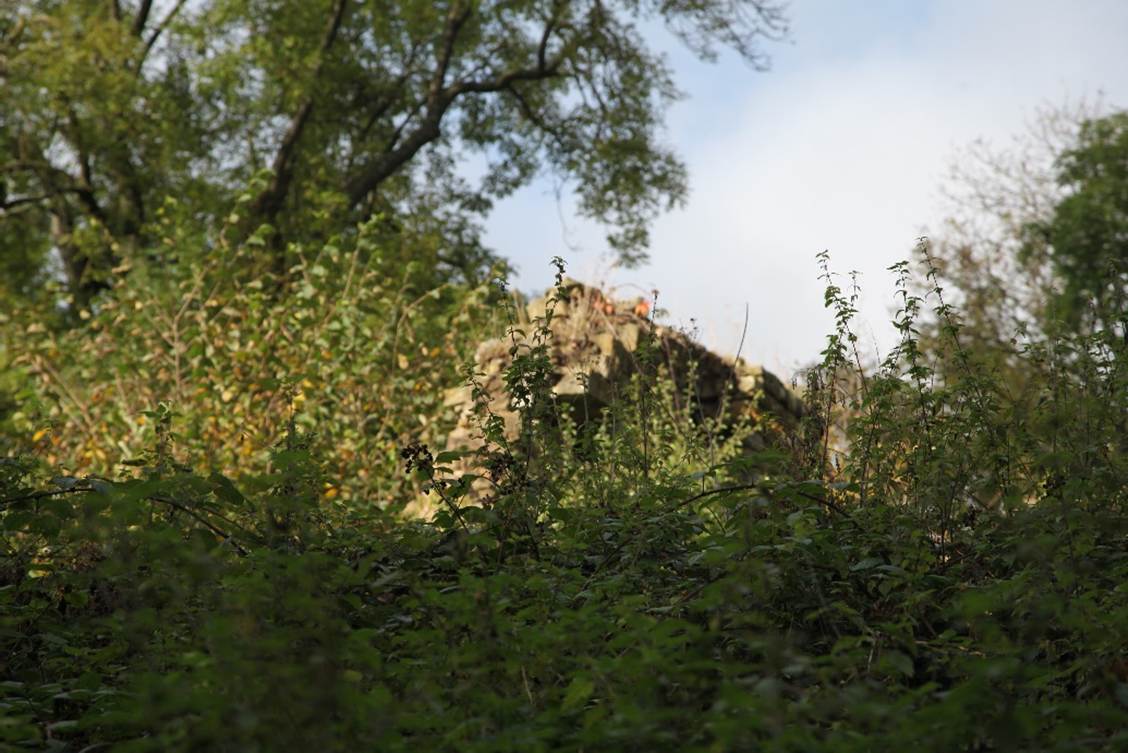
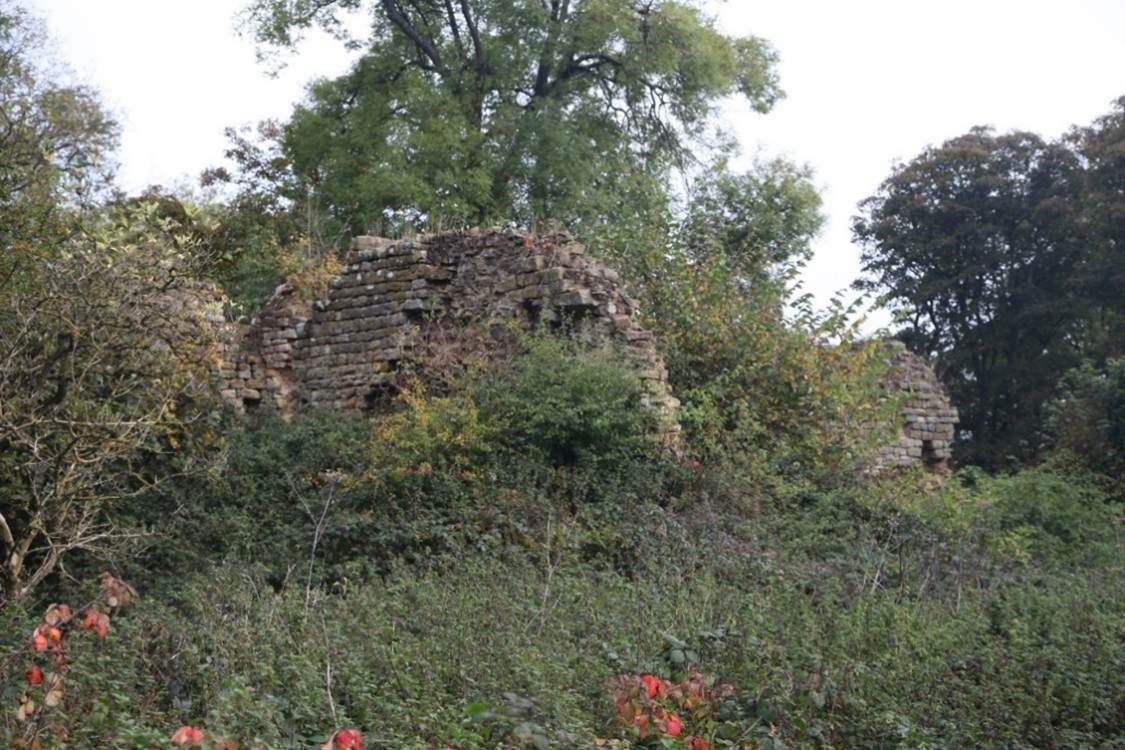
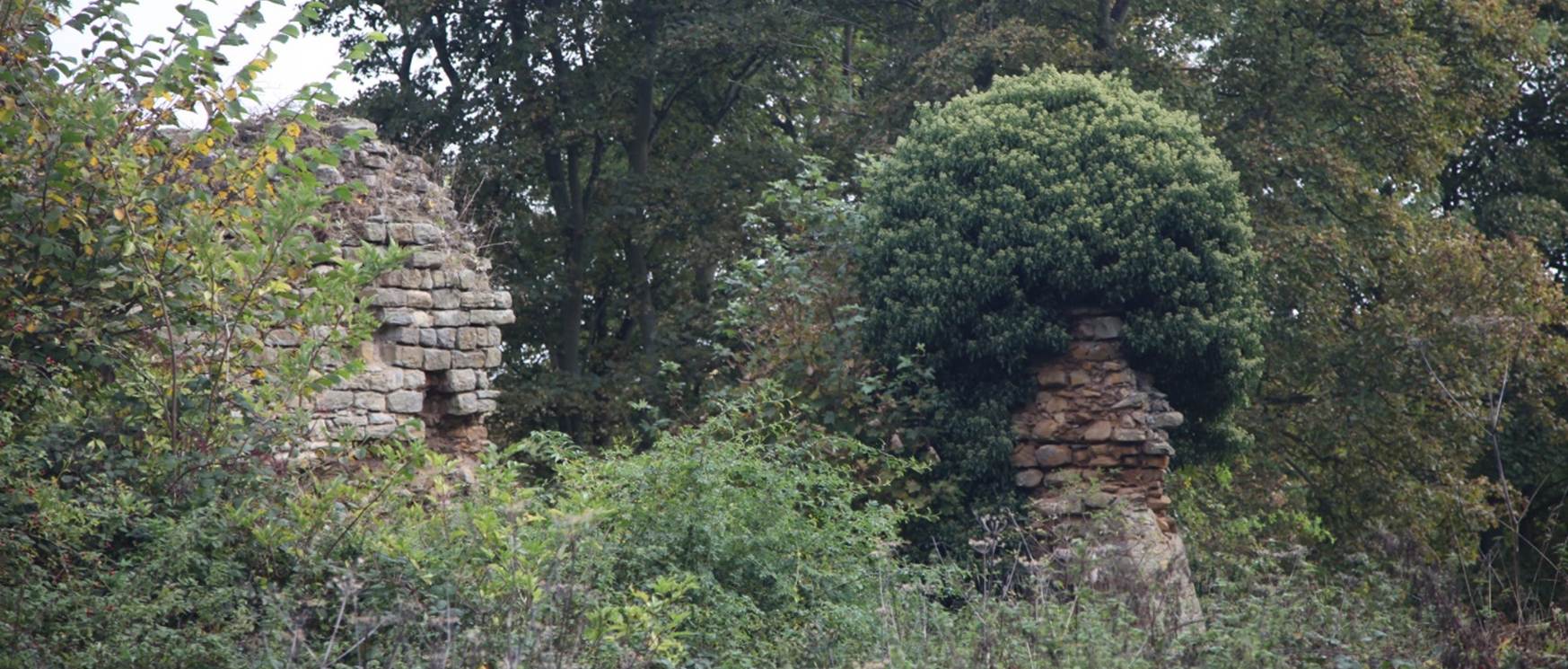
Kilton
Castle in 2016 (it takes a bit of finding!)
1215
Peter de Mauley
tried to besiege the castle between 1215 and 1216 when Sir Richard de Autrey
occupied the castle. After King John’s death in 1216, a settlement was agreed
between de Mauley and de Autrey.
1222
In 1222 de Autrey
died and his widow, still aged only 22, was given by the owner of Kilton
Castle, Sir William de Kylton, to Sir Robert de Thweng (1205 to 1268) through marriage to Matilda de Kylton, niece of Sir William de Kylton
and widow of Richard de Autrey. This coincided with a dispute with the prior of
Guisborough about the ownership.
1232
After an
attempted appeal to Rome, the frustrated Sir Robert rebelled and raided church
property in about 1232, using the nickname Will Wither, or William the
Angry. It is said that he then distributed the spoils, Robin Hood like, to
the poor. He was excommunicated in consequence, but was supported by other
local noble families including the Houses of de Brus, Percy and Neville.
Another appeal to Henry III met with royal support and Pope Gregory IX was
persuaded to rule in his favour. The rebellion came to an end.
1257
When Sir Robert
died in about 1257, the castle passed to his son, Marmaduke de Thweng, who had married Lucia de Brus in about 1247 and
had been born and baptised at Kilton Castle in 1225. His eldest son
Robert was born at Kilton Castle in 1255, then came seven more sons and
five daughters, the last born in 1276. The second son Marmaduke born in
Kilton Castle in 1256 moved to Danby and Kilton went to his eldest son
Robert who died in 1279 leaving only a daughter Lucia.
1285
In 1285,
after Marmaduke’s death, Lucia de Thweng (born
in Kilton castle in 1279 and baptised in the castle chapel) inherited her
father’s lands, initially through the custody of the King, until she came of
age.
1305
Lucia was
married, against her will, to William de Latimer, but they were divorced in 1305
after Lucia famously eloped with a Knight. Lucia returned to Kilton Castle,
though it is possible that even by this date, the castle was falling into ruin.
Lucia (who died in January 1347) by design avoided the de Thweng estates falling to her own sons, and ownership of
Kilton passed to Lucia’s Uncle, Marmarduke Thweng, the First Baron Thweng.
1341
The First Baron’s
son died without heir, and his grandson was killed at the Battle of Stirling
Bridge, and so, in 1341, the castle passed to his eldest daughter, Lucia
de Lumley.
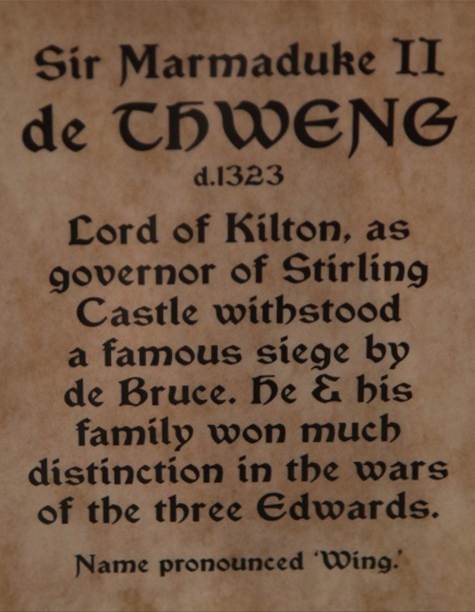
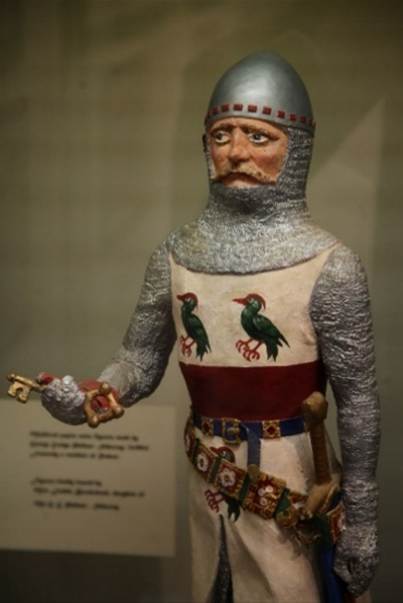
From
the collection at Kirleatham Museum. Marmaduke II de Thweng
played a prominent part in the Scottish wars and a major part in the Battle of
Stirling on 11 September 1297 where his eldest son Marmaduke was killed.
1537
The castle stayed
in the hands of the Lumley family until 1537 when George Lumley was
executed for his participation in the Pilgrimage of Grace (the Yorkshire based
uprising of 1536 protesting against Henry VIII’s break with the Catholic
Church). The Crown then took possession of the castle and certainly by the end
of the sixteenth century, the castle was in total ruin.
The already
ruined castle may also have taken another hammering during the Civil War since
in A Guide to Saltburn by the Sea and the
Surrounding District, With remarks on its picturesque scenery, Fifth Edition,
Dedicated to John Thomas Wharton Esq of Skelton, By John Farndale.
Late of Skelton Castle Farm, Darlington, Printed by Charles W Hird, 1864,
John Farndale wrote “When Cromwell
came that way, He heard the bell at noon; Fixed his cannon as they say, And
brought the castle down.” Yet, not all – as some still remains, cemented
together like iron bound with ivy, for ages to come:
“All ruins are lovely when o’er them is cast
The green veil of ivy to shadow the past;
When the rent and the chasm fearfully yawned,
By the moss of the lichen are sweetly adorned.
When the long grass doth carpet the desolate
halls.
And tress have sprung up in the old withered
walls,
And woven a curtain of loveliest green,
Where once the rich folds of the damask were
seen.
But such thoughts are unheeded while idly we
gaze,
On the desolate grandeur of earlier days;
‘Tis the wreck that is lovely, the wider the
rent
The fuller the view of the landscape is lent.
The wind that now sighs through the tenantless
hall
No thoughts of loved voices to memory call;
All ruins are lovely when o’er them is cast
The green veil of ivy to shadow the past.”
In The History of Kilton, With a Sketch of the Neighbouring
Villages, By the Returned Emigrant, Dedicated to the Rev William Jolley,
Toronto, Canada, America, Middlesbrough, Burnett & Hood, “Exchange”
Printing Offices, 1870, Redcar Cleveland Library Book No: R000040114
Classification: 942.854, Book No: R000040114, John Farndale wrote: Camden,
in speaking of Kilton and Kilton Old Castle, as Farndale has it in his Guide to
Saltburn by the Sea, says “It is situated in a park belonging to the ancient
families of Thweng and Lumley’s. Baron Lumley, of
Kilton Castle, died in battle, having joined the Earl of Kent and others to
restore King Richard, then deposed. Kilton Manors, for there were two, became
forfeited to the crown, but restored to the Thwing’s and Lumbley’s, by Henry
IV, and by marriage to Wm Tulley Esq., who died
at Kilton Hall, and was interred in Brotton Church 1741, aged 72 years. Then to
Dr Waugh, of Carlisle, and next in kin to the Misses Waugh, who sold the estate
to Miss Wharton, of Thirsk Hall, a rich old lady, and this lady presented it as
a gift to her nephew, J Hall Wharton Esq., MP, and
now it is the property of JT Wharton Esq., of Skelton
Castle. At the above date Kilton Hall was then a beautiful building, much
admired. Mr Ord, in giving a description of Kilton Castle, says “Few ruins
in England can equal this venerable relic of antiquity – as a fortress it must
have proved impregnable previous to the introduction of artillery. Standing on
a high triangular precipice unapproachable except on the west, and here it
was defended by a moat and draw bridge, and large massive gate way
doors”
The castle would
have provided economic opportunities for the surrounding countryside. When the
Castle was inhabited, there was a village of some size occupying the site of
the modern farmstead of Kilton Hall, some 600 metres north west of the Castle.
There was a park attached the castle which was described in 1323 as “… a
certain park without beasts of the chase in which there was no profit apart
from herbage thereof …”
Adjacent to the
Castle, medieval Kilton comprised both Kilton and Kilton Thorpe and there were
farmsteads at Stank House, Buck Rush and Greenhills. The farming was probably
of a mixed nature, growing cereals and rearing sheep and cattle. Teams of oxen
ploughed up one side of each strip and turned the soil towards the centre
creating the ‘ridge and farrow’ corrugations which are still visible today.
Blocks of ridge and farrow were called furlongs and at the end of each strip
was a headland, where the ploughs were lifted from the soil and turned around.
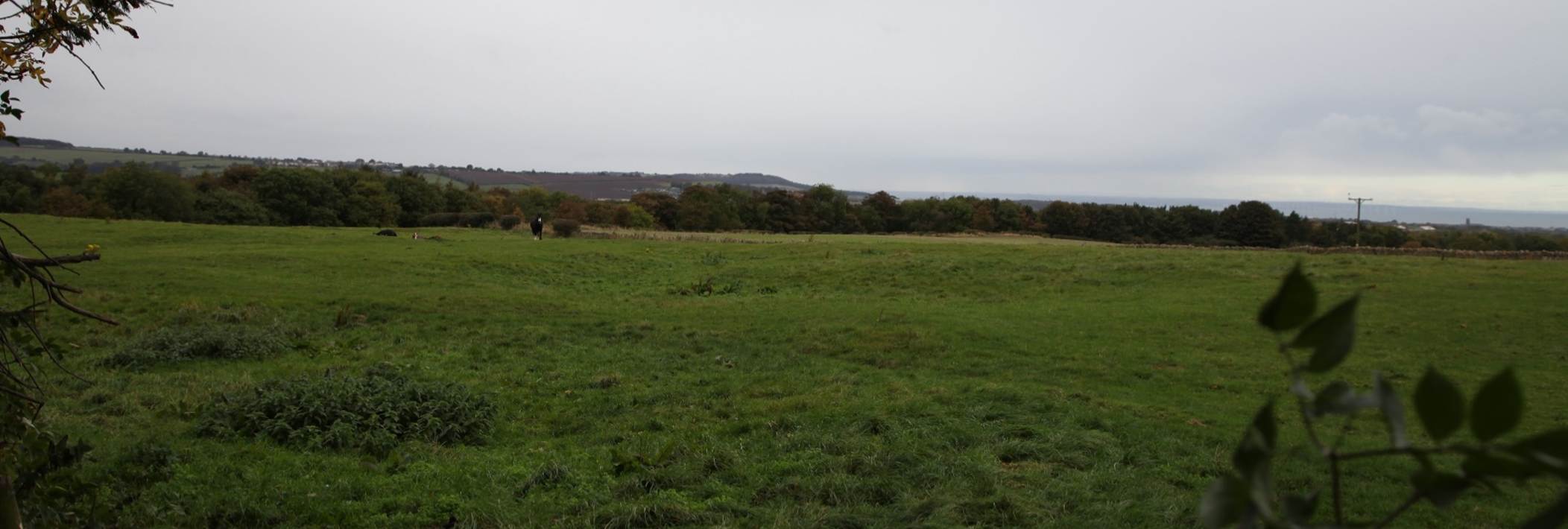
Ridge and farrow
corrugation at Kilton, taken in 2016
There was milling
at Kilton Mill. The road from Brotton to Kilton probably dates to the medieval
period as the ridge and furrow archaeology is consistent with this. The road
from Kilton to Kilton Thorpe is also medieval. The amount of ridge and farrow
in the area of Kilton suggests that almost all the land was cultivated.
2.2 Sixteenth Century
1537
By 1537 when the
Crown took possession of Kilton Castle it was a gaunt, grim, ivy clad ruin.
Thereafter it was used as a local source of building material. There is a story
that Kilton was besieged and destroyed by Cromwell (see John Farndale’s
narration above) but this is most unlikely as by that time it had been
uninhabited for 240 years.
2.3 Seventeenth Century
1680
About 1680 a Mr
Thomas Thweng purchased the Castle from the Crown,
probably a descendant of a junior branch of the family. He certainly did not
live there and it was probably he who built the original Kilton Hall some one
mile away from its stone. His only daughter Ann married Mr William Tully and at
the east end of the chancel of old Brotton church (now no more) was a large
memorial which said "Sacred memory of William Tully of Kilton in this
county, Esq, who departed this life 27 May 1741 aged 72 and is interned
underneath this monument. He married Ann sole daughter and heiress of Thomas Thweng of Kilton Castle in this county, Esq, by whom he
left no issue."
2.4 Eighteenth Century
In the eighteenth century, the medieval fields
were enclosed, and the farmsteads had moved to their present locations.
1754
The Newcastle Courant, 30 March 1754: To be Sold. Now
Growing at Kilton, within two miles of the Sra, near Guisborough, in
Cleveland, Yorkshire. A Large Quantity of full groan OAK, ASH and ELM &c
For further particulars, inquire of William Jackson of Guisborough, who will
fell said trees.
1770
Adam's
Weekly Courant, 11 December 1770 reported on Mr Turner’s Hounds (the hunt
founded by the smuggler, Andrew Turner, later the Roxby and Cleveland
Foxhounds) which passed through Kilton.
1771
Perhaps the start
of a constant battle between landowners and tenants and poachers, could
have started with a report by the Newcastle
Chronicle, or, General Weekly Advertiser, 24 August 1771: Whereas the
Game and Fish within the Lordship or Manor of Kilton, in the North Riding of
the County of York, have, of late years, been greatly destroyed in the night
and at other times, by poachers and other persons, without the leave of Joseph
Tullie Esquire, Lord of the said Manor; Notice is hereby given, that all unqualified
persons killing game or fish within the said Lordship, will be prosecuted with
the utmost rigour: and it is particularly requested that no gentleman will
hunt, shoot, or fish within the said Lordship, without Leave in Writing of the
said Mr Tullie.
1778
The Newcastle Chronicle, 18 July 1778: LOFTHOUSE
BRIDGE. Any person willing to contract for the building of a Carriage Bridge
over the brook dividing the townships of Lofthouse and Kilton, near to the
highway leading from Kilton to Lofthouse aforesaid, may deliver in a plan and
proposals as soon as possible, to Mr Lawson of Stokesley. Mr Farquharson of
Lofthouse will show the place where the intended bridge is to be erected.
1786
John Wharton (21
June 1765 – 29 May 1843) was a British landowner and member of Parliament. He
was the eldest son of Joseph William Hall-Stevenson of Skelton, John Wharton
succeeded his father in 1786, inheriting the ruinous Skelton Castle. He
demolished the old Skelton Castle and between 1788 and 1817 built a similarly
named Gothic country house in its place. By 1829 he was in debt and spent the
next 14 years in the Fleet Debtors Prison, where he died childless in 1843. He
had married Susan Mary Anne, the daughter of General John Lambton of Lambton,
County Durham. He had two daughters who both predeceased him and was succeeded
by his nephew, John Thomas Wharton.
John Thomas
Wharton, to whom John Farndale’s book is dedicated, was born in York on 9 March
1795 and died at Tadcaster on 25 September 1871, aged 76. His uncle, John
Wharton died childless and in poverty in 1843 and Skelton devolved to John
Thomas Wharton of Gilling.
John Wharton of
Skelton Castle was the Squire of Kilton.
… some one hundred and twenty parents and children, besides
men-servants and women-servants; I remember ten farmers occupant of some
seven hundred acres of land, and now it’s absorbed into one large farm, by
laying field to field, and adding farm to farm. Surely this gentleman must be
Lord of Kilton Manors, for formerly it comprised two Manors. Then he asked,
where are all those respected farmers? Had they and their sons to find a home
in some far-away land, and to perish out of sight? I see in the book recorded
and registered in olden time, the names of farmers who once occupied this
great farm – R and W Jolly, M Young, R Mitchell; W Wood, J Harland, T Toas,
J Readman, J Farndale, S Farndale, J and W Farndale, all these tenants once
occupied this great farm; now blended into one.
I remember what a muster at the Kilton rent days, twice a year,
when dinner was provided for a quarter of a hundred tenants, Brotton,
Moorsholm, Stanghoe, those paid their rents at
Kilton; and were indeed belonging to the Kilton Court, kept here also, and the
old matron proudly provided a rich plum pudding and roast beef; and the
steward also a jolly punch bowl, for it was a pleasure to him to take the rents
at Kilton, the day before Skelton rent day. The steward always called old J
Farndale to the vice-chair, he being old, and the oldest tenant. Farndale’s
was the most numerous family, and had lived on the estate for many ages.
Kilton had many mechanics, and here we had a public house, a meeting
house, two lodging houses, and a school house, to learn our
ABCs, from which sprang two eminent school masters, who became extremely
popular; we had a butcher’s shop, we had a London tailor and is
apprentice, and eight other apprentices more; we had a rag merchant and
a shop which sold song books, pins, needles, tape and thread; we had five
sailors, two soldiers, two missionaries, besides a number of old people,
aged 80, 90 and 100 years. But last, not least, Wm Tulley Esq.,
who took so much interest in the old castle – planted its orchard, bowling
green, and made fish ponds, which were fed by a reservoir near the Park House, Kiltonthorpe, Kilton Lodge, together with all these
improvements around the castle, which are now no more.
In A Guide to Saltburn by the Sea and
the Surrounding District, With remarks on its picturesque scenery, Fifth
Edition, Dedicated to John Thomas Wharton Esq of Skelton, By John Farndale. Late of Skelton Castle Farm, Darlington, Printed
by Charles W Hird, 1864, John Farndale wrote of the late
eighteenth century:
Kilton formerly
contained a few tradesmen – namely two joiners, two coopers, two weavers,
one butcher, a publican, a water miller, a rag merchant, an old man with nine
children, two sailors, and a banker’s cashier. At one time it had four
sailors – one was taken prisoner in the French War, an old man, aged
87, and yet living – another, a missionary to the French prisoners, died in
France, aged 87, a noble fellow, was formerly in the Life Guards. Seventy
years ago Kilton had eight farmers; it now has only one. It had then fifty
four children, now only seven – then twenty four parents, now only five – and
then nine old men and women rom eighty to one hundred and five years of age.
The inhabitants of this village, as may be expected, were long lived; most of the
old men were of the giant tribe, their ages averaging at death eighty seven
years. My children’s children comprise the sixth generation of our family that
has lived at Kilton estate upwards of two hundred years.
In former days
the inhabitants of this district were Jacks, and Toms, and Mats; now they are
either Misters or Esquires, and thick as mushrooms around us. In those days
there were no Mistresses or Ladies among them, they were all Dames – there wore no silk gowns, no veils, no crinolines, no bustles;
but home spun garments, giving employment to the inhabitants, warmth and
comfort to the wearers, and lasting for fifty years. Specimens at home.
John Farndale recalled one family named Swales
noted for oddness and singularity of manners. When they dined together they all
dipped into one dish. The parent once called out for bread, exclaiming “I eat
bread to every thing.” A little urchin answered “Now,
Fadder, thou lies, thou doesn’t eat bread to cake!”
When the old man died, a large multitude gathered at his funeral. He was
brought through Kilton to Brotton to be buried, and this youth was noticed last
at the grave side, and looking into the grace he at length broke the silence
and said “Farewll, fadder!”
and a second time he said, “Farewell, fadder!” and a
third time, with all his might, making the welkin ring, he exclaimed,
“Farewell, fadder!” and then left the graveside with
a sad heart and a sorrowful countenance. The end of this rough, untutored
fellow was untimely. In an evil hour his cart overturned over him, and two
nights and a day he lay dying. The following lines he intended for his
tombstone:-
“Whea lies here? Whea dye think?
Poor Willy Swales, he loved a drop o’ drink.
Drink to him as you pass by,
For poor Willy Swales was always dry.”
There was another
servant of my father’s, named Ralph Page, equally as singular as Willy
Swales. As Ralph was once busily ploughing, a French Privateer, threatening
land at Skinningrove, fired into the town. Those in the district who had
guns assembled on the cliffs and fired a volley in return. To intimidate the
enemy the women mustered strong and attired in red cloaks and shouldering
sticks, to represent a body of soldiers, they stood far away in the
distance. Ralph took little notice of the privateer, not bothering his head
either with the French or the English, only they let him be, when a young woman
passing in haste, cried out “Ralph, French is landing.”. Ralph, turning round,
with the greatest coolness replied, “Then run yam, and sup all’t
cream,” and unconcerned he ploughed away as though nothing was the matter.
The next day the
king’s cutter arrived, and the privateer and her had an engagement, when the
Frenchmen were beaten and the vessel taken, to the great joy of the inhabitants
of the surrounding district.
Here let me
narrate one anecdote more or a man whom I well knew, and who lived and died at Moorsholm. There was an assize trial at York, about a water course running under ground, and Paul,
for that was the man’s name, who was a fine upright fellow, with a high brow
and a bluff face, had to appear as a witness on the occasion. When Paul went
into the witness box, the counsellor on the opposite side having silenced a
man of letters, very promptly said to Paul, as he stared at him, “Well Mr Baconface, and what have you to say on the subject?” “Whya.” Replied Paul, with a significant grin, “If my bacon
face and thy calf face were boiled together they wad mak
good broth!” The councillor looked abashed, and the whole court roared with
laughter. The counsellor recvering his self possession, then tried to put Paul into a fix about
the watercourse by inquiring what he knew about it, and in a triumphant
tone of voice he said, “And how, my man, do you know that the same water ran
out of the course that ran into it?” “How did I know that?” reiterated Paul, “Whya, I tuek care thou sees t’
muddy watter before it went in, and it cam out muddy.” The court enjoyed a hearty laugh,
and the result was, the learned councillor lost his cause.
1795
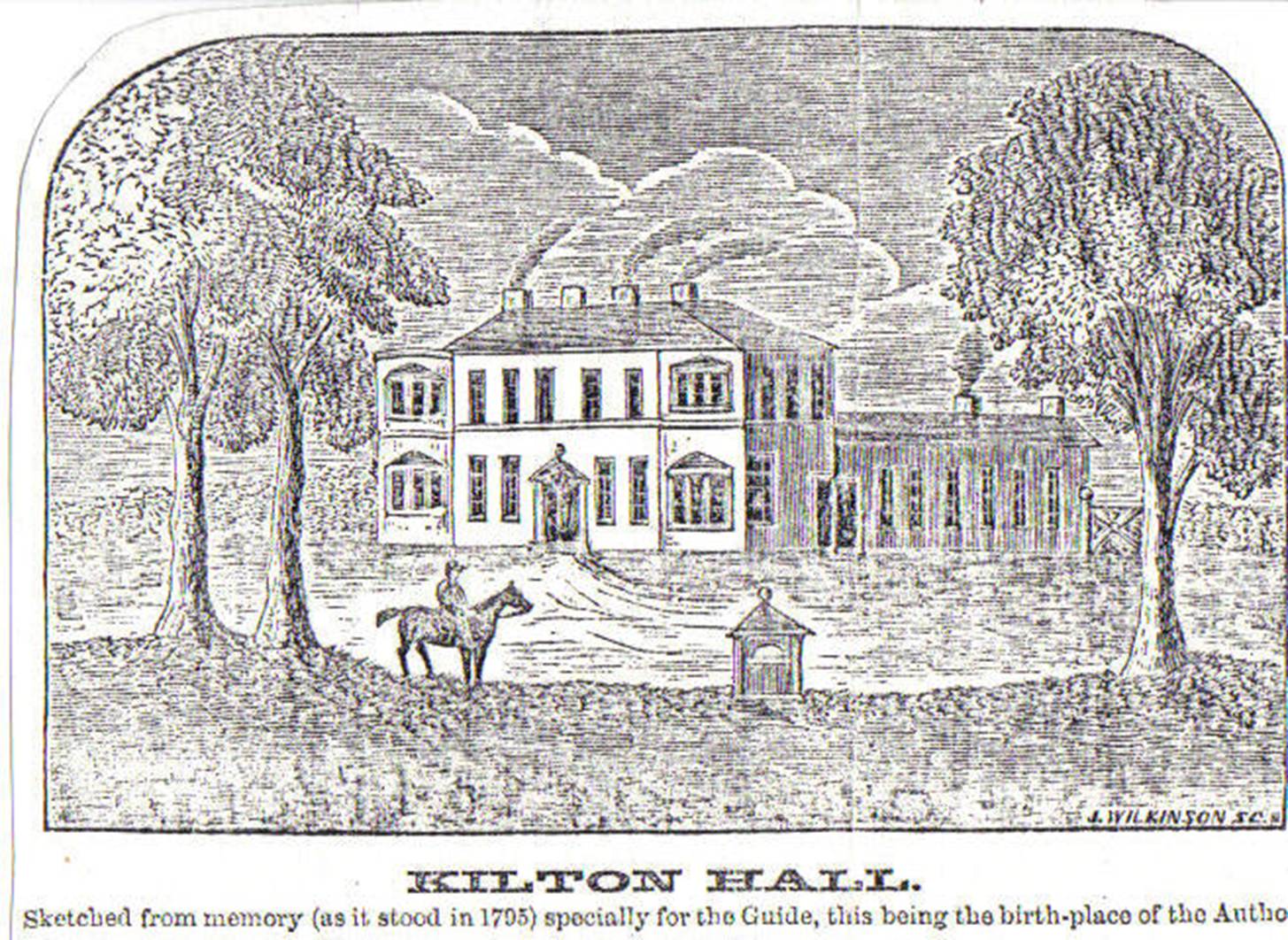
Kilton Hall 1795
sketched by John Farndale
1799
The Hull Advertiser, 19 January 1799: Education.
Miss Greens’ respectfully acquaint their friends and the public that their
school opens again on Monday 21, at Kilton Lodge, near Guisborough,
where YOUNG LADSIES are taught every branch of useful and ornamental education
on the following terms: Entrance £1 1 0. Board, English grammar, and every kind
of needle work £16 16 0. Writing and arithmetic £1 1 0. Geography £1 1 0. Use
of piana forte £1 4 0. Use of drawers £0 5 0. Each Young Lady to bring a pair of sheets,
two towels, spoon, knife and fork, or pay one Guinea for the use of them.
The Impact of
Agricultural Change on the Rural Community - a case study of Kilton circa
1770-1870, Janet Dowey: The most predominant family at Kilton was
the Farndales, their ancestry ages old. Its most distinguished
member John Farndale wrote numerous books on the area. Kilton, the village
itself had been a thriving community consisting of a public house, a meeting
house, two lodging houses and a schoolhouse, from which sprang two eminent
schoolmasters. A butcher's shop, a London tailor and his apprentice and
eight others, a rag merchant, a shop which sold some books, pens, needles, tape
and thread. Five sailors, two soldiers, two missionaries plus a number of very
old people.
The picture John Farndale paints is of a peaceful rural community who
boasted of no poachers, no cockfighters, no drunkards or swearers. A church
going people who met together on a Sunday afternoon. Kilton at that time had
nearly 20 houses and a population of 140 men, women and children, a Hall,
stables, plantation and the old Castle plus 12 small farms. When John wrote
these books he was speaking of a time long since gone (the early nineteenth century),
he listed each family that lives lived within the village.
Robert Jolly was a farmer and a staunch Wesleyan. After his death his farm was
carried on awhile by his sons. This being the time of Nelson's death (1805),
John goes on to say that there was great reformation in Kilton estate,
"the little farms were joined together, about 150 acres each. Every farmer
had to move to a new farm. The sons of Robert Jolly each moved away at this
time, one became a lifeguard to George III and the other eventually became a
minister. William Bulmer was another native of Kilton and married with nine
children, he made his living buying and selling, but all his children moved
away into 'respectable' situations."
Many of the farmers were weavers too, one in particular, George Bennison, had
two looms plus his land and also prepared a colt for Northallerton fair once a
year stop. The children of these farmers continually moved away from the
district and agriculture. John Farndale says "and now they disappear, but
where are they gone, I know not". John Tuke says "it is observable,
but in those families which have succeeded from generation to generation to the
same farm, the strongest attachment to old customs prevails. For conduct and
character, the farmer under survey must deservedly rank high among their
fellows in any part of England, they are generally sober, industrious and
orderly; most of the younger part of them have enjoyed a proper education, and
give a suitable one to their children, who, of both sexes, are brought up in
habits of industry and economy. Such conduct rarely fails meeting its reward;
they who merit, and seek it, obtain independence, and every generation, or part
of every generation, may be seen stepping forward to a scale in society
somewhat beyond the last."
However Thomas Hardy in his book "Tess of the D'Urbervilles", states
"all mutations so increasingly discernible in village life did not
originate entirely in the agricultural unrest. A depopulation was going
on." The village life which Hardy talks about had previously
"contained" side by side with agricultural labourers an
"interesting and better informed class". These included a carpenter,
a Smith, shoemaker, huckster "together with nondescript workers" in
addition to the farm labourers. A group of people who "owed a certain
stability of aim and conduct to the fact of their being life-holders or
copyholders or occasionally small freeholders." When the long holdings
fell in they were rarely again let to identical tenants, and they were usually
pulled down, if they were not needed by the farmer or his workers.
"Cottagers who were not directly employed on the land were looked upon
with disfavour, and the banishment of some starved the trade of others, who
were thus obliged to follow." Families such as these had formed the
backbone of the village life in the past who were the depositories of the
village traditions, had to seek refuge in the large centres; the process,
designated by statisticians as the tendency of the rural population towards the
large towns being really the tendency of water to flow uphill when forced by
machinery.
1806
The Yorkshire
Herald and the York Herald, 21 Jun 1806, Sat ·Page 3 reported the death
of George Thompson of Kilton on 29 May 1806 who had been master of a ship, the
Glory, of 98 guns, who had been involved in more than 25 engagements across the
world during his life.
1809
The Skelton and Kilton Terrier in 1809 provided a
detailed record of the tenanted farmland in 1809. A
‘terrier’ is a record of field names, with reference number, land use, acreage,
value per acre and rent.
The Kelton land included
records of the landholdings of William Bennison, George Bennison, William
Farndale (FAR00183),
Robert Solley, Robert Barker, Ralph Newbiggin, William Stephenson, Ralph
Mitchell, John Farndale (FAR00167), and
William Wood.
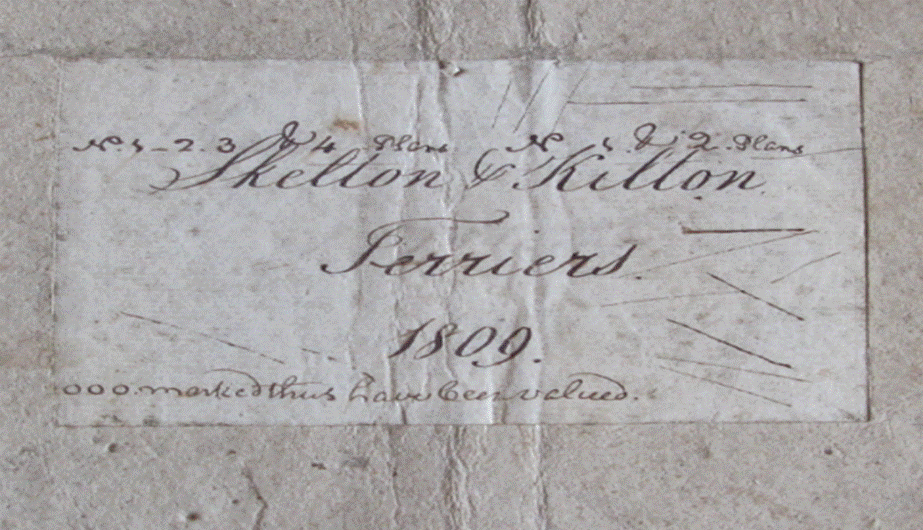
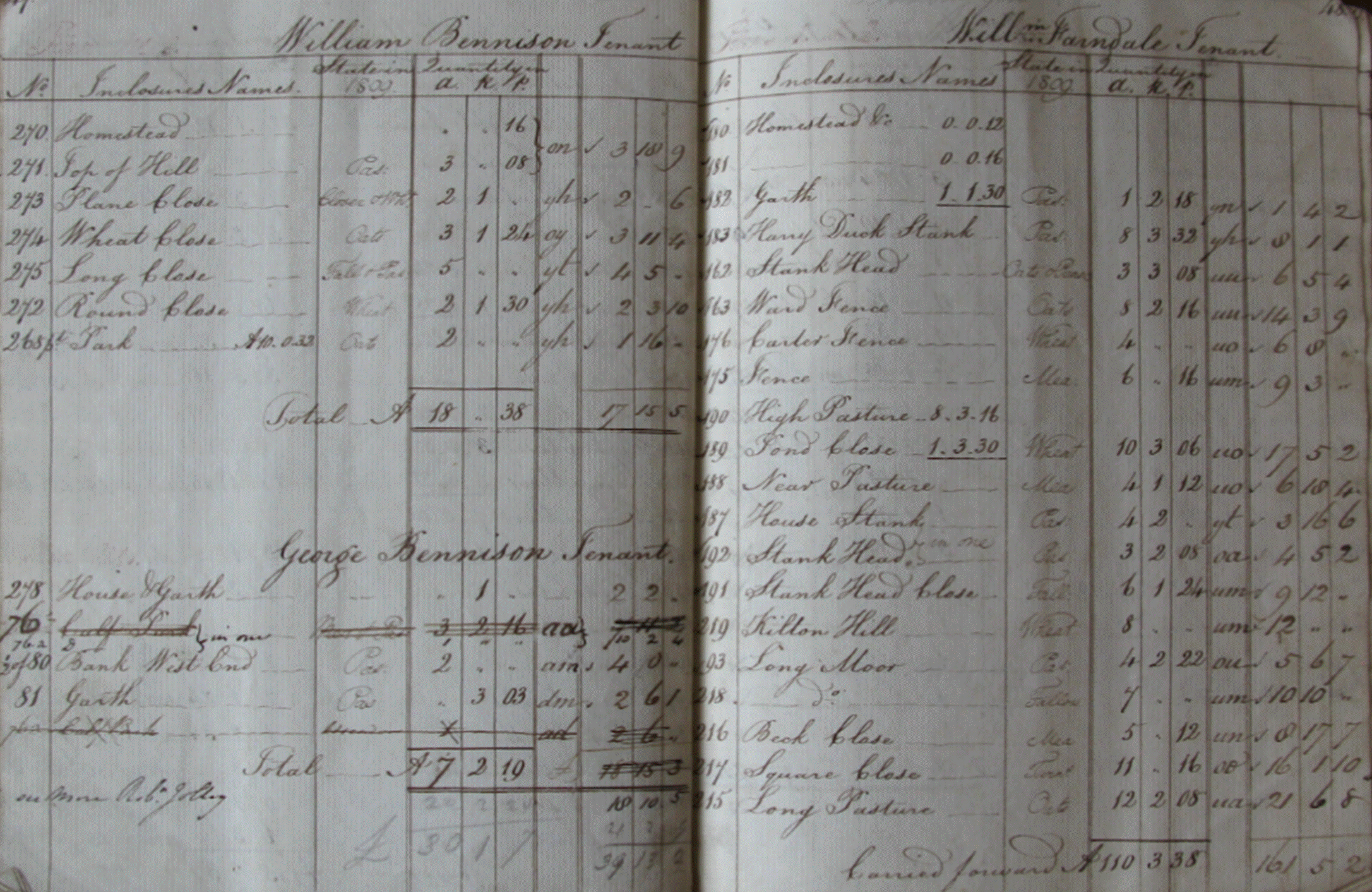
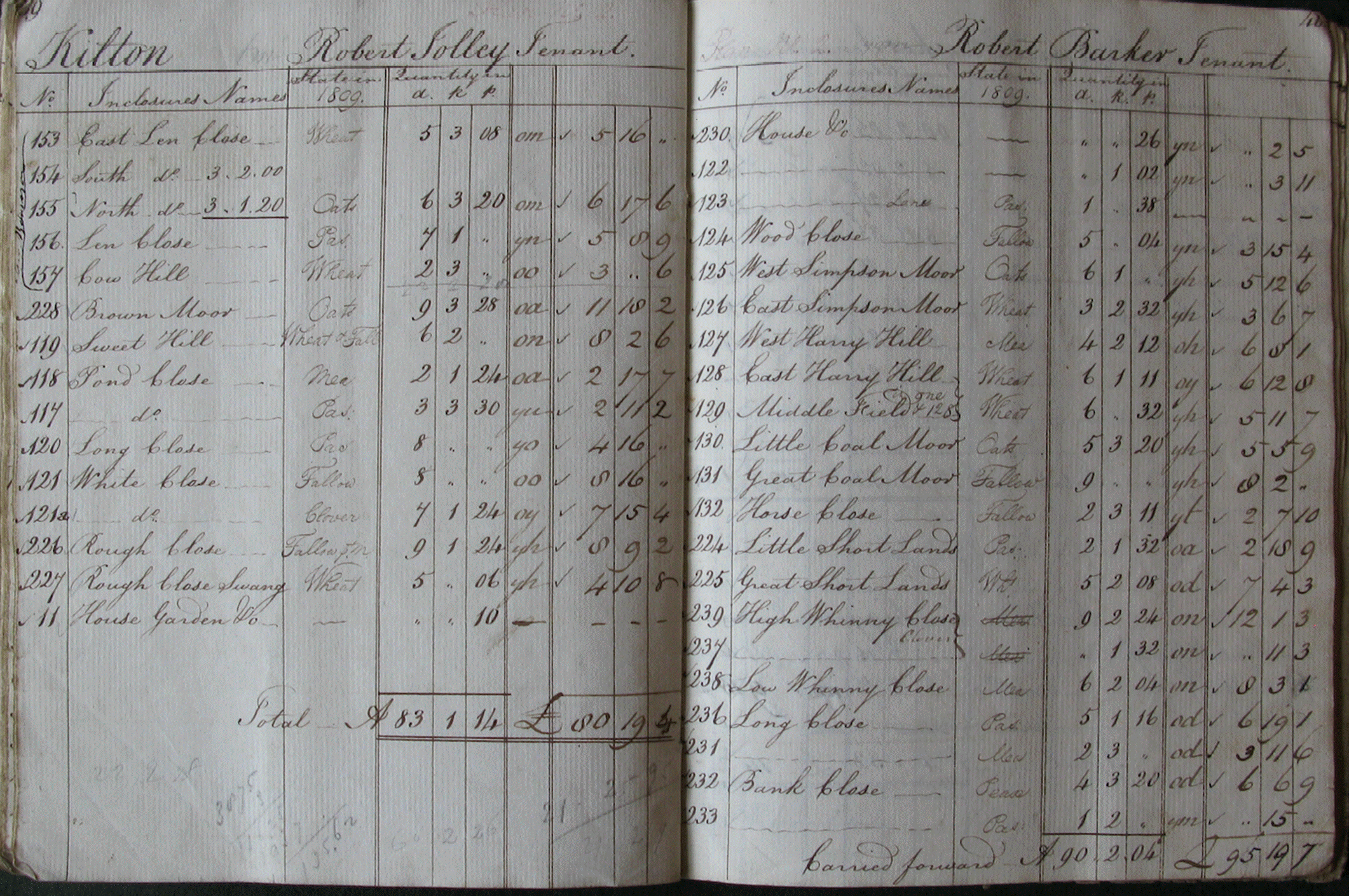
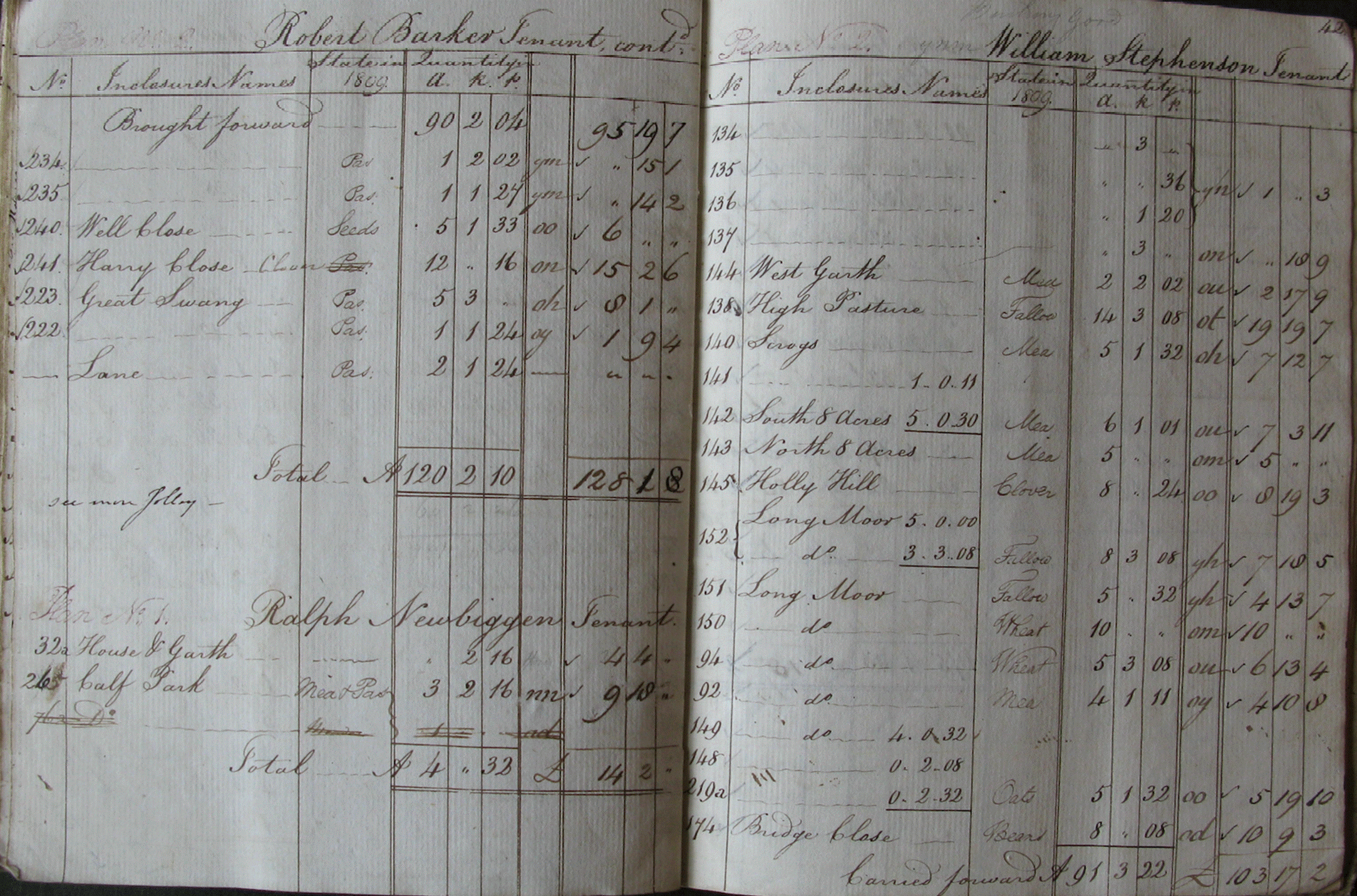
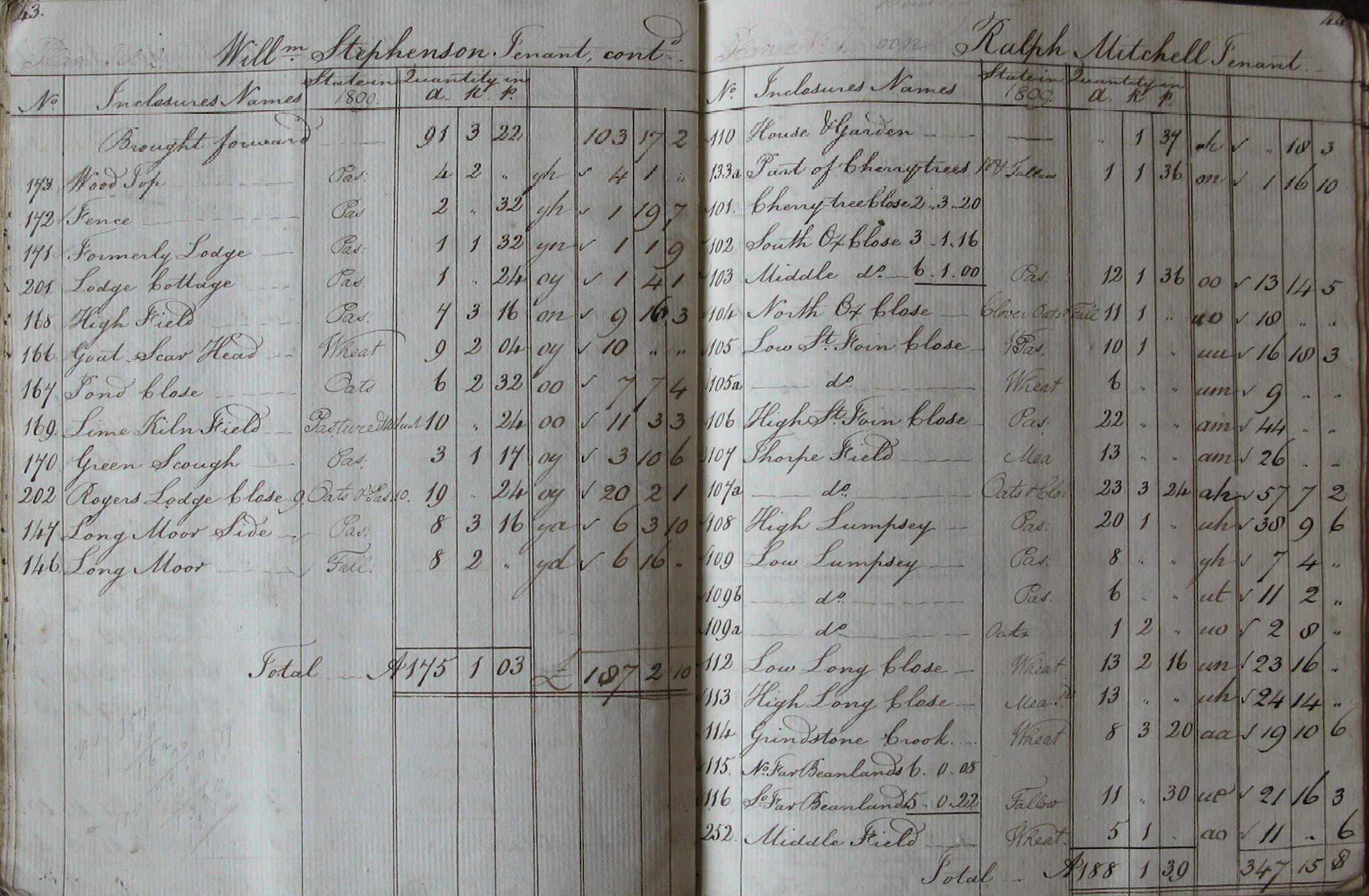
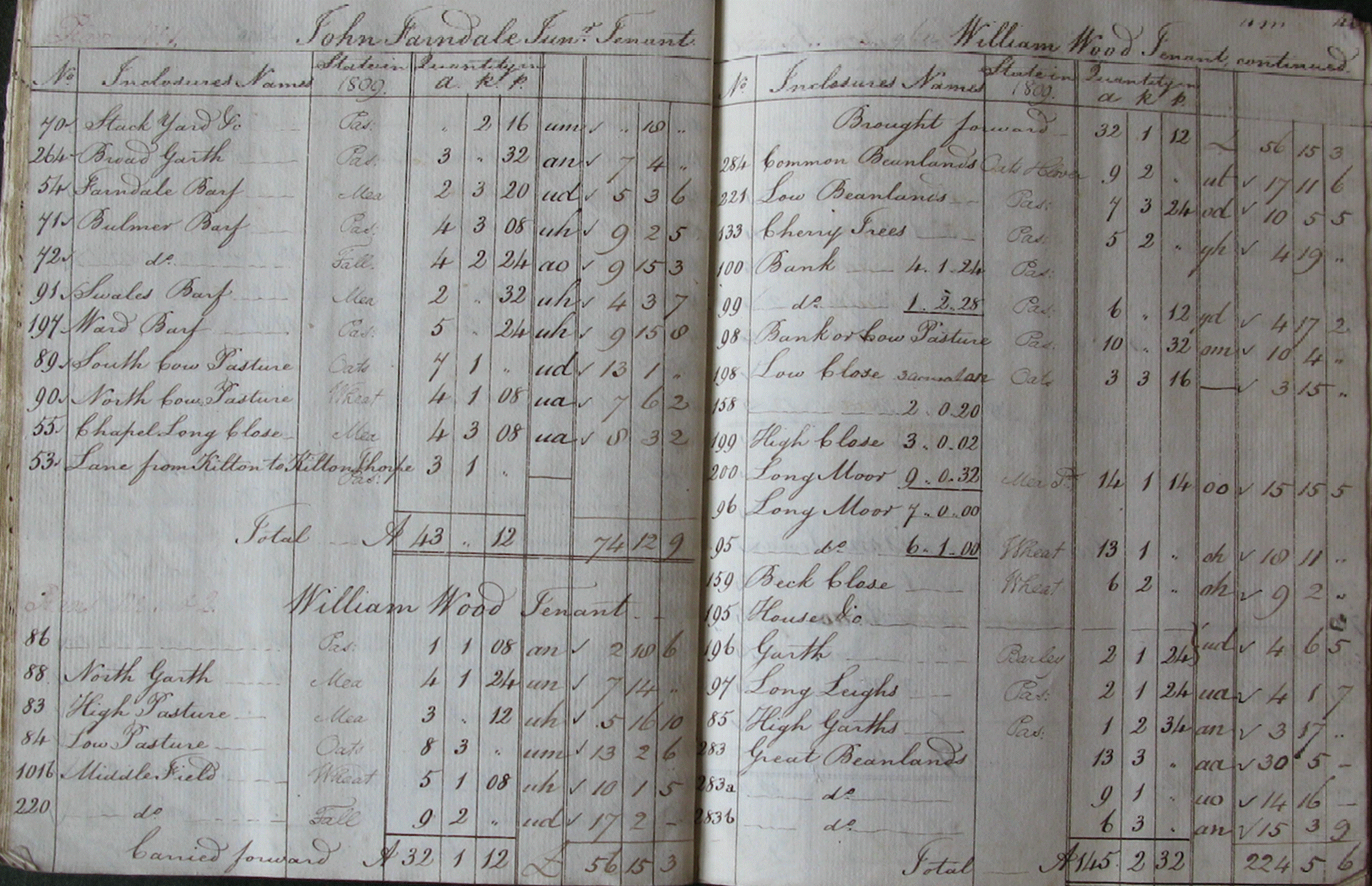
1817
The Yorkshire Herald and the York Herald, 22 Nov 1817, Sat
·Page 3 reported that the Roxby and Cleveland Foxhounds were to meet at
Kilton Mill Monday 24 November 1817. There were many similar notices over the
following years. The Roxby and Cleveland Hounds were formed by the notorious
smuggler, John Andrew of the White House at Saltburn.
1822
The
Topographical Dictionary of Yorkshire by Thomas
Langdale of 1822 described Kilton, in the parish
of Skelton, east division of the wapentake and liberty of Langbaraugh, 7 miles
from Guisbrough, 15 from Stokesley, 16 from Whitby, population 129. Kilton
Thorpe was also listed with the same description, but no population was given.
1823
The Yorkshire Herald and the York Herald 22 Nov 1823, Sat
·Page 1 reported that man traps and spring guns had been set in the
woods, plantations and pleasure grounds of John Wharton Esq at Skelton, Kilton,
Brotton and Great Moorsholm to stop trespassers.
1825
The Yorkshire Herald and the York Herald 11 Jun 1825, Sat
·Page 3 gave notice of the diversion of a part of the highway at
Skinningrove and Kilton leading from the market town of Guisborough to
Lofthouse, of a length of 344 yards and 15feet in breadth, and for making a new
highway “more commodious to the Public” to replace that section from a
lane at Kilton and Lofthouse and extending south east and north east through
and over the lands of John Wharton Esq and John Maynard.
1833
There were
general elections in 1832 and 1835. The Yorkshire
Herald and the York Herald 14 Sep 1833, Sat ·Page 1 gave notice that the
three gentleman appointed to revise the list of voters for the North Riding of
the County of York would come to Guisborough on 11 October 1833 in order to
revise the list of voters for a number of towns including Kilton and Brotton.
1835
The Yorkshire Herald and the York Herald 5 Sep 1835, Sat
·Page 1 gave notice that a Commissioner had been appointed to execute
“An Act of for Inclosing Lands in the Manor of Skelton, in Cleveland, in the
County of York” and in doing so the Kilton Road was to be divided and inclosed. The Act of 1813 was passed for the enclosing of
the lands of the manor of Skelton and the Commissioner was appointed to make
inquiries and examine witness living within the manor boundaries.
2.5 Victorian Kilton
In the nineteenth
century, the opening of the Kilton and Lumpsey
ironstone mines, and the arrival of the railway into the township, had a major
impact on the landscape.
The Impact of
Agricultural Change on the Rural Community - a case study of Kilton circa
1770-1870, Janet Dowey: … The Kilton John Farndale knew and loved
…had changed beyond belief. Several of the very old and larger
states were less crowded than they had been; where a better cultivation had
taken place, the small cottages had given way gradually to shape a farm worthy
of the person having such money to improve it. A lot of the field structures
and hedges were still in place, only some of the hedges had been taken out to
make bigger fields. The hedge structure at Kilton was probably there 50 years
before John Farndale was born. In one instance a hedge appears to have been put
in to divide a field.
Some of the
reasons for the demise of Kilton were the industrial revolution, which was the
need to centralise craftsmen from the small villages, a revolution in farming
methods and farming machinery, a wholesale destruction of the village for the
town. The Napoleonic Wars had an influence on the price of farm produce, the
price of food was kept at a fairly high level during the war but after the war
finished the price of grain fell to one of its lowest levels along with falling
meat prices, and disastrous harvests. Farming methods were needed to get the
harvest in quicker. This finally led the landlord to enlarge the farms and
bring in a farmer with money to modernise the farm. The mechanisation of
farming policies on the one hand and the progressive quantity of urban
factories on the other, combined to drastically alter that rural life. Taking
into consideration also the turnpike roads, the invention of the railway and
the canal networks it is obvious that economic and technological forces were
bringing far reaching changes. During the period when enclosure was in
progress, "the revolution in agricultural methods", there was moderately
steady process of new village creation, a considerable upsurge within the 18th
century. Enclosure or amalgamation of the Kilton village farms, probably
happened in the late 1860s, thus was the complete destruction of the village.
Kilton became a victim not only of the
"Monstre farm" but also of the Industrial
Revolution.
"And now dear Farndale, the best of friends
must part,
I bid you and your little Kilton along and final
farewell.
Time was on to all our precious boon,
Time is passing away so soon,
Time know more about his vast eternity,
World without end oceans without sure."
John Farndale. 1870
"Now much has
changed, we oft times have looked and looked again, but no corner of this large
farm has been neglected. Witness, this rich stack yard of 100 acres of wheat,
the staff of life, and 100 more, oats, beans, peas, hay, clover, potatoes and
turnips piled up against the winter storms. In the fold are housed 100 head of
sheep, a stable with 14 farming horses, besides the young horses, pigs and
geese in abundance, carts, wagons, ploughs and harrows and all implements.”
1839
The Yorkshire Gazette, 2 November 1839 reported that
Hannah Mitchell of Kilton won a sovereign for the best cheese made out of the
district at the Whitby Cheese Fair.
1872
In Kelly’s Post Office Directory of 1872: Kilton
is a township, 6 miles north east by eat of Guisborough, and one south from
Brotton. Here was formerly a castle of which but few traces remain. Here are
church schools, recently erected and supported by John Thomas Wharton esq who
is lord of the manor and landowner. The population in 1861 was 93; in 1871,
222; acreage 1,723; gross estimated rental £1,731; rateable value £1,593.
In The History of Kilton, With a Sketch of the Neighbouring
Villages, By the Returned Emigrant, Dedicated to the Rev William Jolley,
Toronto, Canada, America, Middlesbrough, Burnett & Hood, “Exchange”
Printing Offices, 1870, Redcar Cleveland Library Book No: R000040114
Classification: 942.854, Book No: R000040114, John Farndale imagined his
return to Kilton after years of absence when he took the well known lane down to Kilton, when at Howe Hill, and
seeing a towering chimney above all; what misgivings now trouble his
unprepared, peaceful breast. But when he neared his father’s homestead, and no
place of it could be found, he moved forward, and looking right and left, he
saw some twenty cottages and farmsteads, and behold that beautiful hall and
stables that once graced this little town had all disappeared. And he would
have enquired had there not been some eruption or some hostile invasion, or had
the city not been burnt to ashes, for said he, here are marks of violence and
desperation. But “I know nobody no not I, and nobody, nobody here cares for
me,” and he lifted up his voice and wept aloud. And he began to examine the
book of records, and genealogies of former days, days of his fathers’, and of
his youth.
In A Guide to Saltburn by the Sea and the Surrounding
District, With remarks on its picturesque scenery, Fifth Edition, Dedicated to
John Thomas Wharton Esq of Skelton, By John Farndale.
Late of Skelton Castle Farm, Darlington, Printed by Charles W Hird, 1864,
John Farndale wrote:
The picturesque
scenery, however, in this neighbourhood still retains its loveliness, and the
late John Wharton, Esq., of Skelton Castle, did much
to improve its beauty. On every side where there was any waste land
he planted it with wood to a great extent, and a large number of larches and
oaks then planted, I planted with my own hands. On visiting this place lately,
what was my astonishment on perceiving that many of these larches were cut and
measured fifty cubic feet, while the oaks were in thriving condition and
measured twenty four cubic feet. The site of these plantations is delightful,
as they are finely sheltered from the piercing north winds.
The scenery of
these woodlands, together with the woods of Lady Downs and the Earl of Zetland,
appear so truly picturesque from Kilton height that it is utterly impossible
for my pen to describe it. Beyond these woodlands rise in view the village of
Lofthouse, with the Alum Works, and the seat of the late Sir Robert Dundas.
These works are now superintended by William Hunton Esq.,
an old school fellow of mine. A little further on lies Easington and Boulby Alum Works, conducted by G Westgarth, Esq., a gentleman much respected. Still further, situate on
the sea shore, stands the well known fishing village
of Staithes, formerly proverbial for the roughness and rudeness of its
inhabitants. Though rough, however, they were then as they are now a hardy,
kind, and hospitable people, who obtain a living by braving the perils of the
great deep. Poor Thrattles, once reckoned the King of Staithes, and who was a
good fellow, is now no more, and the place is much changed since bis days. But
the reader, perhaps may not care about lingering at Staithes, so we shall take
our stand again on Kilton How Hill, from whence may be seen the most delightful
scenery in the district.
Chapter 3 - The
Farndales of Kilton
3.1 The Farndales and
Kilton
It is hard to
know exactly when the first member of the Farndale family came to Kilton.
Certainly they were there by the late seventeenth century and in the sixteenth
and early seventeenth centuries there were Farndales at Liverton, Moorsholm,
Skelton and Kirkleatham.
1705
By about 1705,
Kilton was the home of the Farndales for almost two hundred and fifty years.
In A Guide to Saltburn by the Sea and the Surrounding
District, With remarks on its picturesque scenery, Fifth Edition, Dedicated to
John Thomas Wharton Esq of Skelton, By John Farndale.
Late of Skelton Castle Farm, Darlington, Printed by Charles W Hird, 1864,
John Farndale wrote of the late
eighteenth century: My children’s children comprise the sixth generation
of our family that has lived at Kilton estate upwards of two hundred years.
In The History of Kilton, With a Sketch of the Neighbouring
Villages, By the Returned Emigrant, Dedicated to the Rev William Jolley,
Toronto, Canada, America, Middlesbrough, Burnett & Hood, “Exchange”
Printing Offices, 1870, Redcar Cleveland Library Book No: R000040114
Classification: 942.854, Book No: R000040114, John Farndale imagined his
return to Kilton after years of absence when he recalled:… The steward
always called old J Farndale to the vice-chair, he being old, and the oldest
tenant. Farndale’s was the most numerous family, and had lived on the
estate for many ages…. here
we have chronicled something like a genealogy of a race of people once throng
the streets of Kilton, but where are they now to be found? Many of them have
gone to their everlasting reward, yet a few, a small few, remain unto this day.
3.2 John Farndale (FAR00116) (27 June 1680 to 5
October 1757), householder of Brotton, perhaps the first Farndale at Kilton.
The Founder of The
Kilton 1 Line.
John Farndale was
baptised at Liverton
on 27 June 1680, the son of Nicholas and Elizabeth (nee Bennison) Farndale (FAR00082). John Farndale
married Elizabeth Bennison on 5 February 1705 at Brotton.
He was probably
the first of the family to move to Brotton, perhaps at about the time of his
marriage to Elizabeth and their family of five were born in the Parish of
Brotton, probably in Kilton. He may have been a farm labourer, of may have been
a tenant farmer.
So the Farndale
association with Kilton probably started in around 1705.
John Farndale,
householder was buried at Brotton on 5 October 1757 at St Margaret Anglican
Church, Brotton. He would be 77 years old (Brotton
PR).
3.3 John Farndale (FAR00143) (28 February 1724 to 24
January 1807), “Old Farndale of Kilton”, a farmer, alum house merchant, yeoman
and cooper. The Kilton 1 Line.
John Farndale was
baptised at Brotton
on 28 February 1724, the son of John and Elizabeth Farndale (FAR00116)(BMD).
John Farndale is
shown as tenant of Cragg Farm on the Wharton Estate of 31 acres in 1773 for
which he paid rent of £26 (17s an acre).
John
became a tenant farmer at Kilton and became known as ‘Old Farndale of Kilton’.
In His Grandson’s
Booklets, ‘A Guide to Saltburn By The
Sea’ John Farndale, his Grandson writes, ‘My
Grandfather, who was a Kiltonian, employed
many men at his alum house, and many a merry tale have I heard him tell of smugglers and their daring
adventures and hair breadth escapes.’
In
his booklet , The History of Kilton’ John
Farndale his Grandson wrote, Once more I stand on Skinningrove duffy sands,
where I have seen it crowded with wood and corf rods
for the North by the said Wm and John
Farndale. But what crowds of horses, men, and waggons, when
the gin ship appeared in view. Our friends had no dealings with those
Samaritan gin runners, yet they had great dealings at Skinningrove seaport,
both in export and import, as well as supplying the hall of F Easterby Esq.,
with corn, wheat, oats, beans, butter, cheese, hams, potatoes &c, &c,
and once, a year at Christmas – they
balanced accounts, over a bottle of Hollands gin, and after eulogising each
other, the squire would rise and say, “Johnny, when you are gone, there
will never be such another Johnny Farndale”. Here lived the King’s
officer, in the high season of gin running, but I knew of few captures; he
wished to live and die in peace, and the revenue received little from his
services. Near Skinnngrove are the Lofthouse iron mines, Messrs Pearse,
lessees. Above is the grand iron bridge standing on twelve massive pillars, 178
feet high, which spans the cavern from the Kilton Estate to Liverton Estate, the
first and grandest in all England. Lofthouse, and their long famed alum works,
which has been the support of Lofthouse for ages gone, but now discontinued.
How well I remember my school days when we faced all weather through Kilton
Woods, and how I respected my masters – the Rev Wm Barrick, Mr Wm King, the
great navigator, and Captain Napper, steward to the works. The popular
Midsummer Lofthouse fair was the only fair we children were allowed to attend.
John
Farndale, of Kilton Thorpe was buried in Brotton Old Churchyard on 27 January
1807. He was aged 83. He had lived for 18 years after the death of his wife and
outlived four of his eight children.
3.4 William Farndale (FAR00146) (born 1725). The Founder
of The Kilton 3 Line.
William Farndale
was a farmer of Craggs who may have been associated with Kilton.
3.5 John Farndale (FAR00177) (5 October 1755 to 26
October 1829. The Kilton 3 Line.
John Farndale was
baptised at Brotton on 5 October 1755, the son of William and Mary Farndale (FAR00146). He married
Hannah Wilson in 1787. By 1794, John was farming in Kilton.
The Skelton Estate Account for the half Year ending
Michaelmas 1820 states; Freeholders Tithes - Brotton; John Farndale (FAR00177): One Year due £2 7s 0d.
Paid. Tenants Names: William Farndale (FAR00183): Half Year due £225
0s 0d. Paid. Tenants of Kilton; John Farndale (FAR00167), Arrears due Lady day
1820 £19. Half Year due Michaelmas 1820 £59 10s. Received £65 10s. Arrears due,
Michaelmas 1820 - £14 0s 0d. William Farndale, Half Yearly due Michaelmas 1820
- £165 0s 0d, Paid.
John Farndale of
Brotton aged 73 was buried on 26 October 1829.
3.6 John Farndale of Kilton
(FAR00167) (24 March 1750 to 23
October 1825). The Kilton 1 Line.
John Farndale was
baptised at Brotton
on 24 March 1750, the son of John and Grace Farndale (FAR00143).
John Farndale and
Jane Pybus were married at Skelton, by Banns, on 23 December.
The Skelton and Kilton Terrier in 1809 provided a
detailed record of John’s tenanted farm.
A ‘terrier’
is a record of field names, with reference number, land use, acreage, value per
acre and rent.
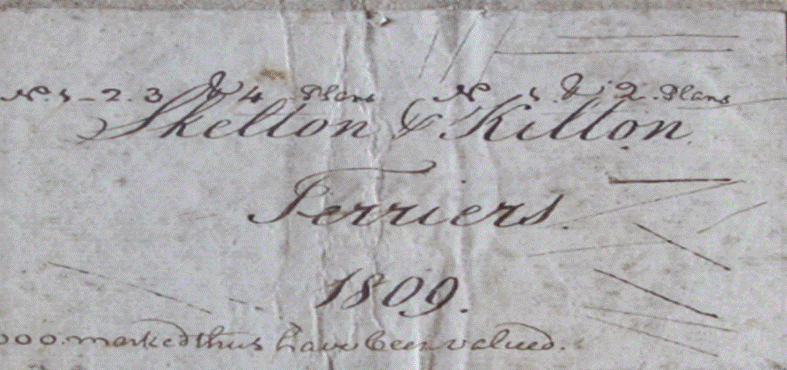
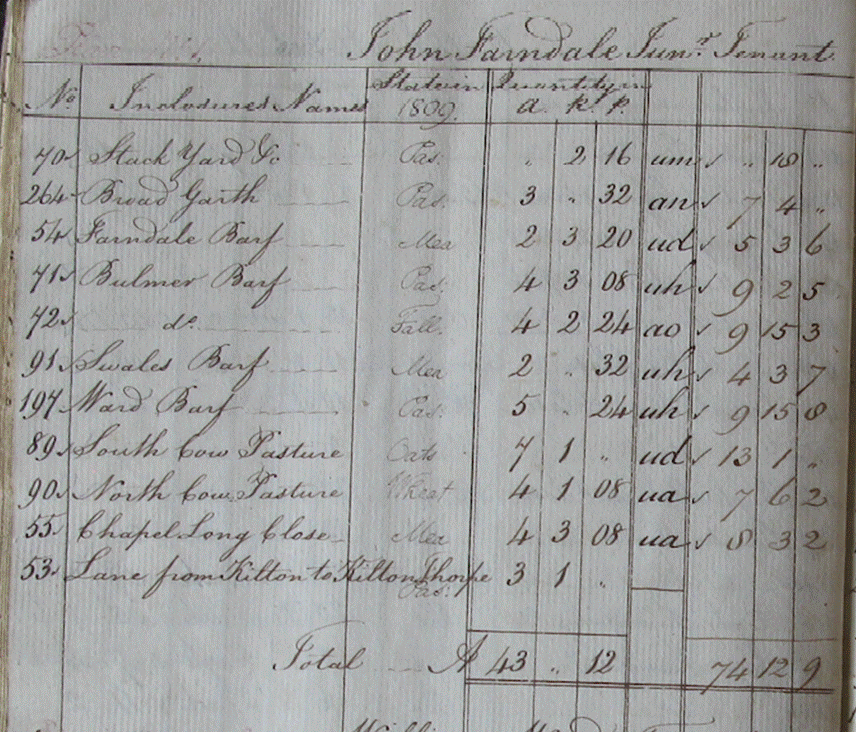
John Farndale, Tenant:
|
No |
Enclosure Name |
State in 1809 |
Quantity in a, r and p |
|
|
|
70 |
Stack Yard &c |
Pasture |
“, 2, 16 |
um |
“ 10 “ |
|
264 |
Broad Garth |
Pasture |
3, “, 32 |
an |
7 4 “ |
|
54 |
Farndale Barf |
Llea? Mea? |
2, 3, 20 |
ud |
5 3 6 |
|
71 |
Bulmer Barf |
Paddock |
4, 3, 08 |
uh |
9 2 5 |
|
72 |
do |
Fall |
4, 2, 24 |
ao |
9 15 3 |
|
95 |
Swales Barf |
Llea? Mea? |
2, “, 32 |
uh |
4 3 7 |
|
197 |
Ward Barf |
Pasture |
5, “, 24 |
uh |
9 15 8 |
|
89 |
South Cow Pasture |
Oats |
7, 1, “ |
ud |
13 1 “ |
|
90 |
North Cow Pasture |
Wheat |
4, 1, 08 |
ua |
7 6 2 |
|
55 |
Chapel Long Close |
Llea? Mea? |
4, 3, 08 |
ua |
8 3 2 |
|
53 |
Lane from Kilton to
Kilton Thorpe |
Pasture |
3, 1, “ |
- |
|
|
Total |
|
|
43, “, 12 |
|
74 12 9 |
John Farndale
died on 23 October 1825 aged 75 years.
3.7 William Farndale (FAR00183) (30 March 1760 to 5 March
1846). The Kilton 1 Line.
William Farndale was
baptised at Brotton
on 30 March 1760, the son of John & Grace Farndale (FAR00143) (BMD). He married Mary Ferguson at Brotton on 20
September 1789.
From the writings of John Farndale his
son wrote in ‘Kilton, this Ancient Hamlet of Old.; ‘…..
And now we come to our grandfather’s and father and mother, William and
Mary Farndale, and their seven children’s birth place; farmers and merchants of
wood, rods, coals, salting bacon; church people.
And those premises are held by our youngest brother, held from generation to
generation this two hundred years. Springing
from this roof may be said to be forty Farndales of this last generation…..’
William Farndale pulled
down the old Kilton Lodge, connected with the, by then, ruined Kilton Castle,
to build the new family home. From the writings of John Farndale, his son wrote in ‘Kilton, this Ancient Hamlet of Old.; ‘…..connected
with the castle is Kilton Lodge which my father pulled down to build a new
house.’….. The original
farmstead of Stank House was built of the stone of Kilton Castle. In the east
wall of the outbuildings is a large carved stone which would appear to have
once born a coat of arms, now completely obliterated.
In a Skelton
Estate Terrier dated 1804 William Farndale is
shown as a tenant of 110 acres. He was shown paying £125 rent.
The Skelton and Kilton Terrier in 1809 provided a
detailed record of William’s tenanted farm.


So William’s tenancy at
Kilton comprised:
William Farndale Tenant
|
No |
Enclosure Name |
State in 1809 |
Quantity in a, r and p |
|
|
|
180 |
Homestead &c 0.0.12 |
|
|
|
|
|
181 |
Homestead &c 0.0.16 |
|
|
|
|
|
182 |
Garth 1.1.30 |
Pad |
1, 2, 18 |
yn |
1 4 2 |
|
183 |
Harry Duck Stank |
Pad |
8, 3, 32 |
yh |
8 1 1 |
|
162 |
Stank Head |
Oats Beans |
3, 3, 08 |
uu |
6 5 4 |
|
163 |
Ward Fence |
Oats |
8, 2, 16 |
uu |
14 3 9 |
|
176 |
Carter Fence |
Wheat |
4, -, - |
uo |
6 8 “ |
|
175 |
Fence |
Llea? Mea?
|
6, -, 16 |
um |
9 3 “ |
|
190 |
High Pasture 8, 3, 16 |
|
|
|
|
|
189 |
Pond Close 1.3.30 |
Wheat |
10, 3, 06 |
uo |
17 5 2 |
|
188 |
Near Pasture |
Llea? Mea? |
4, 1, 12 |
uo |
6 10 4 |
|
187 |
House Stank |
Pasture |
4, 2, “ |
yt |
3 16 6 |
|
192 |
Stank Head |
Pasture |
3, 2, 08 |
oa |
4 5, 2 |
|
191 |
Stank Head Close |
Fall |
6, 1, 24 |
um |
9 12 “ |
|
219 |
Kilton Hill |
Wheat |
8, “, “ |
um |
12 “ “ |
|
93 |
Long Moor |
Pasture |
4, 2, 22 |
ou |
5 6 7 |
|
218 |
Ditto |
Fallow |
7, “, “ |
um |
10 10 “ |
|
216 |
Beck Close |
Llea? Mea? |
5, “, 12 |
un |
8 17 7 |
|
217 |
Square Close |
Tweat?? |
11, “, 16 |
oo |
16 1 10 |
|
215 |
Long Pasture |
Oats |
12, 2, 08 |
ua |
21 6 8 |
From the writings of John Farndale, in the Emigrant’s Return by John Farndale: I see
in the book recorded and registered in olden time, the names of farmers who
once occupied this great farm [at Kilton] – R and W Jolly, M Young, R
Mitchell; W Wood, J Harland, T Toas, J Readman, J Farndale (FAR00177), S Farndale (perhaps
Samuel Farndale, FAR00149),
J and W Farndale (Perhaps the brothers John Farndale FAR00167, and William Farndale),
all these tenants once occupied this great farm; now blended into one. I remember what a muster at the Kilton rent
days, twice a year, when dinner was provided for a quarter of a hundred tenants,
Brotton, Moorsholm, Stanghoe, those paid their rents
at Kilton; and were indeed belonging to the Kilton Court, kept here also, and the
old matron proudly provided a rich plum pudding and roast beef; and the steward
also a jolly punch bowl, for it was a pleasure to him to take the rents at Kilton,
the day before Skelton rent day.
William Farndale aged 86,
farmer, died of Infirmities of old age, on 5 March 1846.
3.8 Martin Farndale (FAR00236) (11 April 1798 to 22 June
1885). The Kilton 1 Line.
Martin Farndale
was born on 11 August 1798 and baptised at Brotton on 11 September 1798. Martin
Farndale married Elizabeth Hours at the Chapel, Brotton, on 18 May 1833. They
had no family.
From White’s History, Gazetteer and Directory for 1840 for
Yorkshire, East and West Ridings: KILTON, a
small neat village, 6 miles NE by E of Guisborough, … Directory: Jph Newbegin, vict; Thos Robson,
miller; and Matthew and Martin Farndale, George Jennings, George Moore, Thomas Raw & Joseph Thompson,
farmers. So by 1840, Martin and at that stage his
brother Matthew (who would later emigrated to Australia) was a predominant
farmer of Kilton.
The 1851 census
(signed on 1 April 1851) showed that Martin Farndale was farming at Kilton,
then aged 50, a farmer of 207 acres, with 8 employees.
As Martin and
Elizabeth had no family of their own, it would be Charles Farndale (FAR00341), son
of Martin’s brother John Farndale (FAR00217) who
would subsequently continue farming at Kilton and Charles would become Martin’s
partner on the farm in time.
The Census of
1861 showed that Martin Farndale was the family head; aged 60; a farmer of 210
acres with 8 employees.
The
York Herald’s Report of Petty Sessions on 6 November 1869 reported that Martin
Farndale had been summoned for permitting eleven heifers to stray on the
highway, in the township of Kilton, but he claimed to have a right of 28
years standing, the case was dismissed, the bench having no jurisdiction.
The census in 1871 showed Martin Farndale was still at
Kilton Hall Farm, Kilton, the head of the family; a
farmer; 600 acres 16 employees.
In Kelly’s Post Office Directory of 1872, we have
some picture of Kilton in that year: Kilton is a
township, 6 miles north east by east of Guisborough, and one south from
Brotton. Here was formerly a castle of which but few traces remain. Here are
church schools, recently erected and supported by John Thomas Wharton esq who
is lord of the manor and landowner. The population in 1861 was 93; in 1871,
222; acreage 1,723; gross estimated rental £1,731; rateable value £1,593.
Kilton
– commercial activity is listed to
include Farndale, Martin & Charles, farmers ;
Garbutt, John, miller, Kilton hill; Judson, William, farmer, Stank House;
Kilton Iron Stone Co; Porritt, John, farmer, Buckrush; and
Wood Thomas, farmer, Greenhow.
The
Local Government Act 1858 (21 & 22 Vict. c. 98) came into force in all
existing local board of health districts on 1 September 1858. The Act made some
changes to the procedure for constituting a local board and gave them some
additional powers. There was also a change in nomenclature: the authorities
created by the 1858 act were simply entitled "Local Boards" and their
areas as "Local Government Districts".
In 1872, Martin
Farndale was involved in setting up a new Urban Sanitary District for the
Guisborough Union area. The Daily Gazette for Middlesbrough,
16 October 1872 reported “GUISBOROUGH POOR LAW BOARD, At a meeting of
this Board, held on Tuesday, Mr S T Patch in the chair, Mr Arthur Buchanan
applied to the board for sanction to form a Local Board at Brotton. After
hearing the explanations of Mr Buchanan, Mr Blewett moved, and Mr Farndale
seconded, the following motion: that in the opinion of this Board, it is
desirable that the Township of Brotton should be formed into an Urban Sanitary
District. Carried unanimously. Orders were signed for the following sums to be
paid by two instalments on the 1st November 1872 and the 2nd January 1873 by
the several parishes in the Union: Broughton £280; Commondale £44; Danby £262;
Easington, £112; Eston £704; Guisborough £482; Hutton Lowcross £66; Kilton £70;
Kirtkleatham £502; Liverton £84; Lofthouse £236; Marske £536 pounds; Moorsholm
£74; Morton £52; Newton £12; Normanby £428; Ormesby £478; Pinchinthorpe £42;
Redcar £250; Skelton £278; Skinningrove £30; Stanghow £72; Tocketts £38;
Upleatham £102; Upsall £26; Westerdale £86; Wilton £412. Total £5,758.”
Contemporaneous with the global Long Depression, Britain's
agricultural depression was caused by the dramatic fall in grain prices that
followed the opening up of the American prairies to cultivation in the 1870s
and the advent of cheap transportation with the rise of steamships. British
agriculture did not recover from this depression until after the Second World
War. In 1882 Charles George Milnes Gaskell wrote that "the vast
increase in the carrying power of ships, the facilities of intercourse with
foreign countries, [and] the further cheapening of cereals and meat" meant
that economically and politically the old landed class were no longer lords of
the earth. The depression also accelerated Britain's rural
depopulation. The 1881 census showed a decline of 92,250 agricultural labourers
since 1871, with an increase of 53,496 urban labourers. Many of these had
previously been farm workers who migrated to the cities to find employment.
Between 1871 and 1901 the population of England and Wales increased by 43% but
the proportion of male agricultural labourers decreased by over one-third.
According to Sir James Caird in his evidence to the Royal Commission on the
Depression in Trade and Industry in 1886, the annual income of landlords,
tenants and labourers had fallen by £43M since 1876. No other country witnessed
such a social transformation and British policy contrasted with those adopted
on the Continent. Every wheat-growing country imposed tariffs in the wake of
the explosion of American prairie wheat except Britain and Belgium.
Subsequently, Britain became the most industrialised major country with the
smallest proportion of its resources devoted to agriculture.
From this point
we find extensive records of Martin Farndale being involved in criminal
proceedings against poachers, trespassers and damage causers on his land.
Since this was a time of depression, we might have some sympathy with those who
were acting out of desperation and remember Martin’s ancestors, who had been fined, outlawed and
excommunicated, around Pickering Forest, for poaching in the King’s forest.
On the other hand, we must recognise the difficulty for farmers in protecting
their livelihood. What we can conclude is that these were difficult time, as
from this point, we start to see large numbers of cases brought by Martin the
criminal courts to protect his livelihood.
· The
Daily Gazette for Middlesborough, on 5
November 1873
reported Police News, Guisborough Police
Court, Night poaching. John Julyan, keeper to Mr J T Wharton, of Skelton
Castle, charged John Taylor, with having about midnight of 3 November, captured a rabbit upon the farm occupied by
Martin Farndale, at Skelton.
· Summary
conviction of William Jones of Skinningrove miner for trespassing in
the daytime in search of game on land belonging to John Thomas Wharton
esquire and occupied by Martin Farndale Offence committed at the township
of Kilton on 11 May 1873 Case heard at Guisborough on 3 Jun 1873 (Yorkshire Archives, Document reference QSB 1873
3/10/7/164, Catalogued);
· Summary
conviction of Robert Johnson of Brotton miner for trespassing in the
daytime in search of game on land belonging to John Thomas Wharton esquire
and occupied by Martin Farndale Offence committed at the township of Kilton on
27 August 1873 Case heard at Guisborough on 9 September 1873 (Yorkshire Archives, Document reference, QSB 1874
1/10/7/43, Catalogued);
· Summary
conviction of William Green of Carlin How miner for trespassing in
the daytime in search of game on land belonging to John Thomas Wharton
esquire and occupied by Martin Farndale Offence committed at the township of
Kilton on 28 August 1873 Case heard at Guisborough on 9 September 1873 (Yorkshire Archives, Document reference QSB 1874
1/10/7/44, Catalogued);
· Summary
conviction of John Bowler of Carlin How miner for trespassing in the
daytime in search of game on land belonging to John Thomas Wharton esquire
and occupied by Martin Farndale Offence committed at the township of Kilton on
28 August 1873 Case heard at Guisborough on 9 September 1873 (Yorkshire Archives, Document reference QSB 1874
1/10/7/46, Catalogued);
· Summary
conviction of George Waite of Carlin How miner for trespassing in the
daytime in search of game on land belonging to John Thomas Wharton esquire
and occupied by Martin Farndale Offence committed at the township of Kilton on
27 August 1873 Case heard at Guisborough on 9 September 1873 (Yorkshire Archives, Document reference, QSB 1874
1/10/7/47, Catalogued);
· Summary
conviction of William Green of Carlin How miner for trespassing in
the daytime in search of game on land belonging to John Thomas Wharton
esquire and occupied by Martin Farndale Offence committed at the township of
Kilton on 27 September (sic, recte August?)
1873 Case heard at Guisborough on 9 September 1873 Yorkshire
Archives, (Document reference QSB 1874
1/10/7/51, Catalogued);
· The
Daily Gazette for Middlesbrough, on 10 September 1873 reported TRESSPASSERS.
William Green and George Bowles were summoned by John Julyan for trespassing in
pursuit of game upon land belonging to Mr J T Wharton, at Kilton on 27th
August. Fine 5s each and 8s 6d costs. William Green, George Waite, and Robert
Johnson, miners, of Carling Home, were also summoned by the same complainant
for a similar offence upon the farm of Mr Martin Farndale, at Kilton on 28th
August. To pay 14s 8d each.
· Summary
conviction of John Taylor of Brotton joiner for taking a rabbit in a
close of land occupied by Martin Farndale Offence committed at the parish
of Kilton at 12 o'clock at night on 3 November 1873 Case heard at Kilton on 4
November 1873 (Yorkshire Archives, Document reference
QSB 1874 1/10/7/118, Catalogued);
· The
York Herald, on 8 November 1873 reported Guisboro’, Police.
At the Langbaugh Police Court on Tuesday … John
Taylor, miner, was brought up charged with night poaching, on the
3rd November, upon the farm of Matin Farndale, of Kilton. John
Julyan, keeper of Mr J T Wharton, of Skelton Castle, heard a rustling in a
stubble field when on duty about midnight. A lurcher dog with defendant
killed a rabbit, which he picked up and put in his pocket. Julyan
followed him and the rabbit was immediately given up. Defendant, when
requested, went home with Julyan, and subsequently to the police station. The
offence was admitted, To be imprisoned for seven days with hard labour, and to
give them security, two in £5 and himself in £10, for keeping the peace. …
· Summary
conviction of Joseph Carter of Carlin How miner for trespassing in
the daytime in search or pursuit of game on land belonging to John Thomas
Wharton esquire and occupied by Martin Farndale Offence committed at the
township of Kilton on 10 December 1873 Case heard at Guisborough on 16 December 1873 (Yorkshire
Archives, Document reference QSB 1874
2/10/6/13, Catalogued);
· Summary
conviction of William Adams of Carlin How miner for trespassing in
the daytime in search or pursuit of game on land belonging to John Thomas
Wharton esquire and occupied by Martin Farndale Offence committed at the
township of Kilton on 10 December 1873 Case heard at Guisborough on 16 December
1873 (Yorkshire Archives, Document reference QSB
1874 2/10/6/22, Catalogued).
· Summary
conviction of Thomas Burgess of Carlin How for maliciously damaging
the fence of a field occupied by Martin Farndale Offence committed at the
township of Kilton on 14 February 1874 Case heard at Guisborough on 17 February
1874 (Yorkshire Archives, Document reference QSB
1874 3/10/5/18, Catalogued);
· The
York Herald, on 21 February 1874 reported: Guisborough
Thomas Burgess, of Carlinghow, was charged with wilfully
setting fire to the fence of a
field in the occupation of Martin Farndale, of Kilton,
farmer. Fined £1 8s including costs.
· Summary
conviction of William Jones of Skinningrove miner for trespassing in
the daytime in search or pursuit of game on land belonging to John Thomas Wharton
esquire and occupied by Martin Farndale Offence committed at the township of
Kilton on 13 May 1874 Case heard at Guisborough on 19 May 1874 (Yorkshire Archives, Document reference, QSB 1875
1/10/7/20, Catalogued)
· Summary
conviction of George Moore of Skinningrove miner for trespassing in
the daytime in search of game on land belonging to John Thomas Wharton
esquire and occupied by Mr Martin Farndale Offence committed at the township of
Kilton on 13 September 1874 Case heard at Guisborough on 15 September (Yorkshire Archives, Document reference QSB 1875
1/10/7/135, Catalogued);
· Summary
conviction of William Clarke of Skinningrove miner for trespassing in
the daytime in search of game on land belonging to John Thomas Wharton
esquire and occupied by Mr Martin Farndale Offence committed at the township of
Kilton on 13 September 1874 Case heard at Guisborough on 15 September 1874 (Yorkshire Archives, Document reference QSB 1875
1/10/7/136, Catalogued);
· Summary
conviction of Thomas Stanway of Boosbeck miner for stealing apples
from the orchard belonging to Mr Martin Farndale Offence committed at the
township of Kilton on 29 September 1874 Case heard at Guisborough on 29
September 1874 (Yorkshire Archives, Document
reference QSB 1875 1/10/7/153, Catalogued);
· The
York Herald, on 3 October 1874 reported GUISBORO PETTY SESSIONS – Thomas Stanway, of
Boosbeck, miner, for stealing a quantity of apples at Kilton, belonging to Mr
Martin Farndale, was fined £2 9s 6d including costs.
· Summary
conviction of William Clarke and George Moore, both of Skinningrove miners,
for trespassing in the daytime in search of game on land belonging to
John Thomas Wharton esquire and occupied by Martin Farndale Offence committed
at the township of Kilton on 4 May 1875 Case heard at Loftus on 13 May 1875 (Yorkshire Archives, Document reference QSB 1875
3/10/6/130, Catalogued);
· Summary
conviction of Elizabeth Holt of Kilton married woman for maliciously
damaging with intent to steal a quantity of peas and beans growing in a field,
the property of Martin Farndale of Kilton farmer Offence committed at the
township of Kilton on 31 August 1875 Case heard at Loftus on 9 September 1875 (Yorkshire Archives, Document reference, QSB 1876
1/10/7/38, Catalogued).
· Summary
conviction of Robert Foster and Anthony Ward, both of Kilton joiners,
and William Silvester and Richard Annear, both of Brotton miners, for trespassing
on the daytime in search of game on land belonging to John Thomas Wharton
esquire and occupied by Martin Farndale Offence committed at the township of
Kilton on 4 September 1876 Case heard at Loftus on 14 September 1876 (Yorkshire Archives, Document reference, QSB 1877
1/10/7/42, Catalogued).
· The Daily Gazette for Middlesbrough, on 28 April 1876
reported Loftus Petty Sessions. Tuesday, before the reverent. GJ Morehead. Game
trespass near Kilvington. Six men, named Humphrey Keane, William Keilan,
William Mogerage., John Dad, George Dad, and Charles
Spear where charged with trespassing in pursuit of game on the land in
the occupation of Mr J T Walker (sic, recte
Wharton). Mr Collier defended the men. PC Calvert stated that on Sunday evening
between five and six o’clock, while on duty near Kilvington, he saw the
defendants on the road, and they had five dogs with them. When close to a field
in the occupation of Mr Farndale, they sent three of the dogs into it after a
hare, which they chased and returned without having caught. He also saw two
dogs in an adjoining field. The defendants were fined 19 shillings and costs
each.
· There was a
summary conviction of John Speck, Charles Speck and George Arnold all of
Brotton for maliciously damaging beans growing in a field occupied
by Martin and Charles Farndale Offence committed at the township of Kilton on
21 August 1881 Case heard at Loftus on 26 August 1881 (Yorkshire
Archives Document reference QSB 1882 1/10/7/13, Catalogued) The Evening
Gazette, on Saturday 27 Aug 1881 reported: Damaging beans and oats. Three
Brotton youths, named John and Charles Spark and G Arnold were charged at
Loftus Petty Sessions on Friday by Mr Farndale of Kilton with damaging beans
and oats in his field on the 21st inst. The complaint stated that considerable
damage had been done to his crops, and although he did not wish the lads to be
severely punished, he wanted to put a stop to it. The damage was estimated
at 1s each. Ordered to pay costs of 6s 2d each, and the damage, 1s each.
There was a ploughing and hedge-cutting competition on Martin
Farndale’s land at Kilton in 1873. The Whitby
Gazette, on 18 January 1873 reported:
“Lofthouse district ploughing and hedge cutting matches.
The district includes Lofthouse, Liberton, Easington, Skinningrove, Kilton, Broughton,
Skelton, Moorshol, Garrick and Stanghow.
The above matches will take place upon Mr
Farndale's Kilton Hall Farm, on Thursday, January 23rd 1873 and will be
competed for in two open and two district classes.
Prizes. Class 1 - open to all with either
wheel or swing ploughs. First price £3 1s, second prize £2 pounds, third £1 -
entrance 3s 6d each.
Class 2 - open to the district only: first
prize £2 1s, second £1 10s, 3rd 1s. Entrance 2s 6d each.
Class 3 - open to youths in the district under
18 years of age - first prize, £2, second prize, £1, third prize, 1s. Entrance
2s each.
Class 4 – Hedge-cutting, open to all: First
prize £1 pound, 2nd 1s. Entrance 1s each. Each competitor to cut and lay from
the ground 14 yards of hedge, two feet high and finished with a turn sod.
Rules. The land to be ploughed not less than
four inches deep and the choice of place to be drawn by lots. The competitors
to be on the ground at half past eight, to commence at nine and to finish at
Two o’clock. Each competitor to plough half an acre. Any man above 20 years of
age who has previously won a prize of £2 1s, debarred from the district class,
but can compete in the open class. Anyone making a false entry will not be
entitled to a prize. Should the weather prove unfavourable on the day fixed, the
ploughing will take place on the first Thursday after the 23rd of January. All
entries to be made on or before the 20th of January 1873 to Mr. Johnson,
Rosecroft, Lofthouse, or to the Secretary. Dinner will be provided for the
committee and friends at Mr Cowell's Crown Hotel, Brotton. Thomas Etty,
Honourable Secretary, Little Moorsholm, Guisborough.”
In August 1877
Martin’s services were recognised as a Guardian of 38 years since the inception
of the Guisborough Board of Guardians: The Yorkshire
Gazette, on 27 October 1877 reported PRESENTATION
TO TWO GUARDIANS - The proceedings of the ordinary meeting of the
Guisborough Board of Guardians of Monday afternoon, word diversified by one
of the most interesting ceremonies which has ever taken place in connection
with the Union. Mr Thomas Petch, of Liberton and Mr.
Martin Farndale, of Kilton., who, with the exception of a slight interval,
had been members of the Board since its formation 38 years ago, were
each made the recipient of an illuminated address and a piece of plate, the
gift of their brother guardians, and both the addresses, which Mrs J W Pease,
of Hutton Hall, had generally undertaken to have executed in London at her own
costs, were beautifully mounted and finished. Admiral Chaloner made the
presentation.
By 1878, Martin
was clearly acting more in partnership with his nephew Charles Farndale (FAR00341).
Martin Farndale suffered an outbreak of pleuro pneumionia on his farm in
October 1878. The Northern
Echo, on 25 October 1878 reported Case of pleuro-pneumonia near Loftus.
At Loftus Petty Sessions yesterday, Inspector Alan reported a case of
pleuropneumonia which had occurred on the previous day, in a herd of animals
belonging to Mr Farndale, a farmer of Kilton. The infected animal was bought at
a fair in Westmoreland on Monday, and on reaching Kilton it showed symptoms of
disease and Mr Kilburn, a veterinary surgeon at Brotton, was called in. Another
veterinary surgeon, Mr Barker, of Middlesbrough, also visited the animal and in
consequence of the latter's report, the inspector applied for an order to have
the animal destroyed. Superintendent Clarkson said that according to the
provisions of the new Act, which had come into force, the animal had to be
destroyed within 24 hours of the disease becoming known. An order for the
slaughter of the animal was then granted. In answer to a question,
Superintendent Clarkson said there were certain provisions in the new Act
respecting the removal of animals in an infected district and compensation to
owners of infected animals which were ordered to be destroyed, but these had to
be considered by a meeting of local magistrates to be held at Guisborough on
Tuesday next. The Daily Gazette for Middlesborough, on 30 October 1878
reported Pleuro-pneumonia in Cleveland. At the Gainsborough petty sessions
on Tuesday ... a report was read from Inspector Allen, of Loftus, and also from
William Barker, veterinary surgeon, under the Contagious Diseases (Animals)
Act, stating that pleuro-pneumonia had broken out on the farm of Mr Martin
Farndale, at Kilton, and one kyloe beast had been
destroyed … Mr Farndale bought 35 beasts at Carlisle Fair, and observing one of
them was wrong put it into a shed situate in a field belonging to Mr Proud,
which adjoined his farm. After discussion it
was resolved to put Mr Martin Farndale’s farm and Mr Proud where the beast was
slaughtered into quarantine as an infected district for the 56 days
required by the Act. The Newcastle Courant, on
1 November 1878 reported: Cattle disease - At Guisborough petty
sessions on Tuesday, it was reported to the magistrate that pleuro-pneumonia had broken out on the farm
of Mr Martin Farndale, at Brotton-in-Cleveland. One cow had been killed and
buried. The bench ordered the farm to be quarantined as an infected district.
In the Leeds Mercury on 1 November 1878: “Pleuro-pneumonia
in Cleveland. Pleuro-pneumonia has broken out on the farm of Mr Martin
Farndale, at Brotton-in-Cleveland. One cow has been killed and buried. The farm
has been officially declared to be an infected district.” In the Leicester Advertiser, 9 November 1878: Pleuro-pneumonia
appears to be on the increase in the country. On Tuesday week it was reported
to the magistrates at Gainsborough that plural pneumonia had broken out on the
farm of Mr. Martin Farndale at Brotton in Cleveland. One cow had been killed
and buried. The bench ordered the farm to be quarantined as an infected
district, we are informed and in this way may be seen the value of the Act that
most recently came into operation. By this means prompt action may be taken for
isolating any case, to prevent it spreading, whilst on the other hand the owner
is bound to give information of any outbreak. It will thus be seen that the measure
is protective because no one can tell whose stock may be infected next.
Pleuro-pneumonia is a lung disease of cattle and
sheep. It causes an inflammation of the lungs. The disease is caused by the
bacterium mycoplasma mycoides. Fever, thirst, loss of appetite, and
difficult breathing are signs of the disease.
The
Contagious Diseases (Animals) Act 1878 (41 & 42 Vict. c. 74) was an Act of
the Parliament of the United Kingdom passed by Benjamin Disraeli's Conservative
government. A select committee was appointed in 1877 to investigate animal
diseases. The resulting Act established central rather than local control over
all outbreaks of animal disease. The agriculturist Jacob Wilson considered the
Act "an undoubted benefit conferred upon the agricultural interest by the
Conservative Government". It was opposed by the Radicals.
In Kelly’s Post Office Directory 1879, Martin and
Charles Farndale were shown as farmers in the commercial section.
Kilton – commercial:
Farndale, Martin & Charles, farmers
Garbutt, John,
miller, Kilton hill
Judson, William,
farmer, Stank House
Kilton Iron Stone
Co
Porritt, John,
farmer, Buckrush
Wood Thomas,
farmer, Greenhow
The
Northern Weekly Gazette, 12 July 1879 reported Primitive Methodist Picnic,
Skinningrove. The above society held their annual picnic on Saturday in a
field belonging to end to Mr Farndale at Kilton. The weather was fine and
there was a good number present. The usual games were indulged in, and all
seemed to thoroughly enjoy themselves.
In the census of 1881, Martin Farndale, still the head; a
widower; aged 82; was listed as retired farmer at Kilton Hall Farm, Kilton and Charles
Farndale, married; aged 42; was a farmer of 577 acres, with 9 employees now
living together with Charles’ family.
Martin Farndale a
farmer of Kilton, died of chronic bronchitis and senile debility, aged 86, on
22 Jun 1885. Charles Farndale, his nephew was present at the death at Kilton.
Martin Farndale was buried in Brotton aged 86, on 25 June 1885.
3.9 John Farndale (FAR00217) who wrote extensively
about Kilton. The Kilton 1 Line.
John Farndale was born at Kilton on 15 August 1791, the second son of William
and Mary Farndale (née Ferguson), farmers and business people. On his 84th
birthday (1874) he wrote his memoirs. He
stated that he was in good health. He died in 1879 aged 88. The following notes
are taken from his memoirs which were written in very descriptive Victorian
English.
He first described Kilton as "of great interest with a
great hall, stable, plantation and ancient stronghold in ruins (Kilton Castle)".
"It is still a small place" he says and he describes how many
have left it and made their name.
"My first remembrance began in my nurse's
arms when I could not have been more than 1 1/2 years old; a memory as vivid as
if it were yesterday. She took me out on St Stephen's Day 1973 into the current
Garth (a small enclosure) with a stick and 'solt' to
kill a hare. A great day at the time. Another time
(after celebrating the victory of Trafalgar, 1805) he was dangling head
foremost down the draw well hanging by the buckle of his shoe. He goes on to
describe a very happy childhood and he clearly adored his mother. "At this
time I believe I loved God and was happy."
He remembered "an old relation of my
father" (there were several in Kilton at that time) remarking that his
elder brother George was a "prodigal son", while John was the
son at home with his father. But he described how he got up to many frolics and
had some narrow escapes, although he was no drunkard or swearer.
His parents, he said, "were strict Church
people and kept a strict look out. I became leader of the (Brotton) church
signers, clever in music" and he excelled his friends. He had a close
friend, a musician in the church choir. One day he met him and said he had been
very ill and had been reading a lot of books including "Aeleyn's Alarum" and others "which nearly made
my hair stand on end." . His friend told him that he was going to
alter his way of life and if John would not refrain from his revelries, he would
"be obliged to forsake your company.". "That was a
nail in a sure place. I was ashamed and grieved as I thought myself more pious
than he. Now I began to enter a new life as suddenly at St Paul's but with this
difference, he was in distress for three days and nights but for me it was
three months". He fasted all Lent and describes his torment. "How
often I went onto the hill with my Clarinet to play my favourite tune."
His companion lived one mile away (at Brotton
perhaps?) and they met half way every Sunday morning at 6am for prayer. He
remembered well meeting in a corner of a large grass field. George (Sayer)
began and he followed. When they finished they opened their eyes to see "a
rough farm lad standing over us, no doubt a little
nervous. Next day this boy said to others in the harvest field 'George Sayer
and John Farndale are two good lads for I found them in a field praying.'
" On the following Sunday they moved to a small wood and met under an oak
tree and met an old man who wanted to join them. As usual George began and John
continued when the old man began to roar in great distress
In A Guide to Saltburn by the Sea and the Surrounding
District, With remarks on its picturesque scenery, Fifth Edition, Dedicated to
John Thomas Wharton Esq of Skelton, By John Farndale.
Late of Skelton Castle Farm, Darlington, Printed by Charles W Hird, 1864,
John Farndale wrote:
When only four or five years of age I remember
my father’s father
telling what was done in those days and the old time before them. Many things
then told were deemed most important to those of us who then lived together in
a state of primitive simplicity, far removed from the occurrences which now
surround us. I can refer back to what might have ended in death, but which by
over-ruling Providence was otherwise ordered. It was ordained that even to me
was given an errand to fulfil, which I am at this time feebly endeavouring to
discharge:- namely, to do good in my day and generation.
I remember a draw well stood near the house of
my father’s
foreman. One day I was looking into this well at the bucket landing, when I
fell head foremost. The foreman perceiving the accident, immediately ran to the
well to witness, as he thought, the awful spectacle of my last end. I had on at
the time a pair of breeches, with brass buckles on my shoes (silver ones were
worn by my
father and others), and to his great astonishment, he found me not immersed
in water at the bottom of the well, but dangling head foremost from the top of
a single brass buckle, which had somehow caught hold.
Since this accident I have ever been thankful
for my wonderful deliverance, I am now an old man, yet I hope my humble
production will by many be found worthy of perusal. I only profess to commit to
paper a few thoughts as they spring up in my mind, but what I relate may
probably reduce the reader to seek other works for further information; my only
wish at present being to draw public attention to this most interesting
district in Cleveland, which has hitherto been little known, comparing modern
with things in times of old.
He became a
Yeoman Farmer but moved to Skelton, Coatham, and Stockton and later became a
corn and insurance agent, a merchant and an author. He was bankrupted in 1851.
His association with Kilton was during his childhood, and through his
authorship which revealed a nostalgic recollection of his childhood home. He
returned to Kilton to die, and his son Charles Farndale was with him.
3.10 Charles Farndale (FAR00341) (17 January 1838 to 18
March 1914). The Kilton 1 Line.
Charles Farndale
was born on 17 January 1838. He married Ann Dale of Danby, on 16 April 1872 at
the Wesleyan chapel in Danby. By 1878, Charles was clearly acting more in
partnership with his uncle Martin Farndale.
The local landowner, J T Wharton, allowed a 50%
land rental for the half year because of the Agricultural depression, which
received the thanks of the fraternity of tenant farmers. The Daily Gazette for Middlesbrough, 13 January 1885 reported: PRESENTATION TO J T WHARTON Esq OF
SKELTONB CASTLE. On Monday afternoon, the half yearly rent audit of the Skelton
Estate was held at the Wharton Arms Hotel. Mr E B Hamilton (steward) presiding,
and Mr Robert Stephenson, Vice Chairman. After a splendid dinner, provided and
served up by Mr and Mrs Morgan in first class style, the Chairman submitted
“the Queen and Royal Family”, which was loyally honoured. The Chairman then
proposed the health of Squire Wharton who returned thanks in an appropriate
manner. Mr C Farndale referred to an event which had taken place among
them, as the farmers had received 50% reduction upon the rent of their
arable land for the past half year. This was stated to have been brought
about by the Squire's compensation for the depreciation of prices as
compared to any previous years since he had become possessed of the
property. (Applause). Mr Thomas Petch, on behalf of the tenants, then presented
a beautifully illuminated address in a gold frame, which read as follows – “To
J T Wharton Esq, Skelton Castle. We the undersigned tenants of your Skelton
estate most respectfully beg your acceptance of this address as a token of our
respect and appreciation of the manner in which you have met us at the present,
as also on a former occasion, under the great agricultural depression, by
returning to us 50% of the rent of the arable land as the half yearly rent
audit held January 12th, 1885 and we earnestly hope you will long be spared in
health and strength amongst us. Martin Farndale, Kilton Hall and Charles
Farndale, Kilton Hall; Matthew Young, Claphow,
William. Judson, Stank House, John Smith, Moorsholm Grange, William. Raw, Red
Hall, Henry Robinson, Ralph Linus, Cambank, Thomas
Petch, Barns Farm, Henry, Atkinson, West Throttle., Robert Stephenson, Trout Hall...
Charles Farndale
continued a long tradition of involvement with the local Wesleyan Church.
The
Methodism in Cleveland, The Methodist Recorder 17 April 1902
described local methodism and the prominent role of Charles Farndale‘s family:
But
the Kilton of Wesley's time was a very different place to the deserted village
of today. It could then boast of crowded streets and many shops. It was
evidently a place “Where health and plenty cheered the labouring swain” and
where oft times “All the village train, from labour free, led up their sports
beneath the spreading tree”. But alas.as in the case of sweet Auburn “All these
charms are fled and desolation saddens all thy green”.
Wesleyan
services were held in a cottage until through certain changes, whole streets
were left empty, and have sent since being demolished.
For very many years
services have been held in the spacious farm kitchen of Mr C Farndale, Kilton
lodge, which was also that of his father before him.
Methodism in the neighbourhood and the cause of righteousness generally owes
much to the high Christian character and active interest in all good works
displayed by this devoted Methodist family. Here the preachers have always
found a hearty welcome and ministers and others who know the circuit spent
under this hospitable roof.
… The
town of Loftus is pleasantly situated, within a few minutes
walk the seashore, and yet is well protected from the severe blasts
which frequently sweep from the sea. It is an important agricultural and mining
centre, 4 miles from Saltburn, and 13 from Whitby. In the immediate
neighbourhood or within easy distance of Loftus will be found some of the
prettiest scenery in Yorkshire, the town hall with its lighted clock, the
ancient parish church … services were held for many years in cottages, but the
work of God extending A commodious Chapel was built. In 1871 the Loftus circuit
was formed by separation from Guisborough, and the first minister appointed was
the reference EP Lowry, who has rendered such splendid service as our devoted
army chaplain amongst the troops in South Africa. In 1876 the cause at Loftus
had so prospered that the present spacious and beautiful sanctuary was erected
and received the name of the Newton memorial Chapel in memory of Doctor Robert
Newton who was born in the village of Roxby about two 1/2 miles from Loftus as
the crow flies. The farmhouse in which he was born still exists though has
suffered many altars.
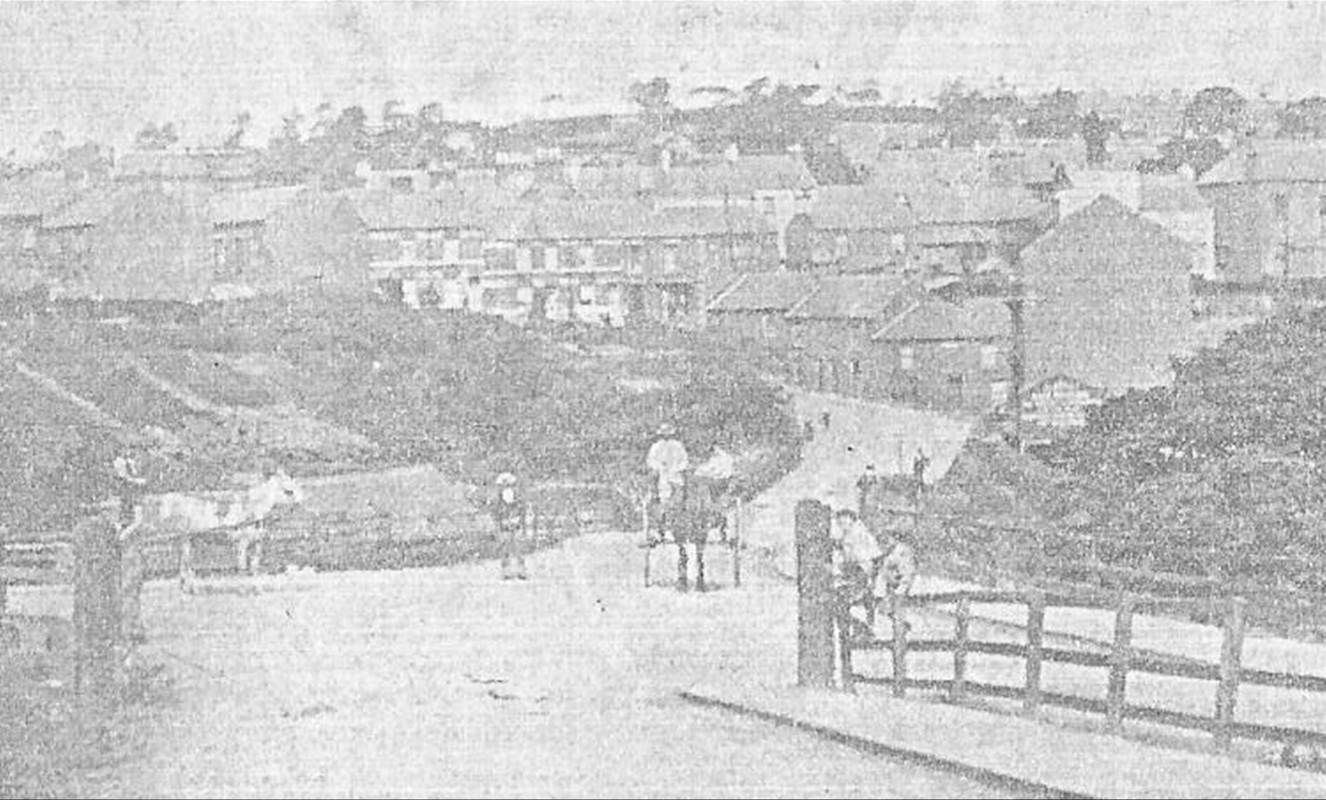
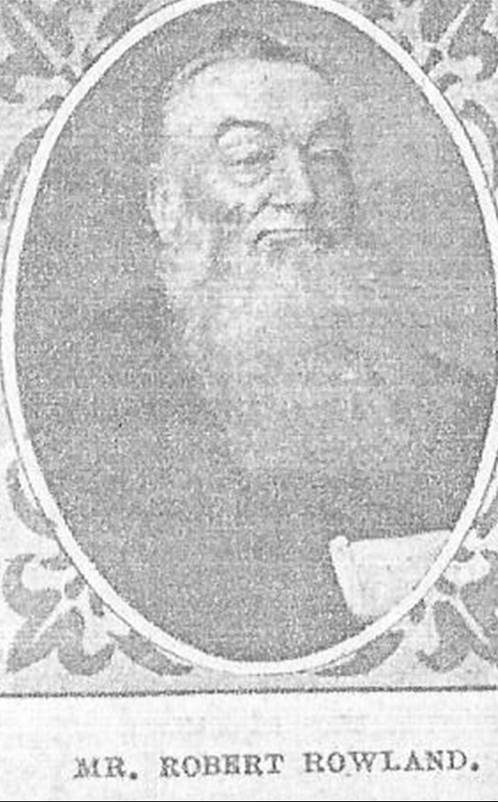
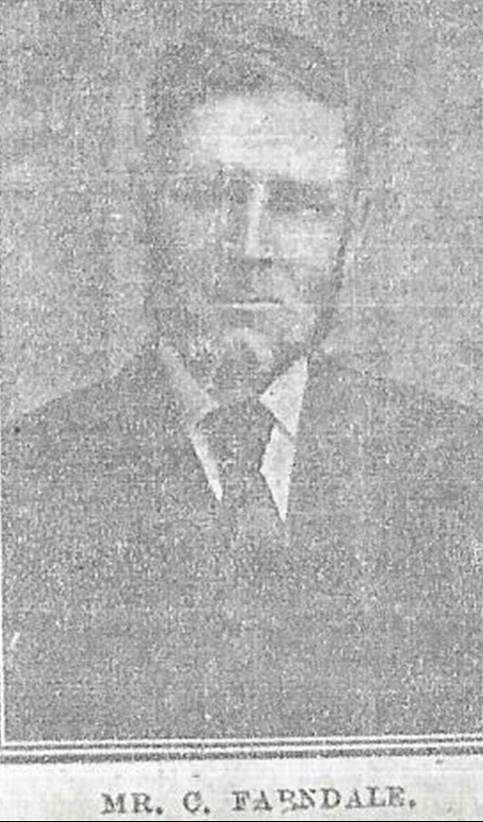
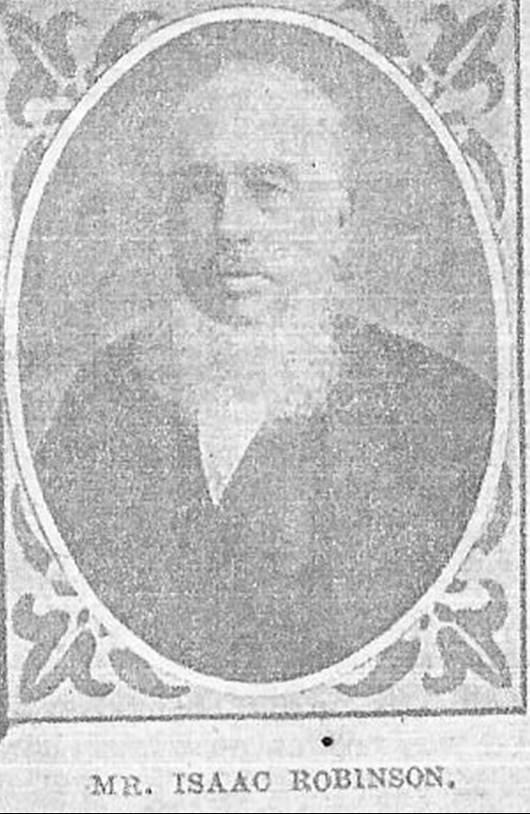
“For very many years services have been held in the spacious farm kitchen
of Mr C Farndale, Kilton Lodge, which was also that of his father before
him.
Methodism
in the neighbourhood, and the cause of righteousness generally, owes much to
the high Christian character and active interest in all good works displayed by
this devoted Methodist family.”
The
Whitby Gazette, on 3 July 1886 reported SKINNINGROVE. Pic-nic.
The Wesleyans of this place held their annual pic-nic
on Saturday, at Kilton, in a field kindly lent for the occasion by Mr C
Farndale. Various games were indulged in to a late hour, and everyone
seemed thoroughly satisfied. The Whitby Gazette, on 10 July
1886 reported: ANNIVERSARY.The anniversary
of the Wesleyan Sunday school was held on Sunday. In the morning a sermon was
preached by Mr F Windsor of Eston and in the afternoon a service of song
entitled “The River Singers” was given by the teachers, scholars and choir, Mr
J W Mayhew ably presiding at the harmonium. Mr Winsor read the connective
readings. The service was very well rendered. In the evening the children
recited pieces and dialogues, the choir assisting them to sing the hymns. The
pieces seemed to be recited with much more expression than in former years. The
Chapel was crowded to its utmost capacity. The children paraded the streets on
Monday afternoon, and at night a public meeting was held, presided over by Mr C
Plews. The children were again to the fore with their pieces. The number of
scholars at present is 179, an increase of 15 on last year. Average attendance,
morning 102, afternoon, 129. The teachers numbered 27, being an increase of 2.
On Wednesday the children held their annual picnic at Kilton, in a field
kindly lent by Mr C Farndale. A public tea was provided about 100 partaking
thereof. Mesdames Rigg, Waters, Bolton, and Misses Richardson, Rigg and Astley
presided at the tables. The total receipts were £9 10s.
There
was a significant sale of horses, stock and farm tools at Charles Farndale’s
farm in April 1887. Perhaps this was due to the agricultural depression, or
perhaps it was just part of he general management
scheme. The North Star (Darlington), on 4 April 1887
advertised the following:
Kilton
Hall, under a mile from Carlin How and Brotton Stations.
Mr
William Temple is favoured with instructions from Mr Charles Farndale to sell
by auction on Thursday, April 7th, the farming stock, implements etc viz:
FAT
CATTLE - 12 prime Far Bullocks, 8 prime Fat Heifers, 2 prime Fat Cows.
HORSES
- Useful Brown Draught Horse, Duke, 5 years old; Valuable Cleveland Mare,
Trimmer, 9 years old; Useful Bay Horse, Ben, 10 years old; Useful Grey Draught
Horse, Topper, 10 years old; Powerful Bay Draught Horse, Gilbert, 6 years old;
Powerful Bay Draught Mare, Mettle, 7 years old; Powerful Brown Draught Horse,
Delver, 10 years old; Promising Brown Draught Filly, 3 years old, unbroken, by
Chiswick; Handsome Chestnut Pony, 10 years old, gentle to ride and drive;
Strong black karting filly, rising 3 years old, by His Lordship; Strong
Yearling Colt by Topsman.
SHEEP
- 38 Half bred Hoggs.
A
quantity of IMPLEMENTS. Sale to begin at one o’clock.
Liverton,
Loftus in Cleveland, March 21st 1887. 1427
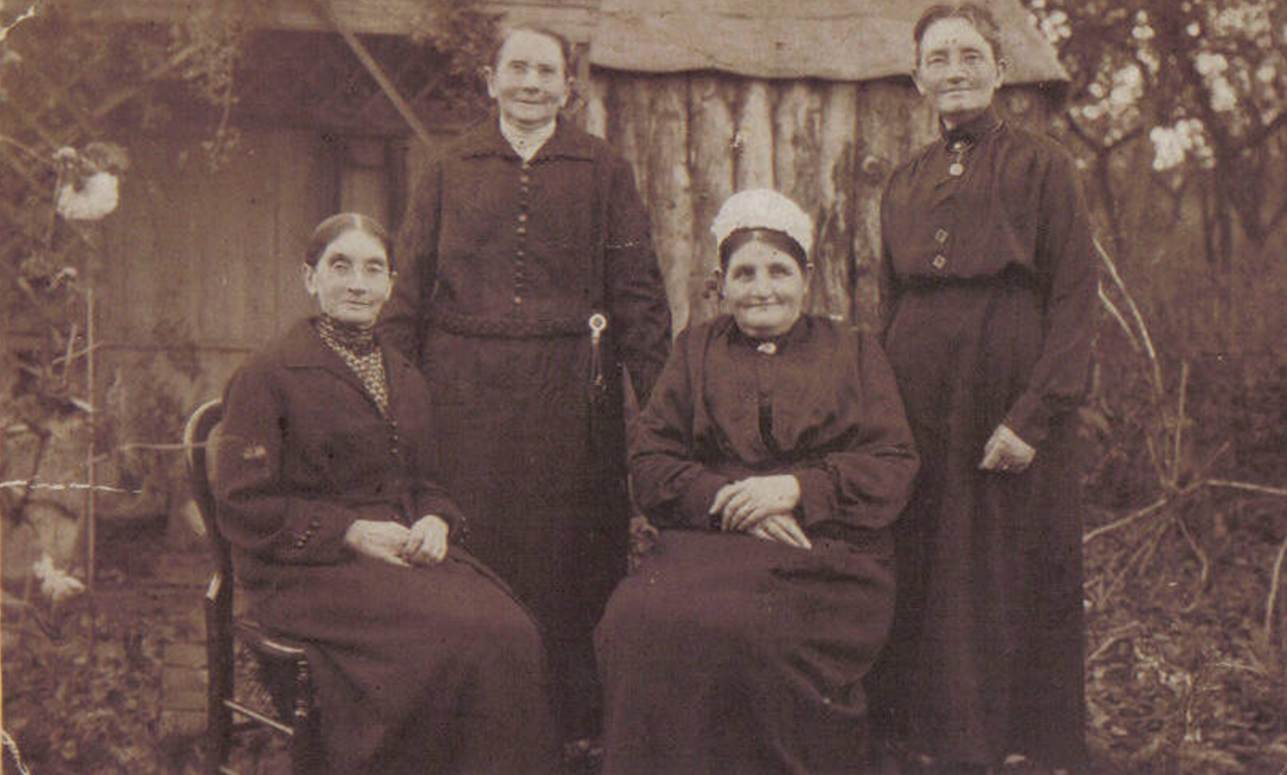
Four
sisters perhaps at time of Charles' family at Kilton Lodge about 1890
Charles
Farndale advertised for a ploughboy in the Daily Gazette for Middlesbrough,
on 27 November 1899: Ploughboy (strong) Wanted, about 17, to go with
horses. Apply Charles Farndale, Kilton Lodge, Brotton.
The
1901 Census recorded Charles Farndale, head; farmer; aged 63 now living at
Stank House, Kilton estate.
Charles was
working in partnership with his son, George by 1911. The 1911 Census recorded that Charles Farndale, 73,
farmer, still lived at Stank House, Brotton with Ann Farndale, 63 ; George
Farndale, farmer’s son and partner, 34; Mary E Farndale, 33, farmer’s daughter,
dairywork; Grace Farndale, farmer’s daughter, dairywork; Albert Farndale, architect and two others
working on farm.
Charles Farndale,
of Kilton Lodge died age 76 and was buried at Brotton on 21 March 1914.
3.11 George Farndale (FAR00540) (24 August 1876 to 14
February 1970. The last Farndale of Kilton. The Kilton 1 Line.
George Farndale
was born at Kilton on 24 August 1876.
Vincent Grainger worked with the Farndales at Kilton in the early 1900s. In
about 1985 he made a sound recording about Charles Farndale and his family and
Kilton at that time.
Your browser does not support the audio tag.
It is worth bearing with the recording as there is some description of Kilton
at the time, and the Farndales in the 1900s, as the recording goes on.

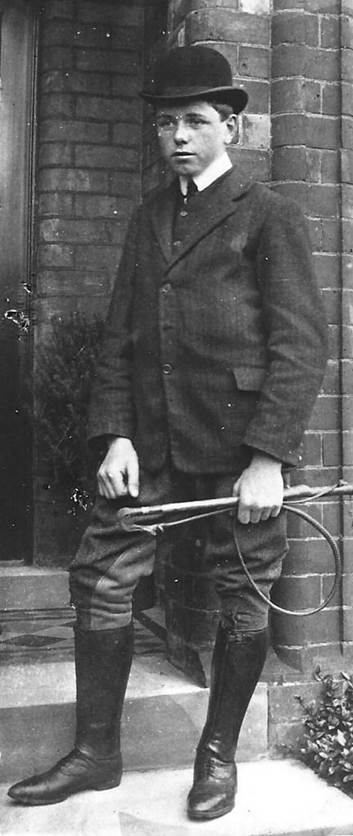
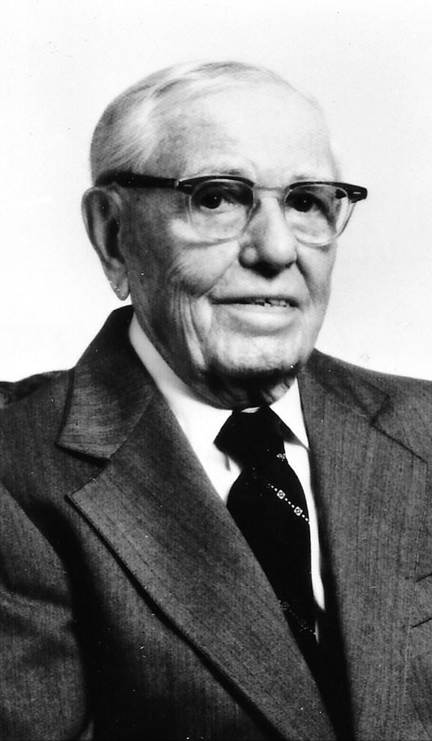
Vincent Grainger
aged 16
Vincent Grainger August 1985 (aged 93)
Vincent Grainger
worked on the farm at Kilton Lodge as a member of the family
George was
involved with the Cleveland Hunt. He didn’t marry. He continued to farm at
Kilton.
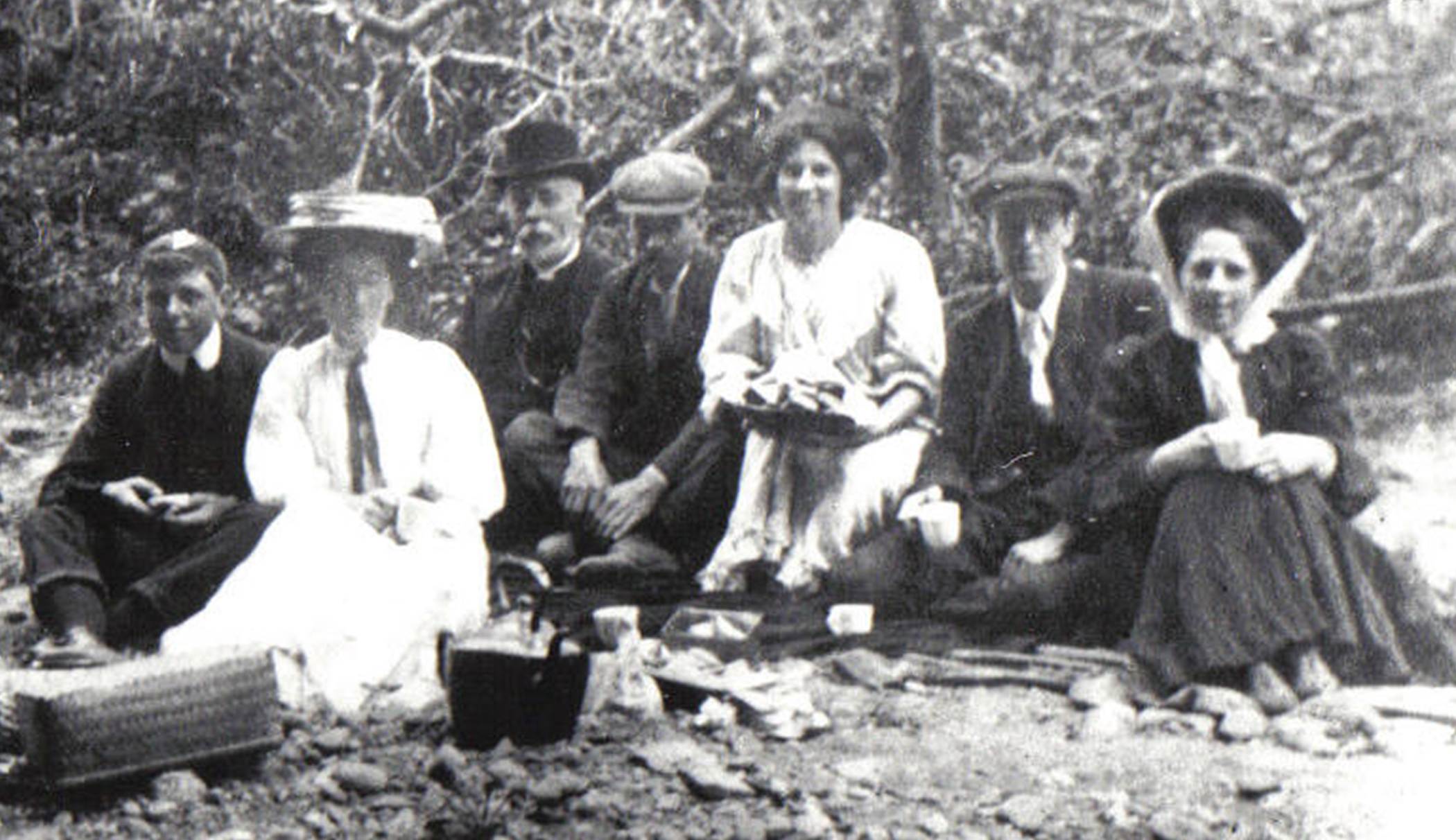
Picnic at Kilton
Lodge about 1908. Vincent Grainger, Ann
and Charles Farndale, George Farndale, Grace Farndale, ? and Mary or Sophie
Farndale
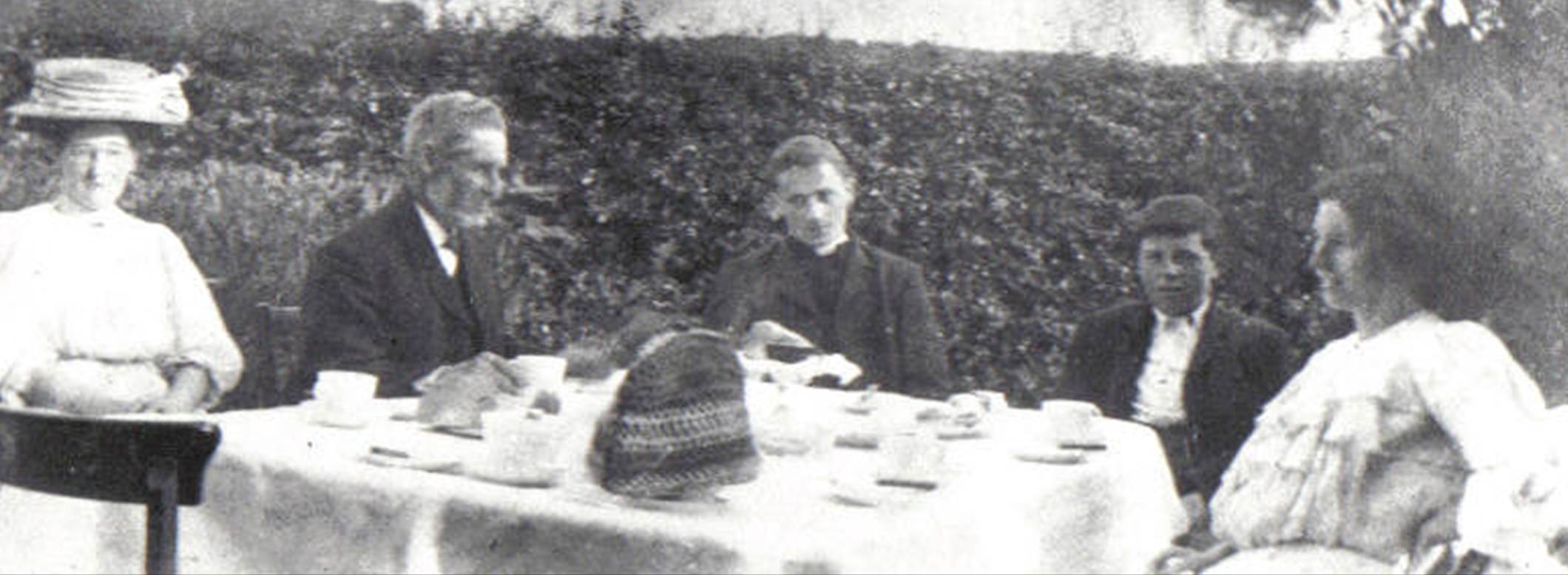
Kilton Tea Party
about 1910
Mrs Ann Farndale,
Charles Farndale, visiting vicar (The Rev W Slader, O Wardley or W Nicholson
perhaps?), Vincent Grainger (who worked on the farm) and Grace Farndale
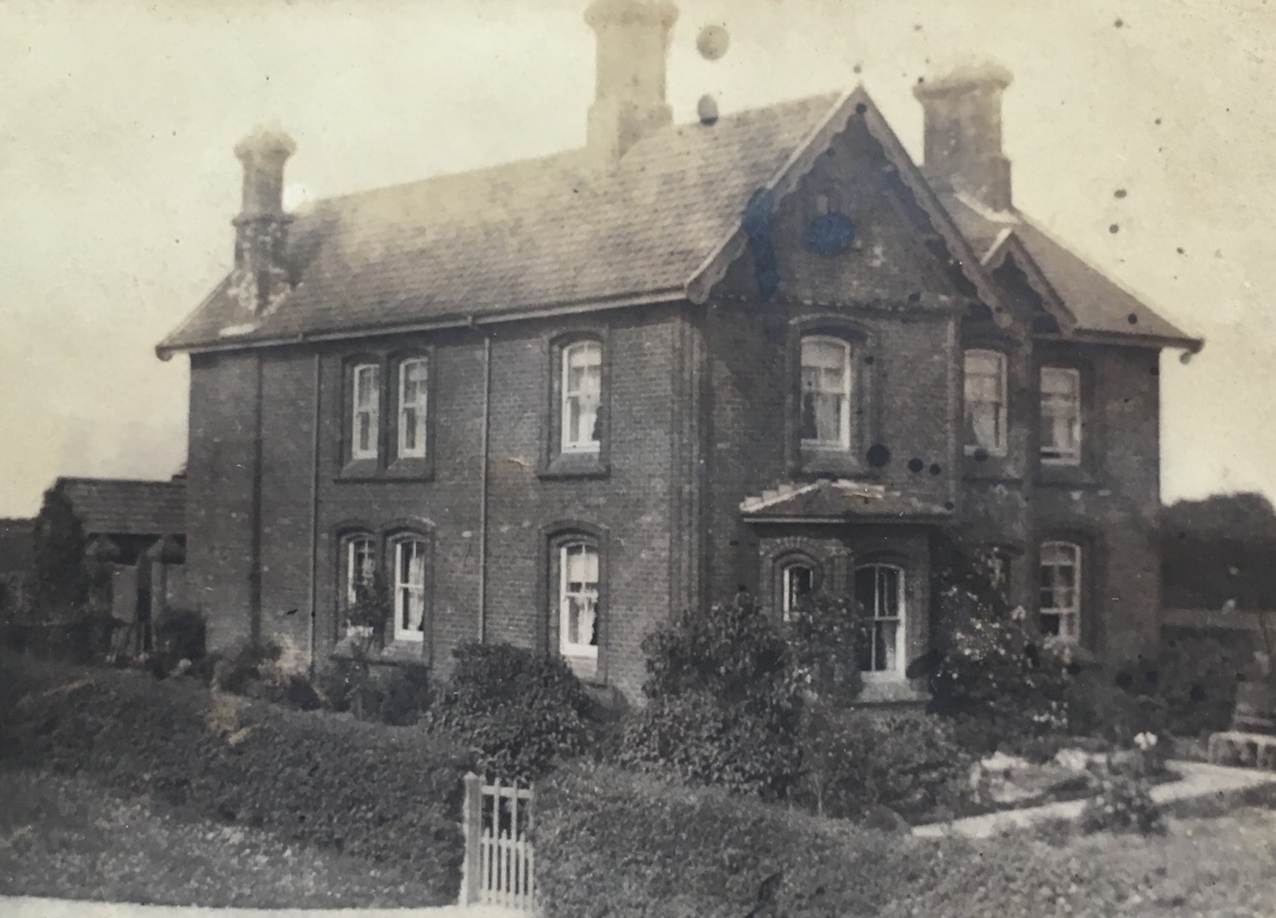
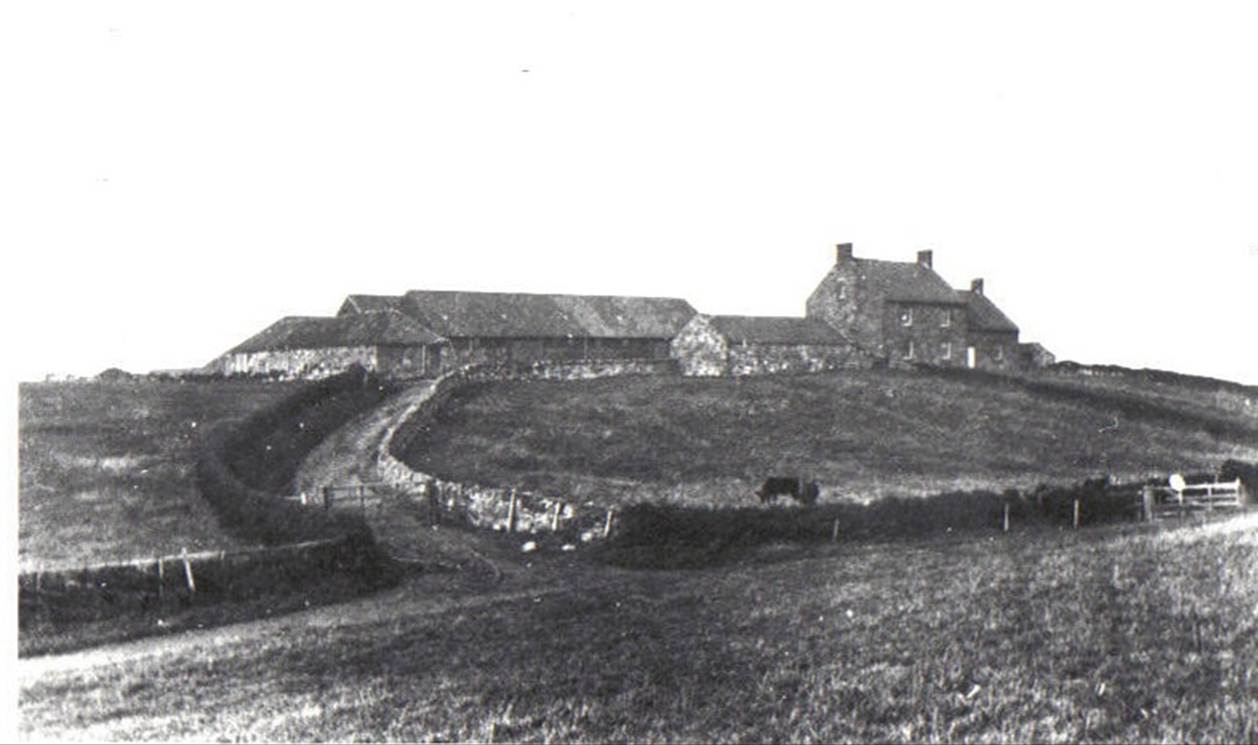
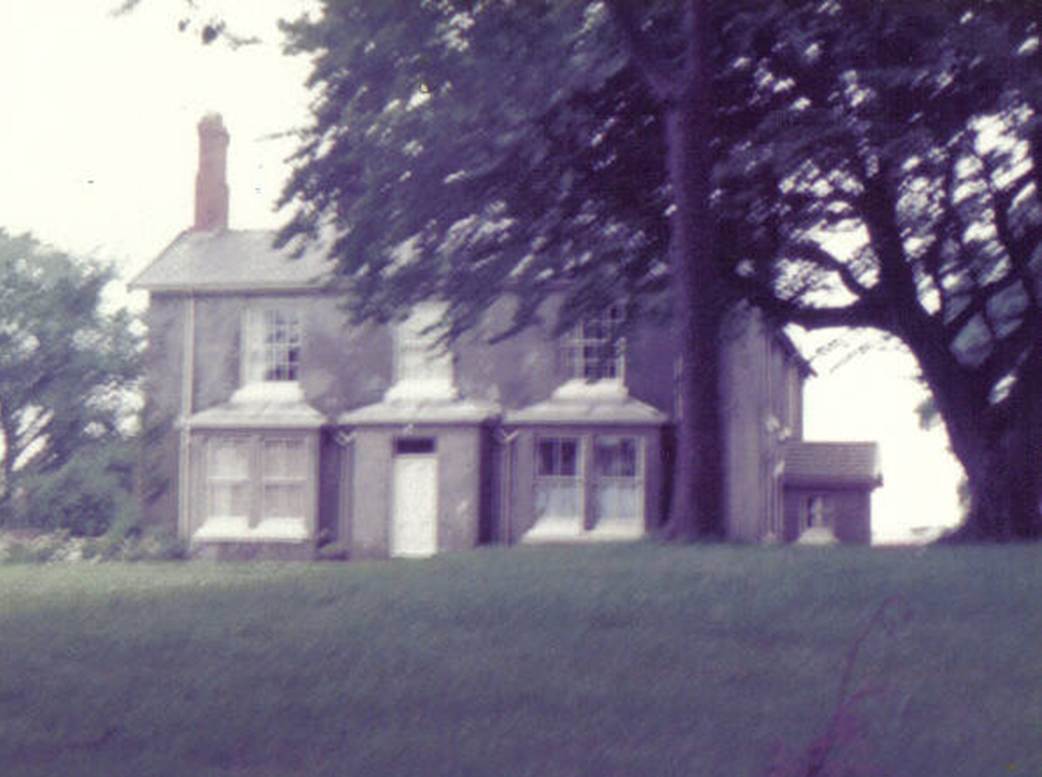
Kilton Lodge Farm
in about 1920
Buck Rush Farm about 1912 (it was part of Kilton Lodge Farm under
Charles Farndale) Kilton Hall
1980

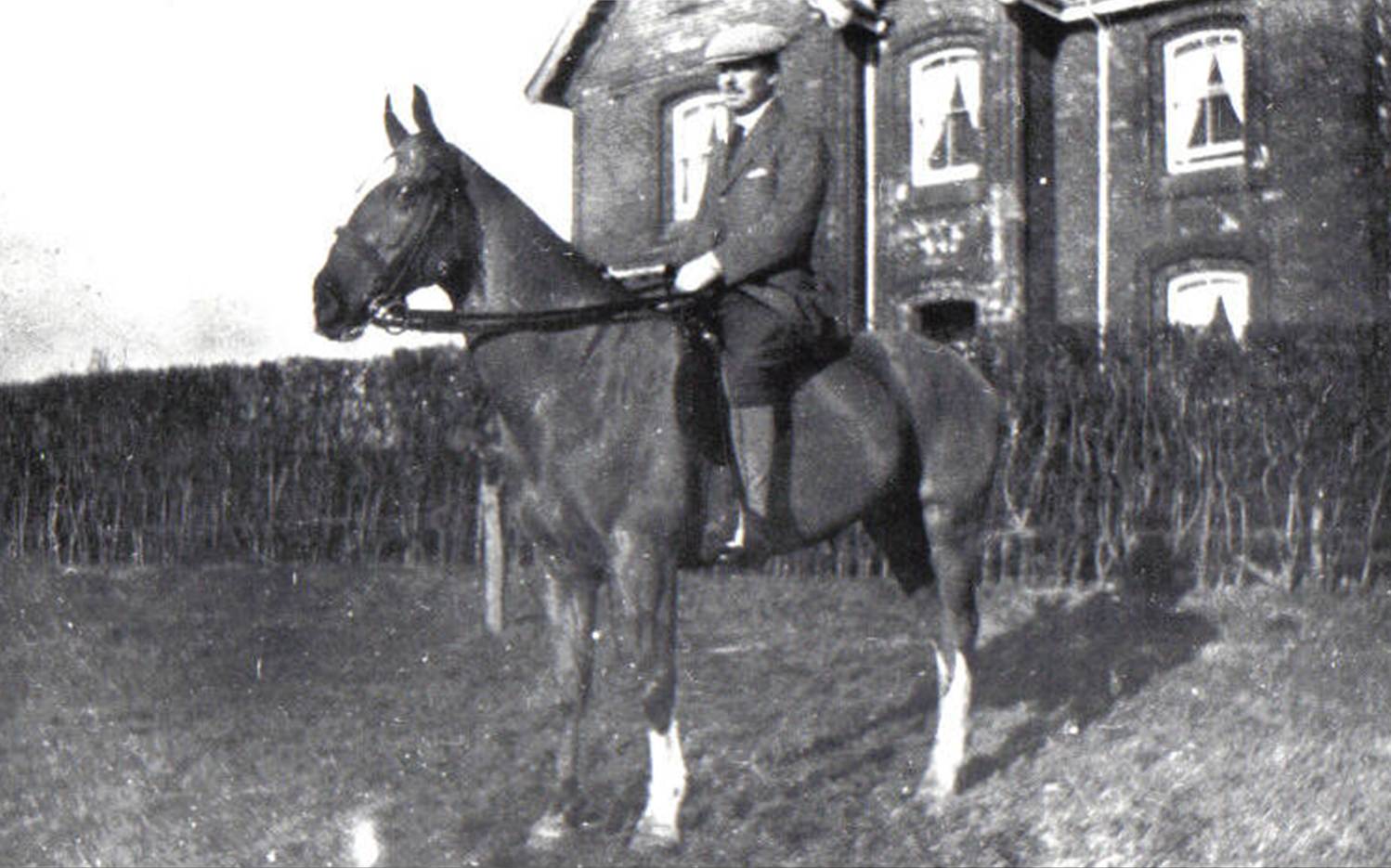
Kilton Lodge
about 1925 - George and Grace Farndale (whose father was Charles) sitting Photo of George
Farndale taken about 1925
By 1939, George
Farndale was living at Stank House in Kilton, with his sister Grace. They
continued to be involved with the local Wesleyan Church.
In 1940 George
sold the stock at Kilton and this appears to be the end of the Farndale
association with Kilton. He and his sister moved to Saltburn and George
Farndale died there in 1970.




